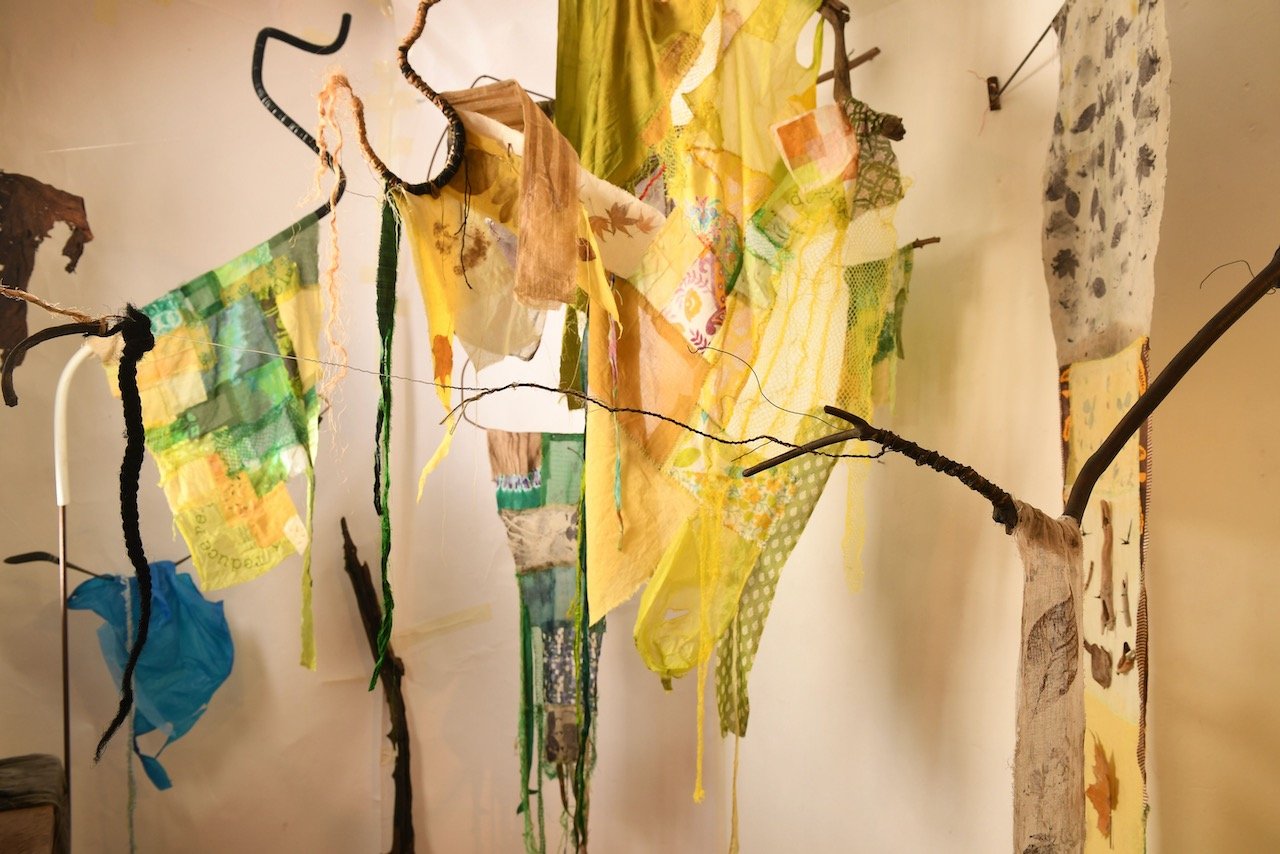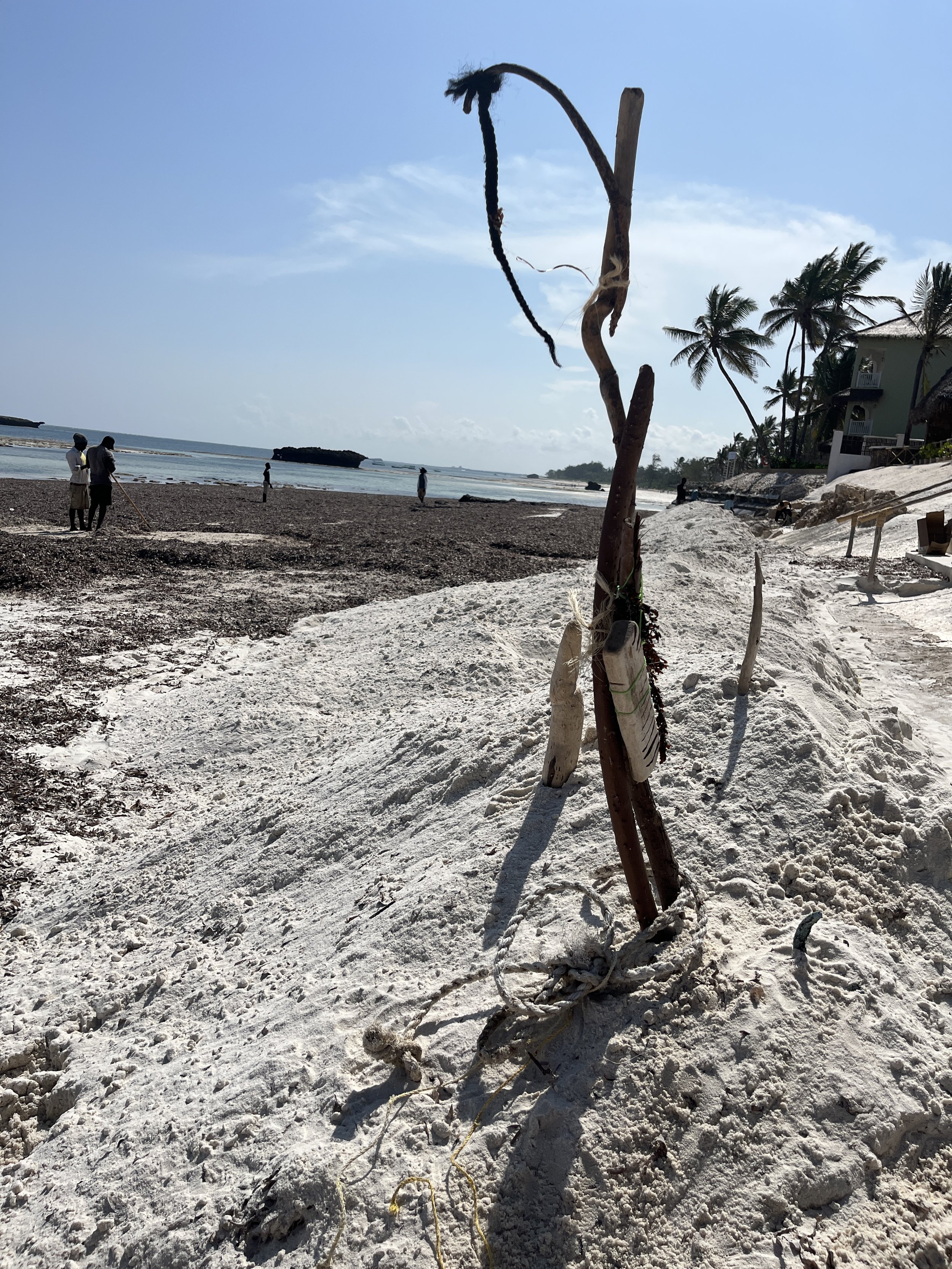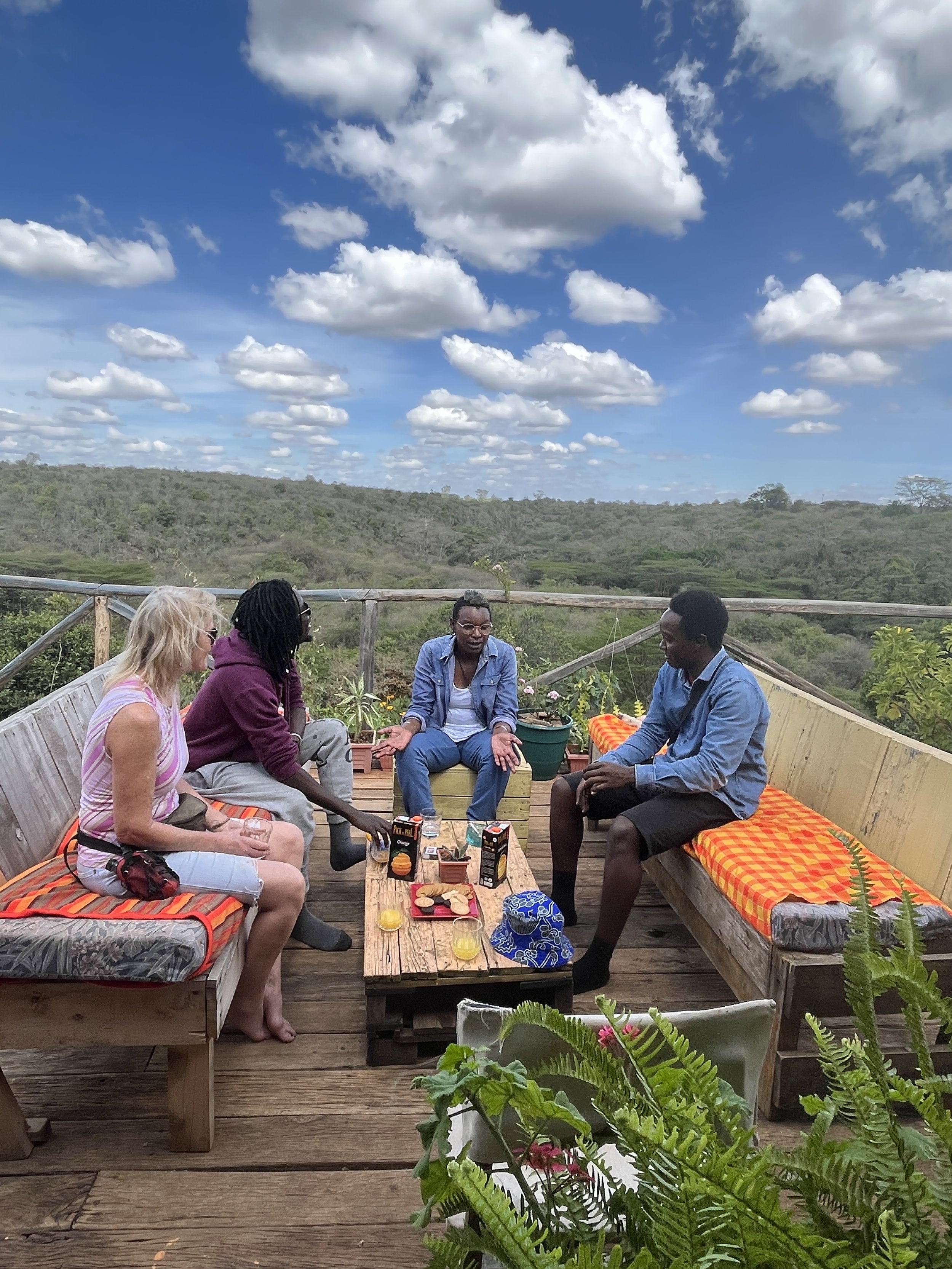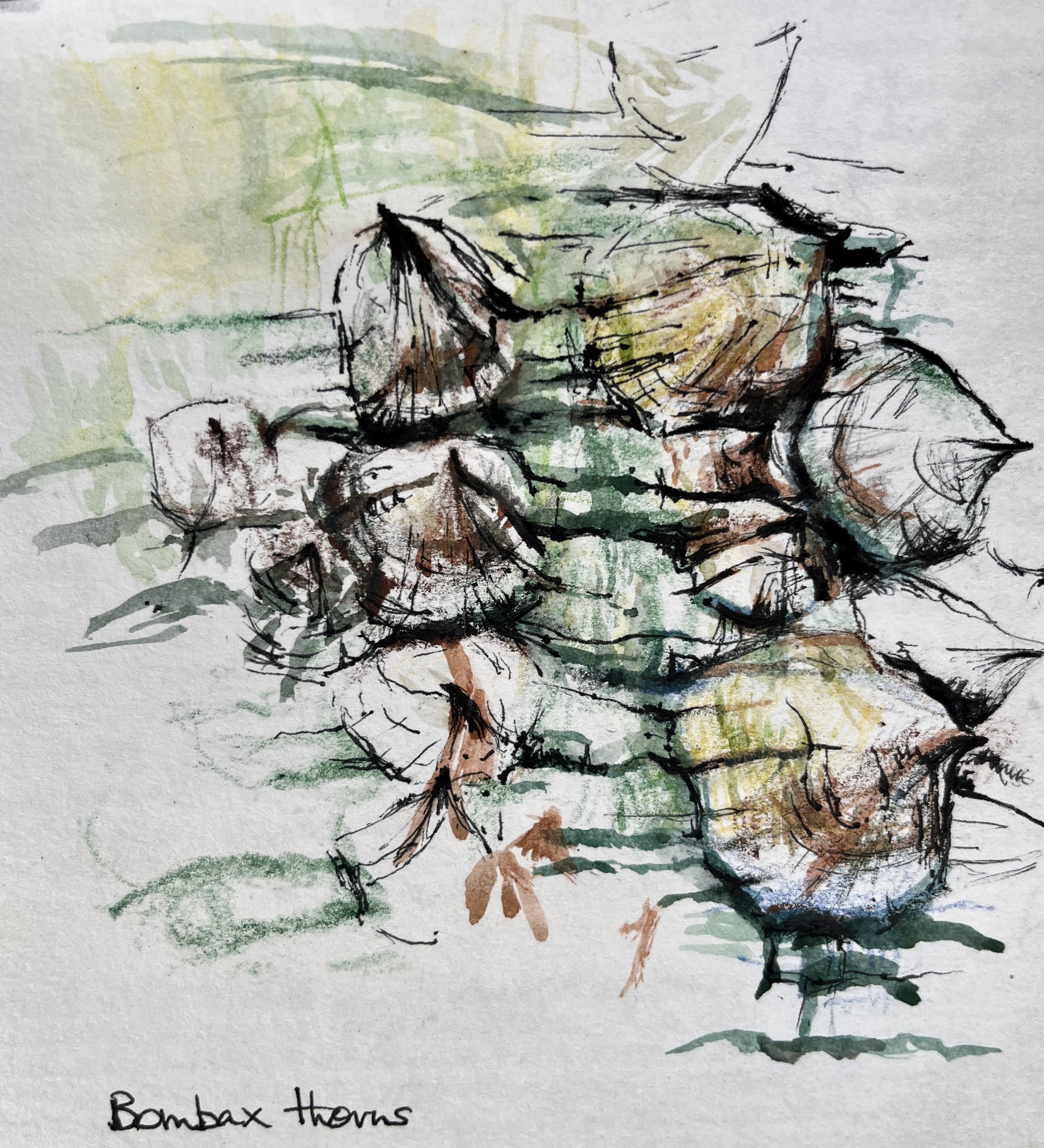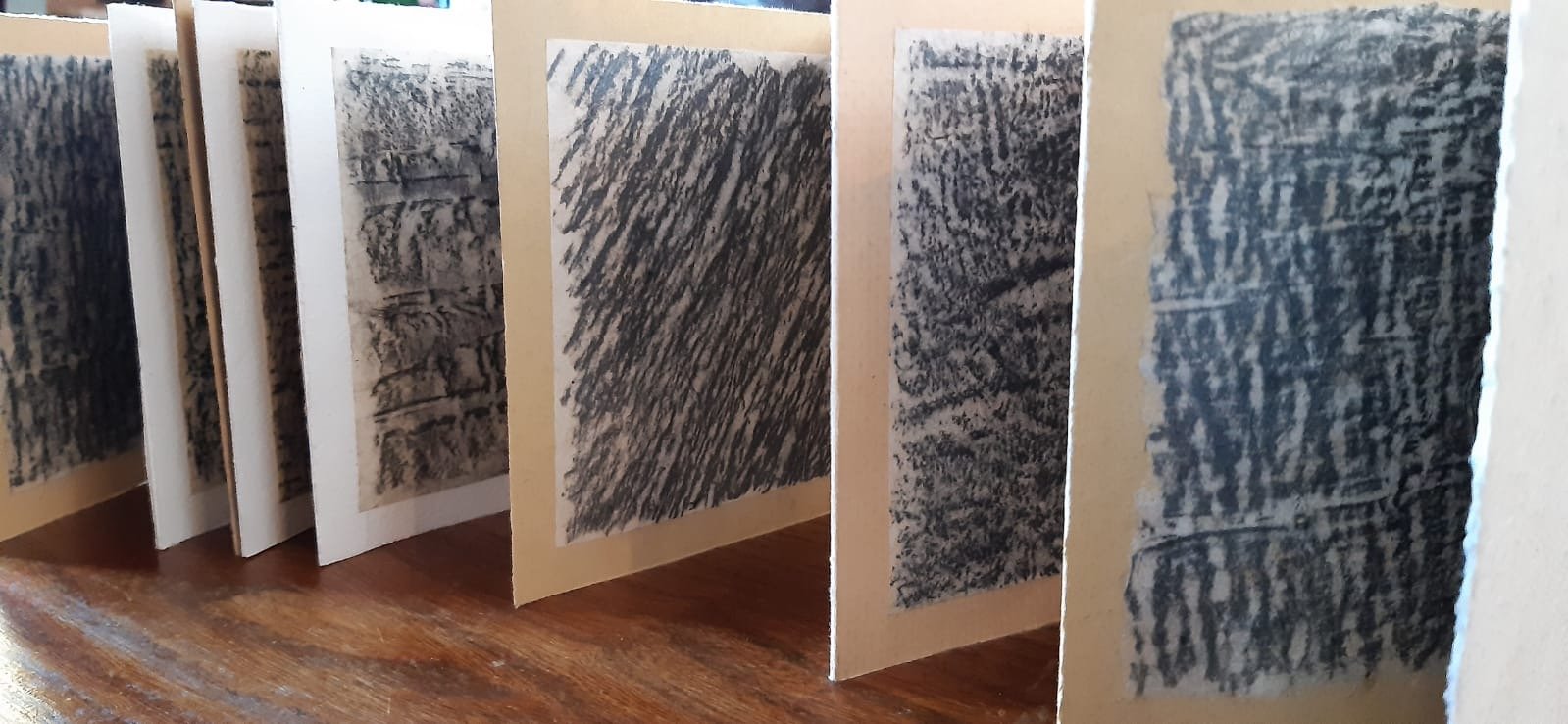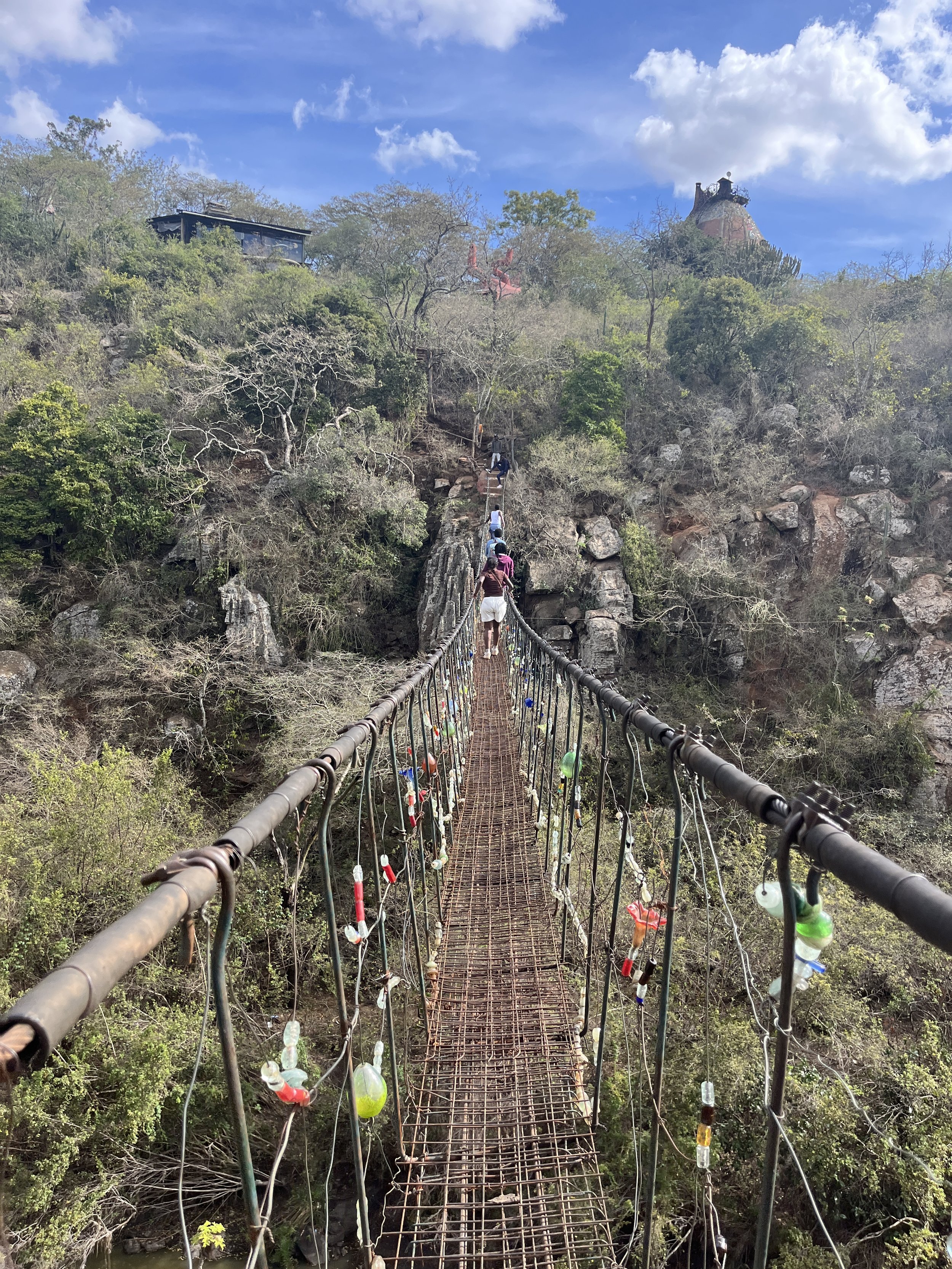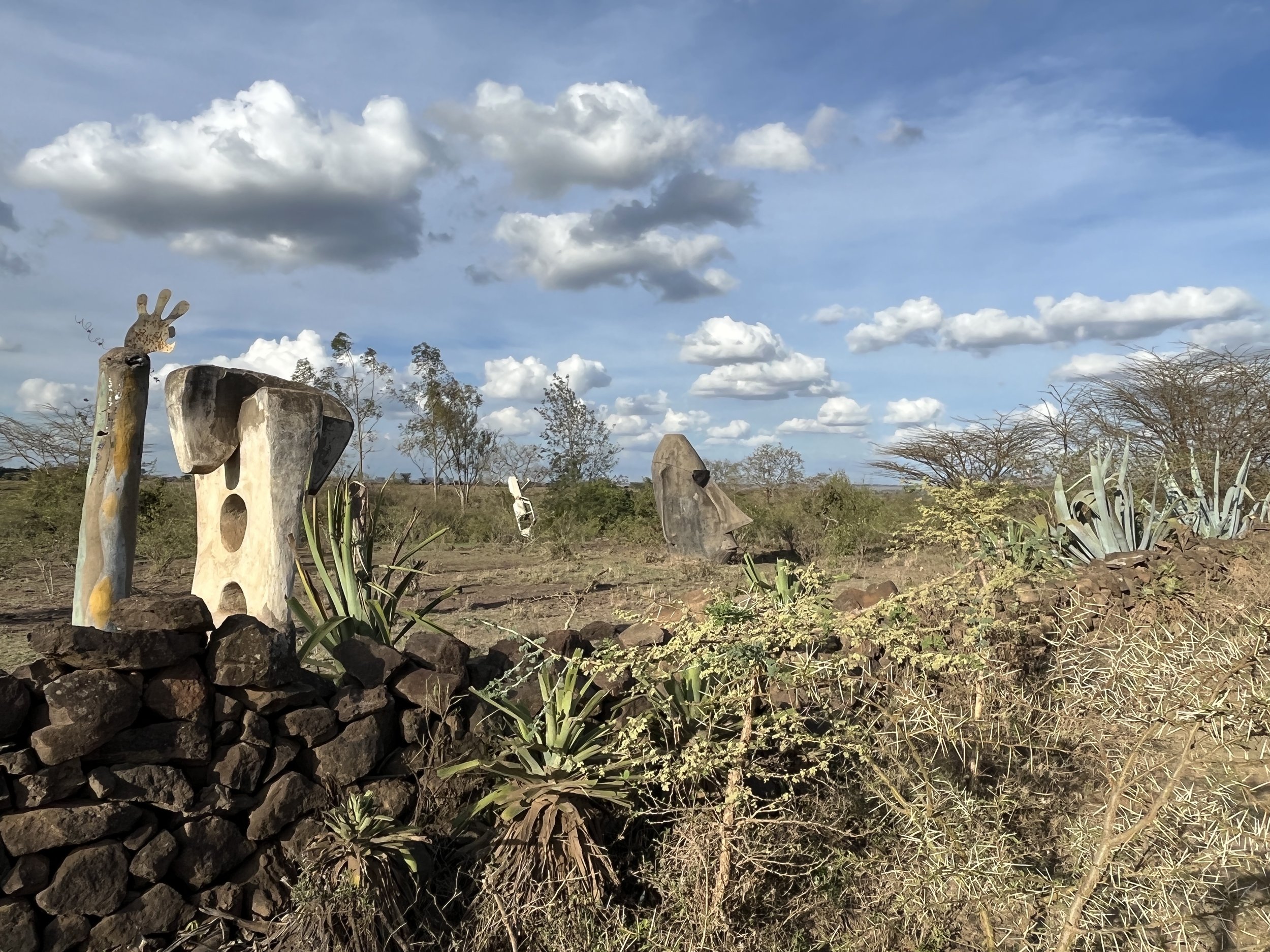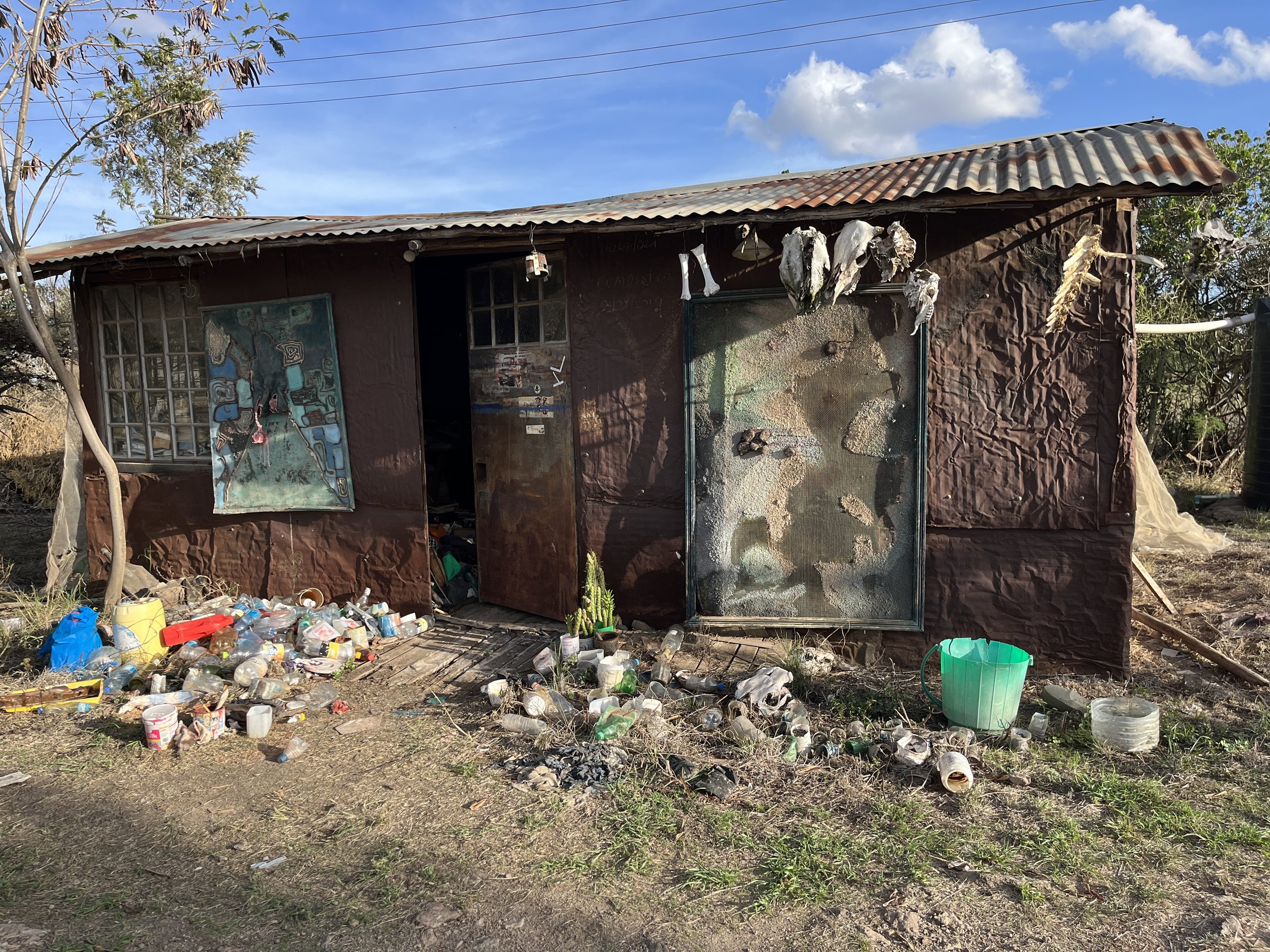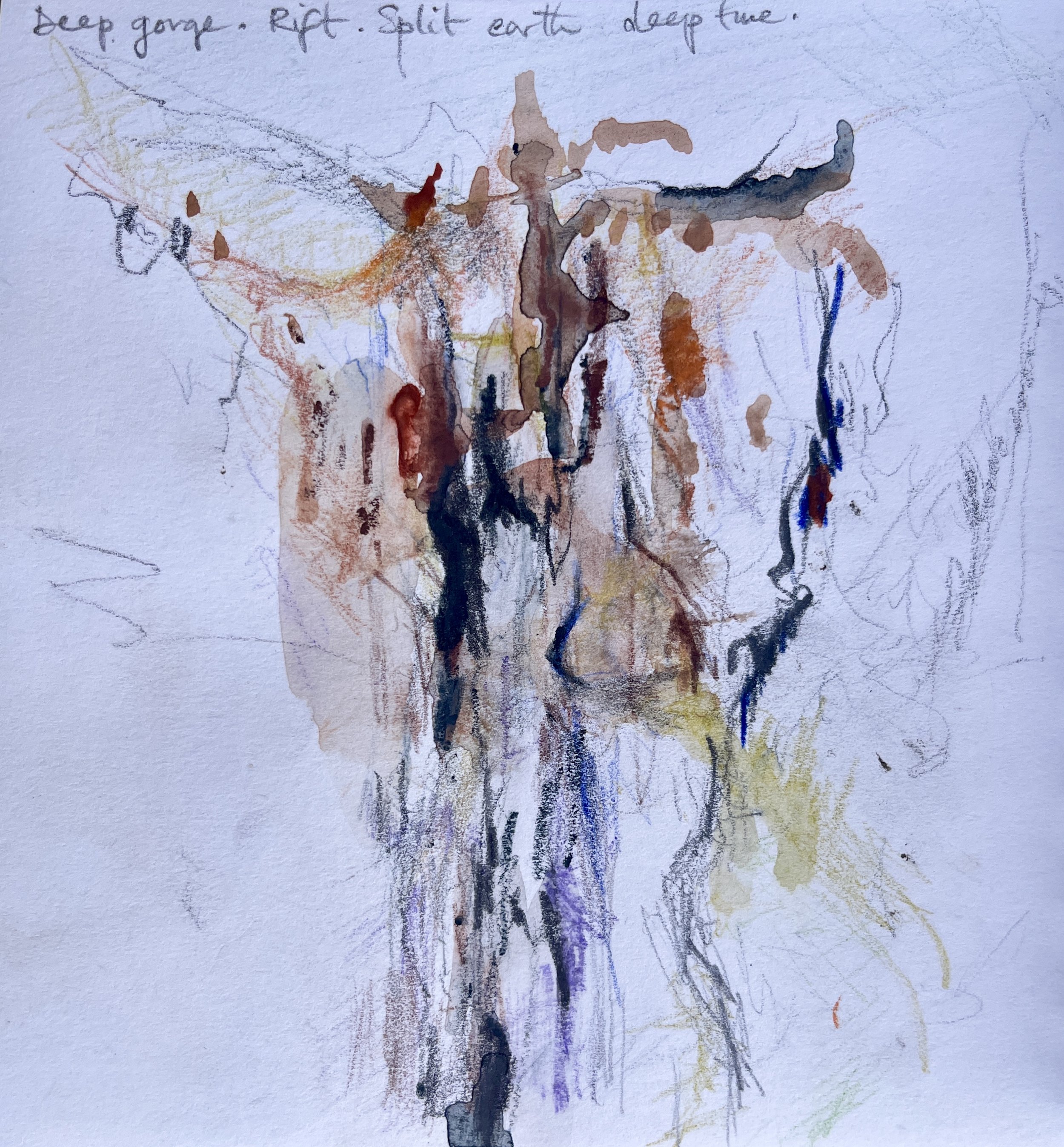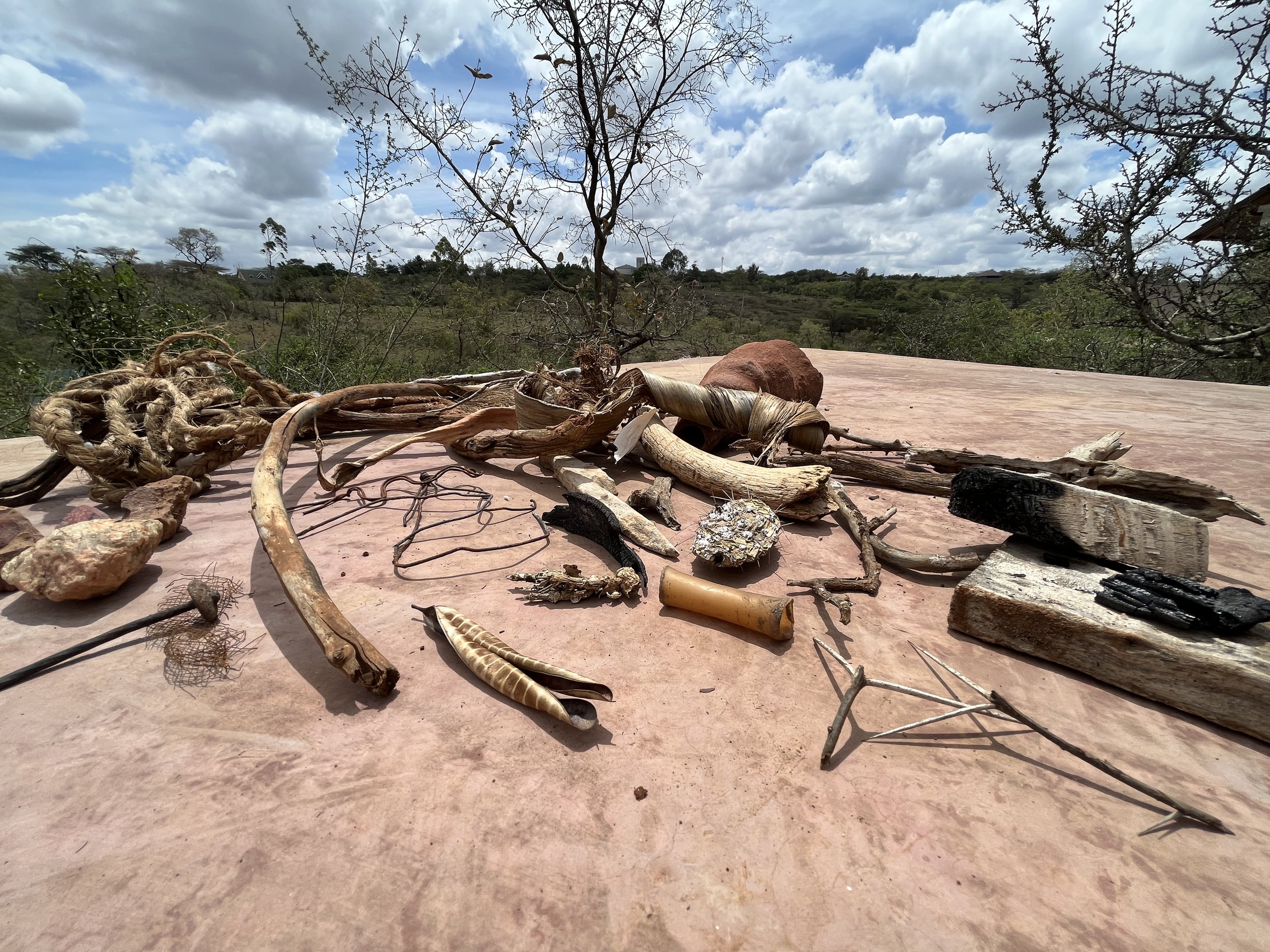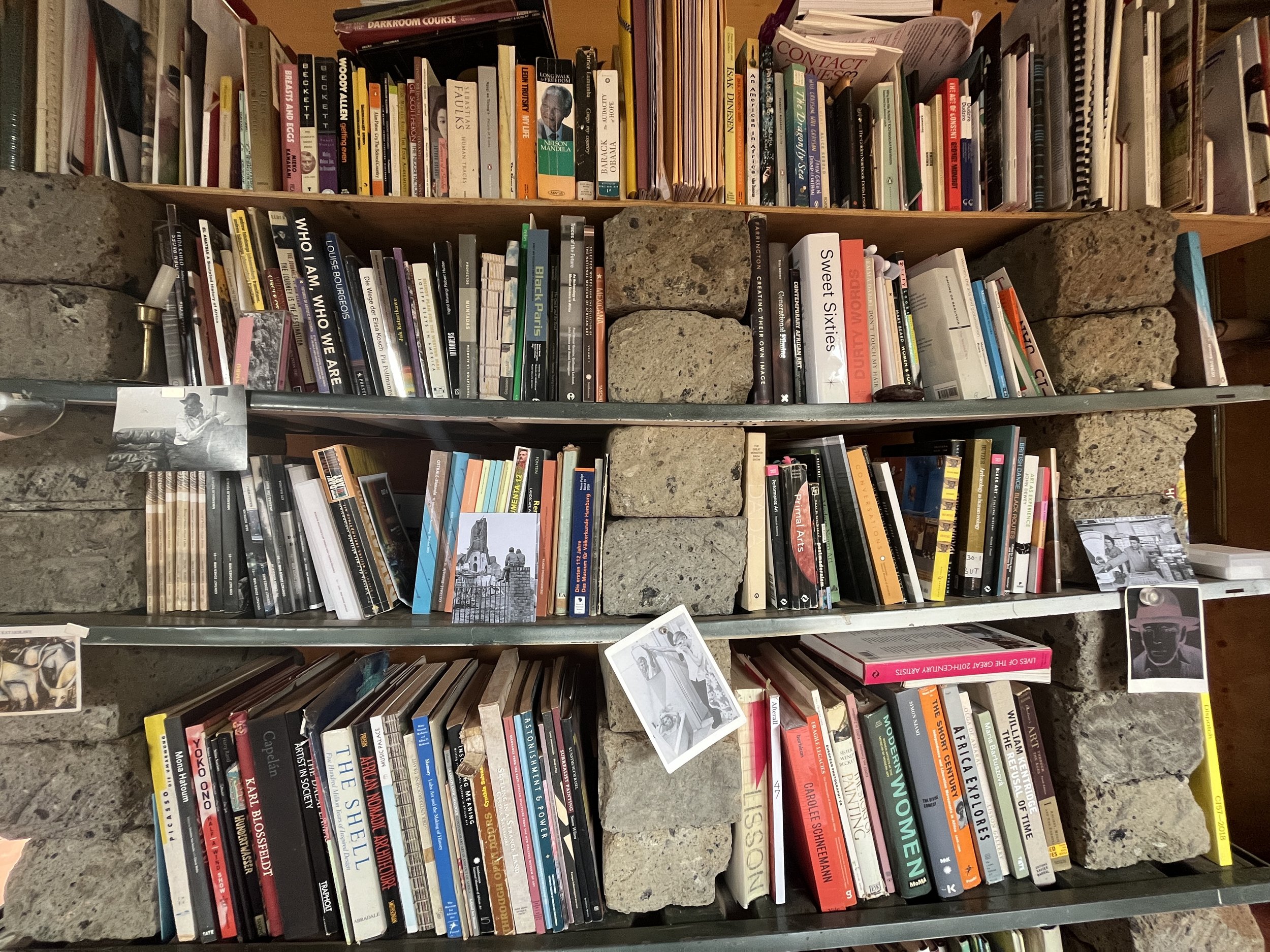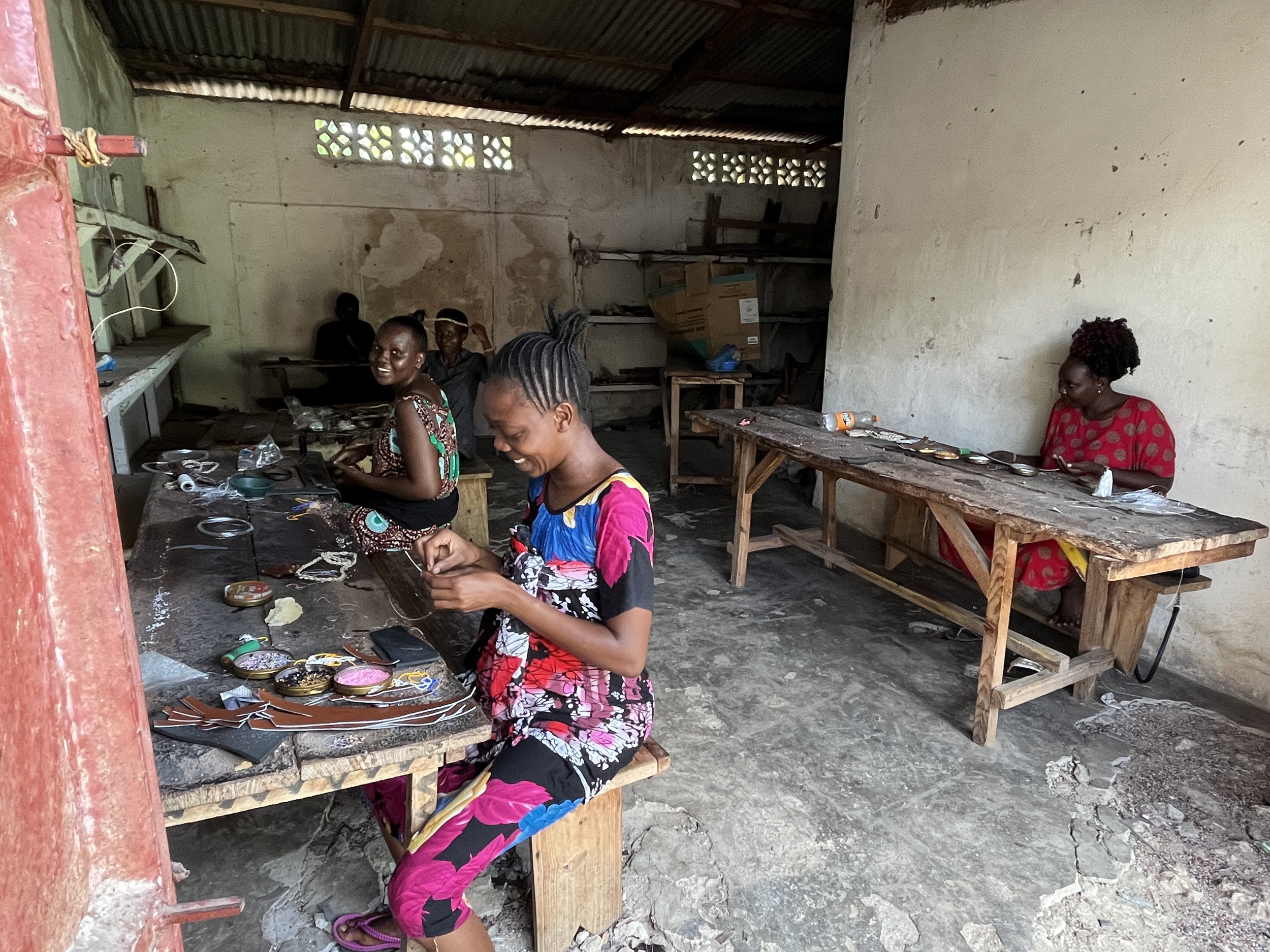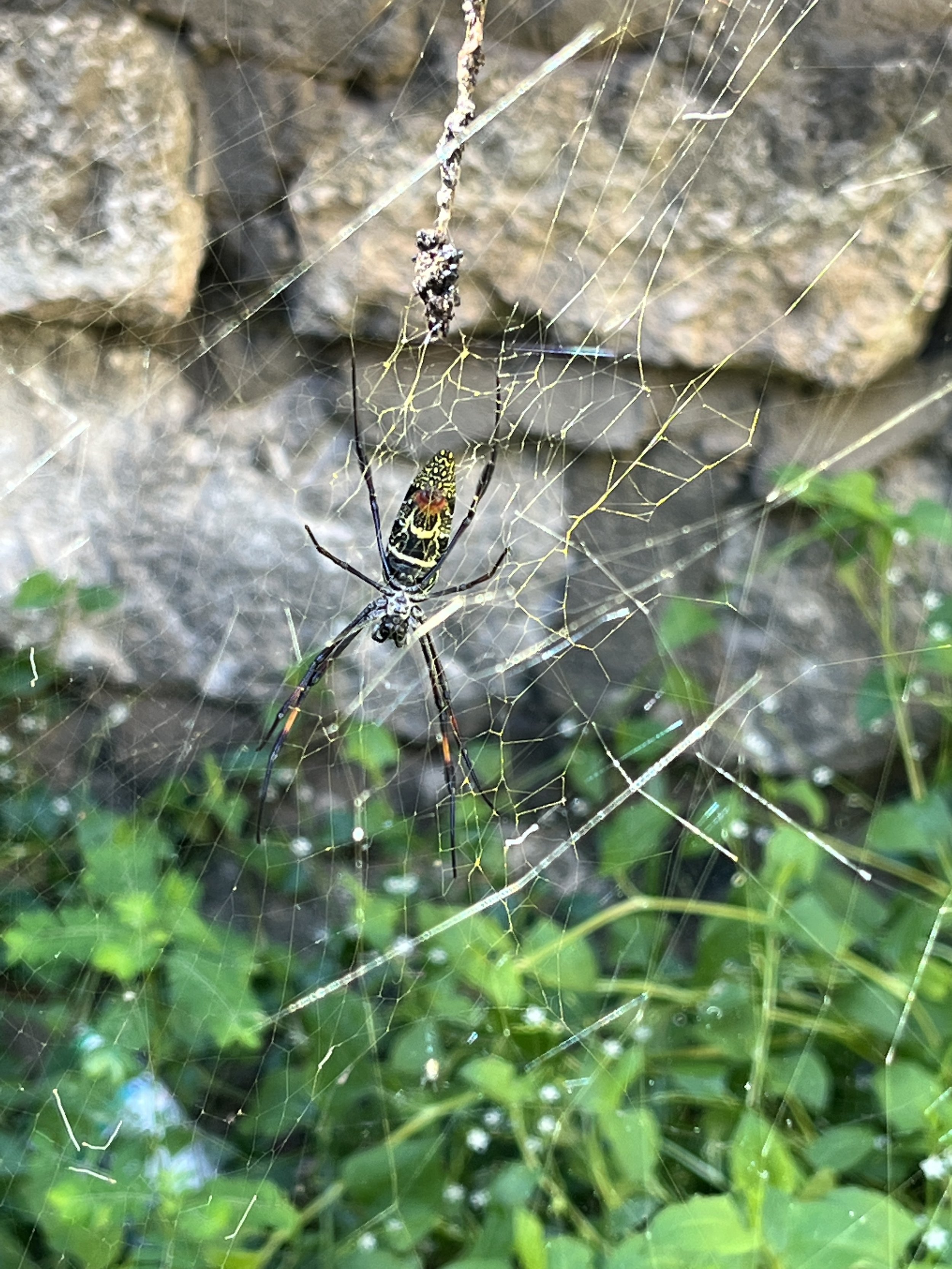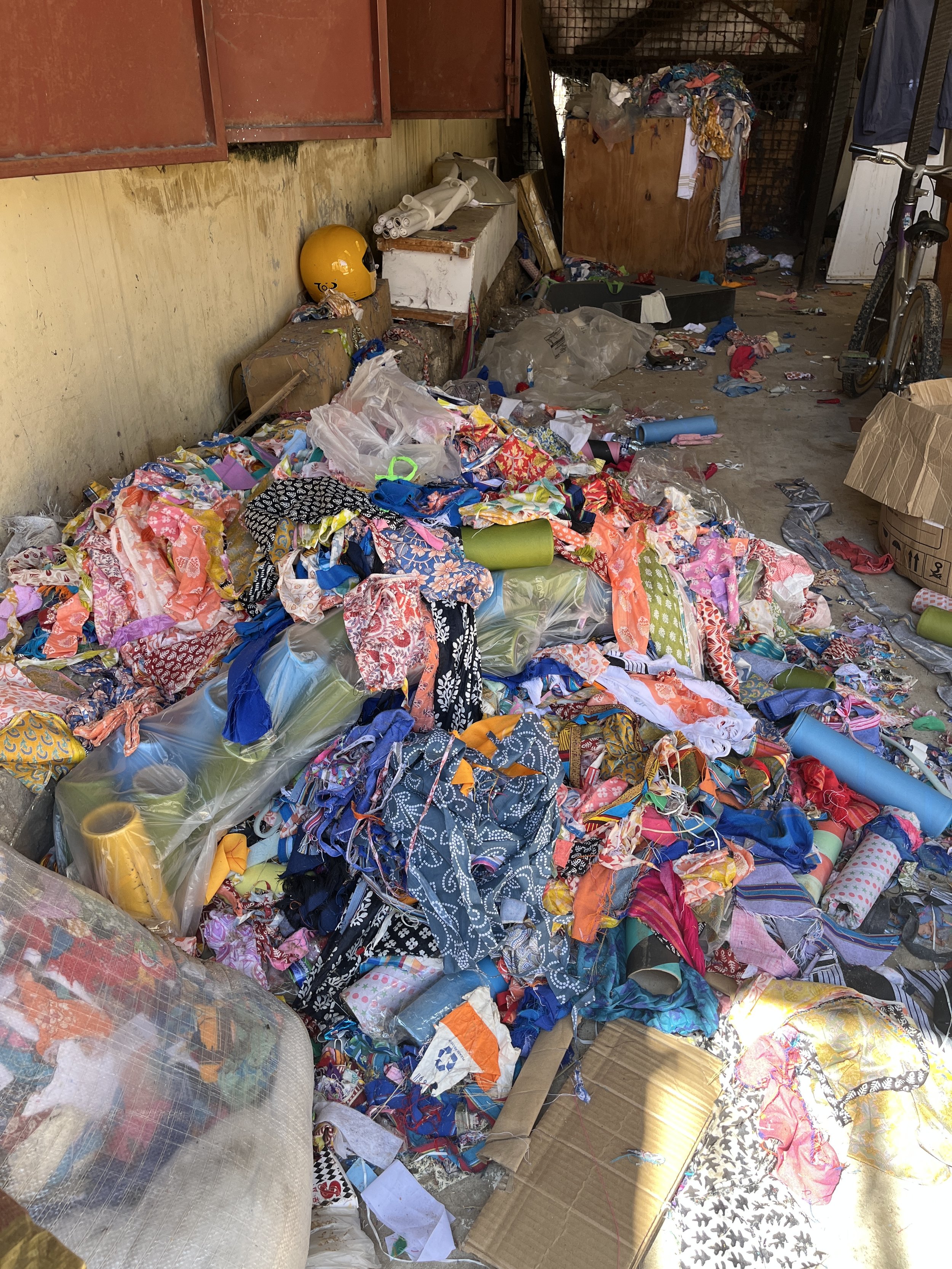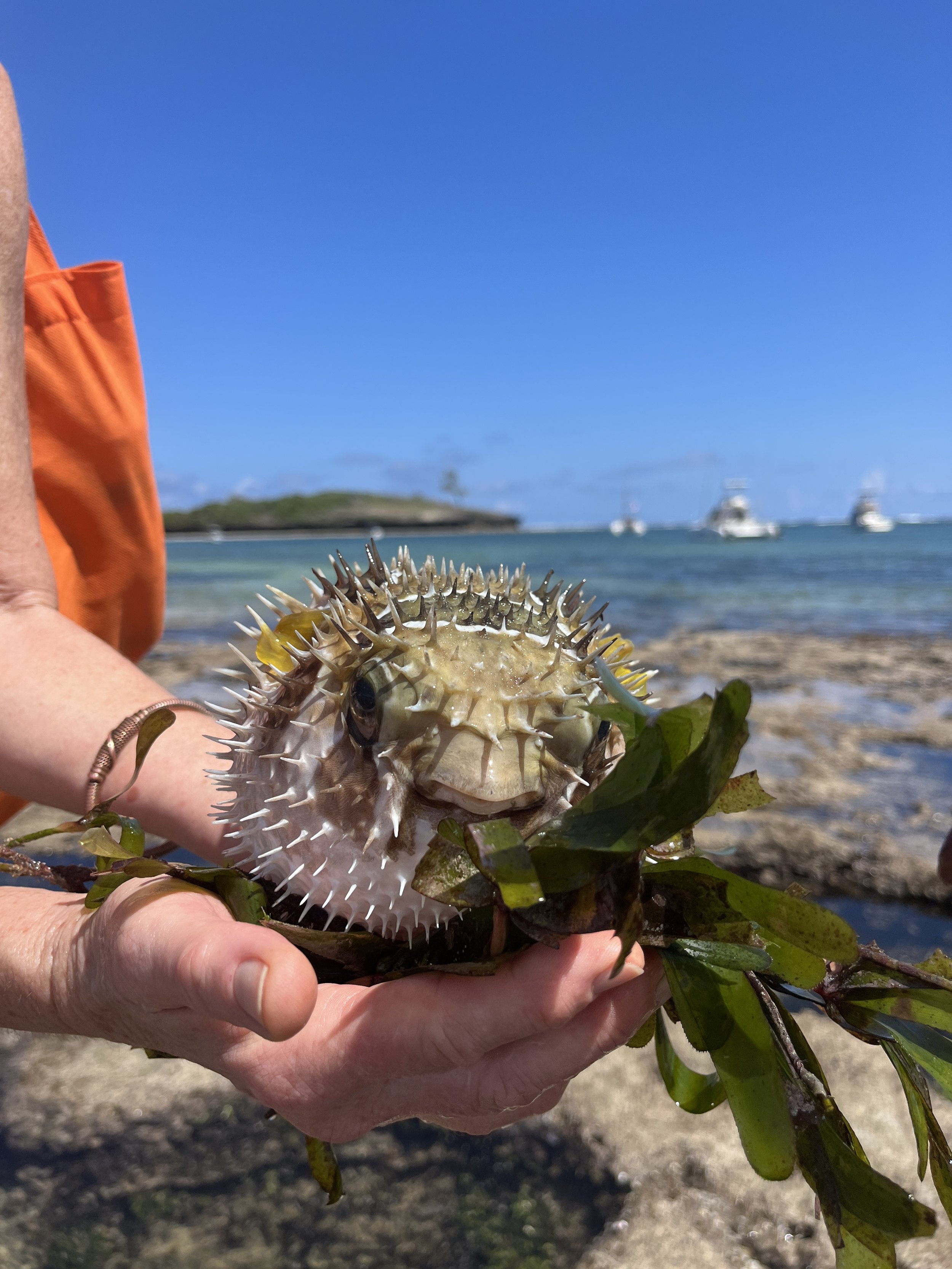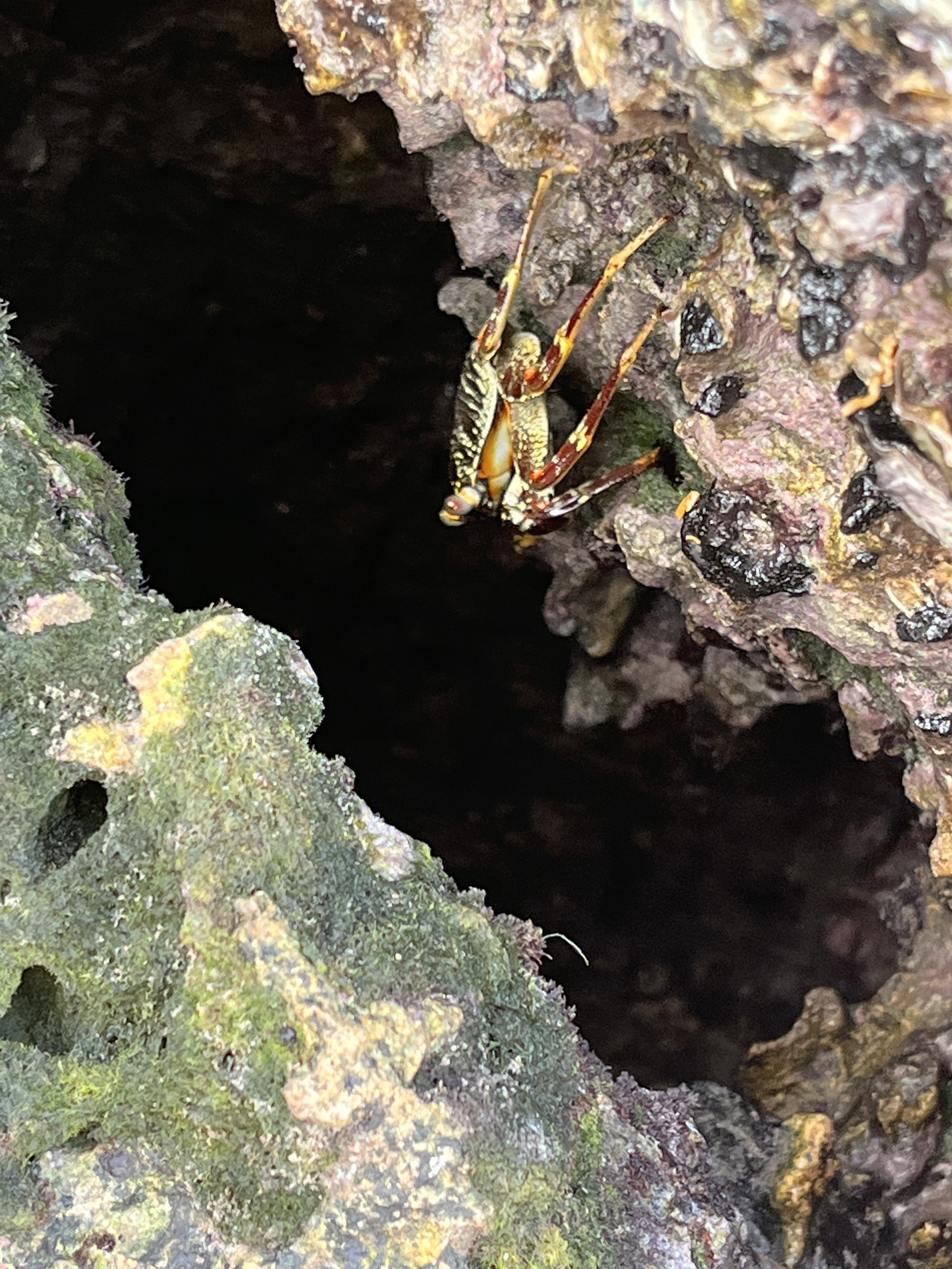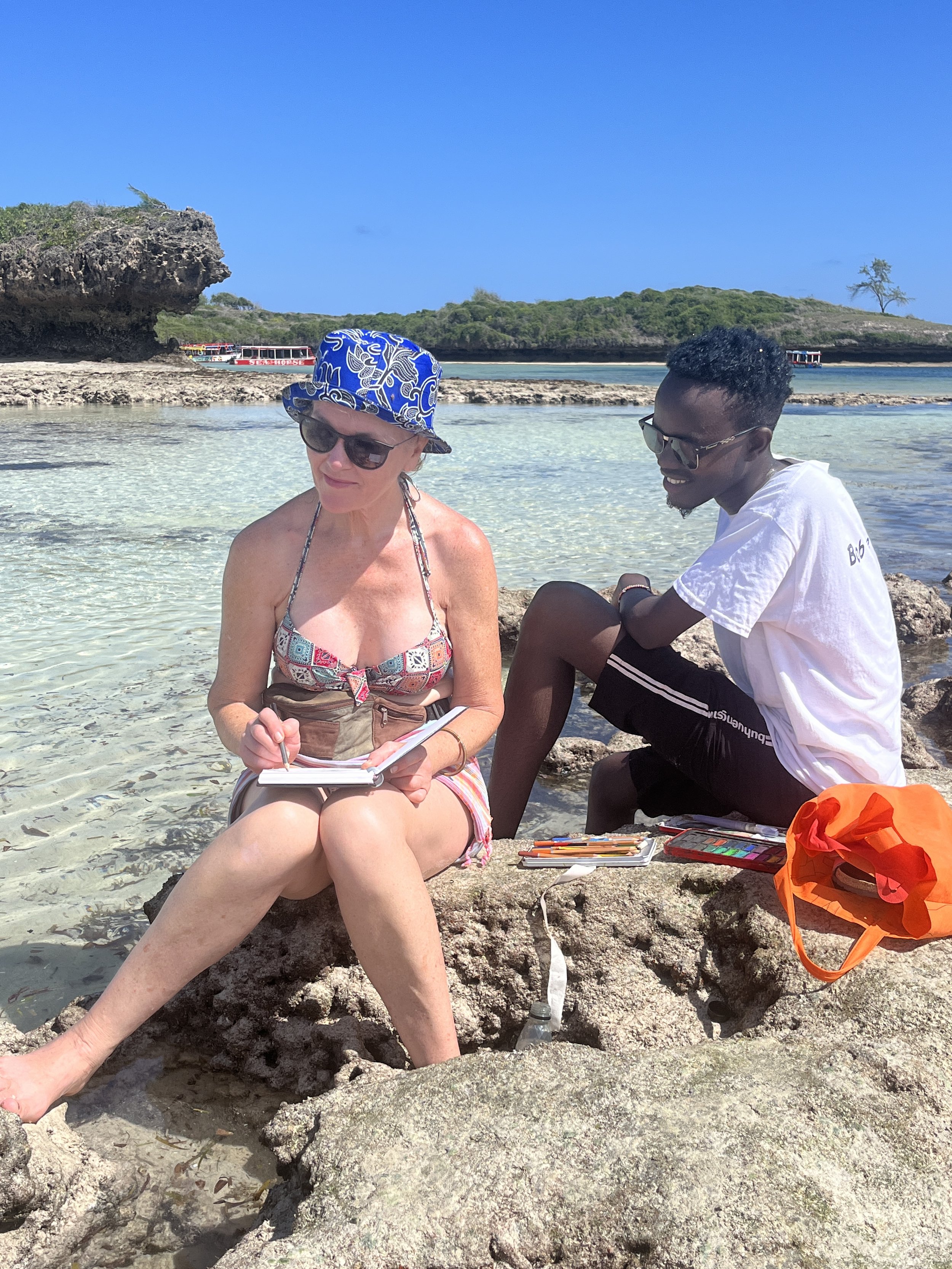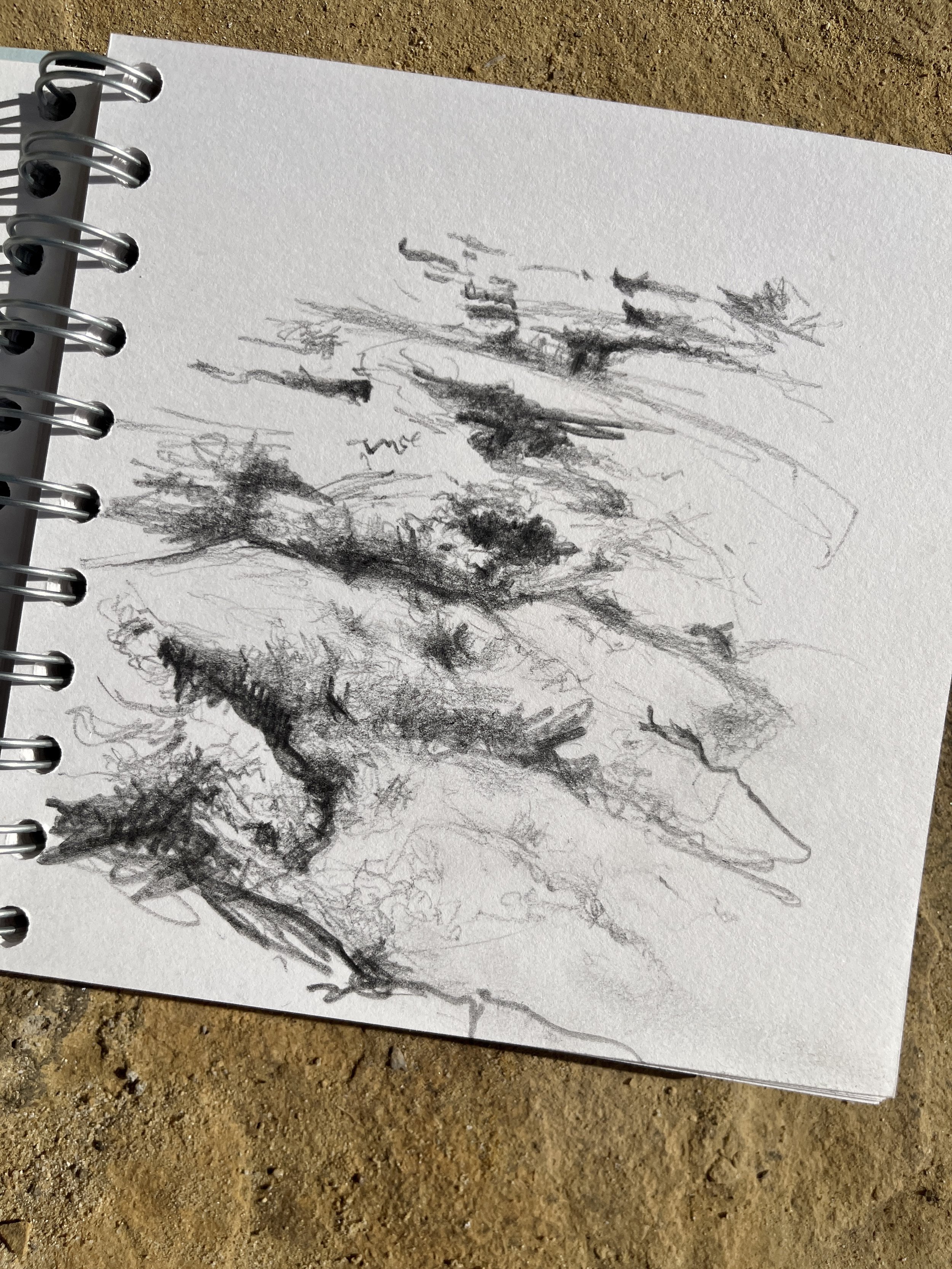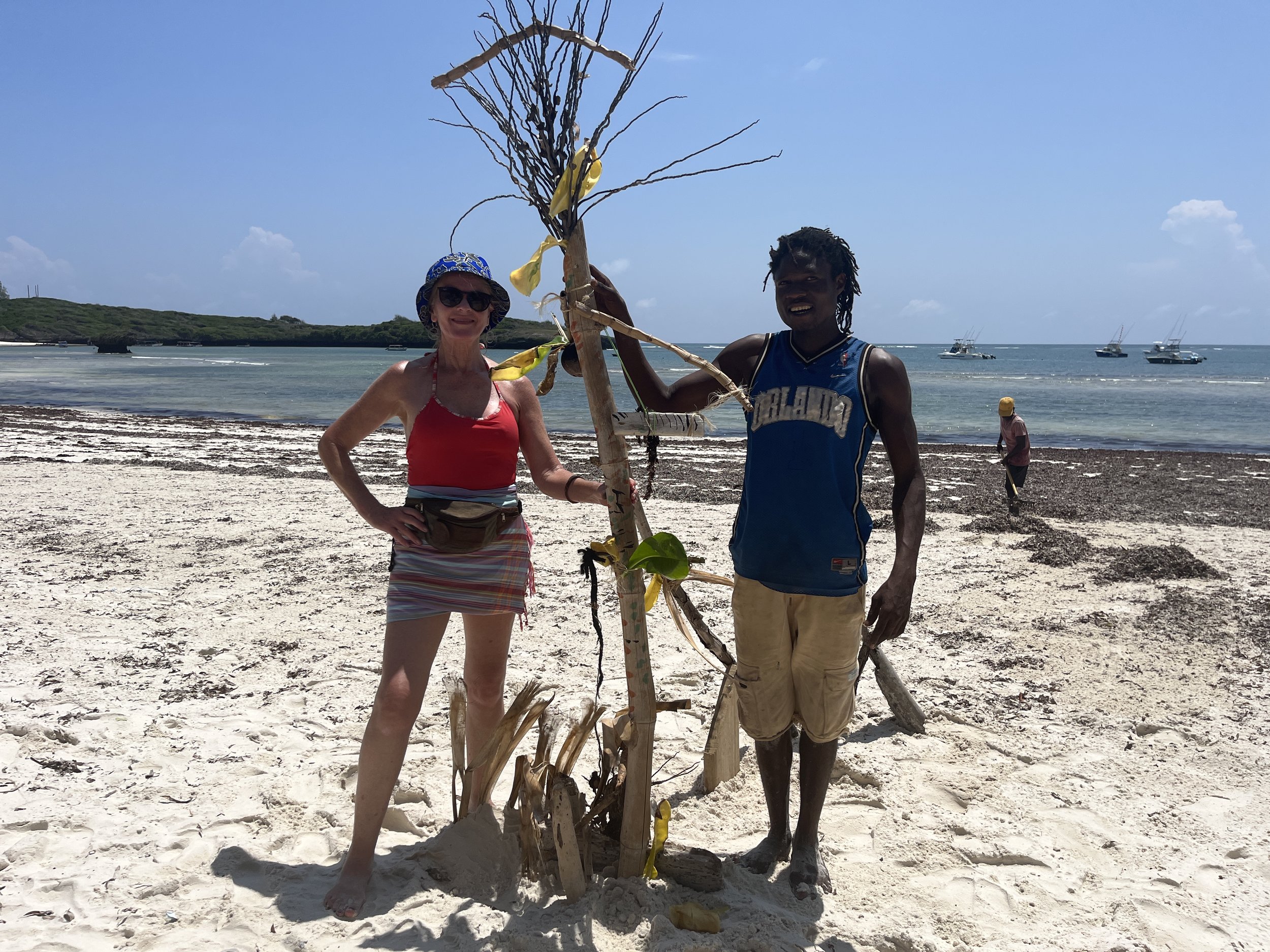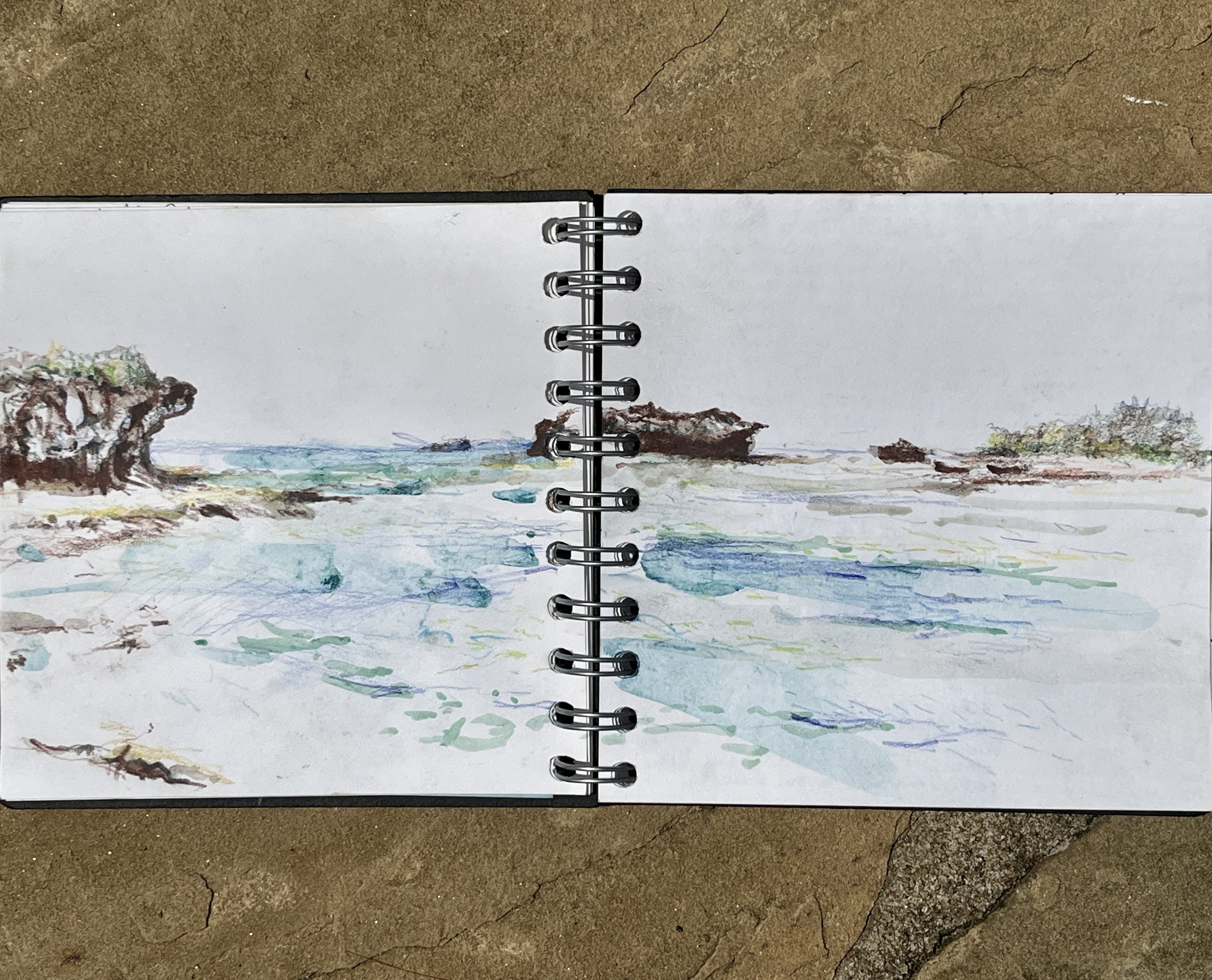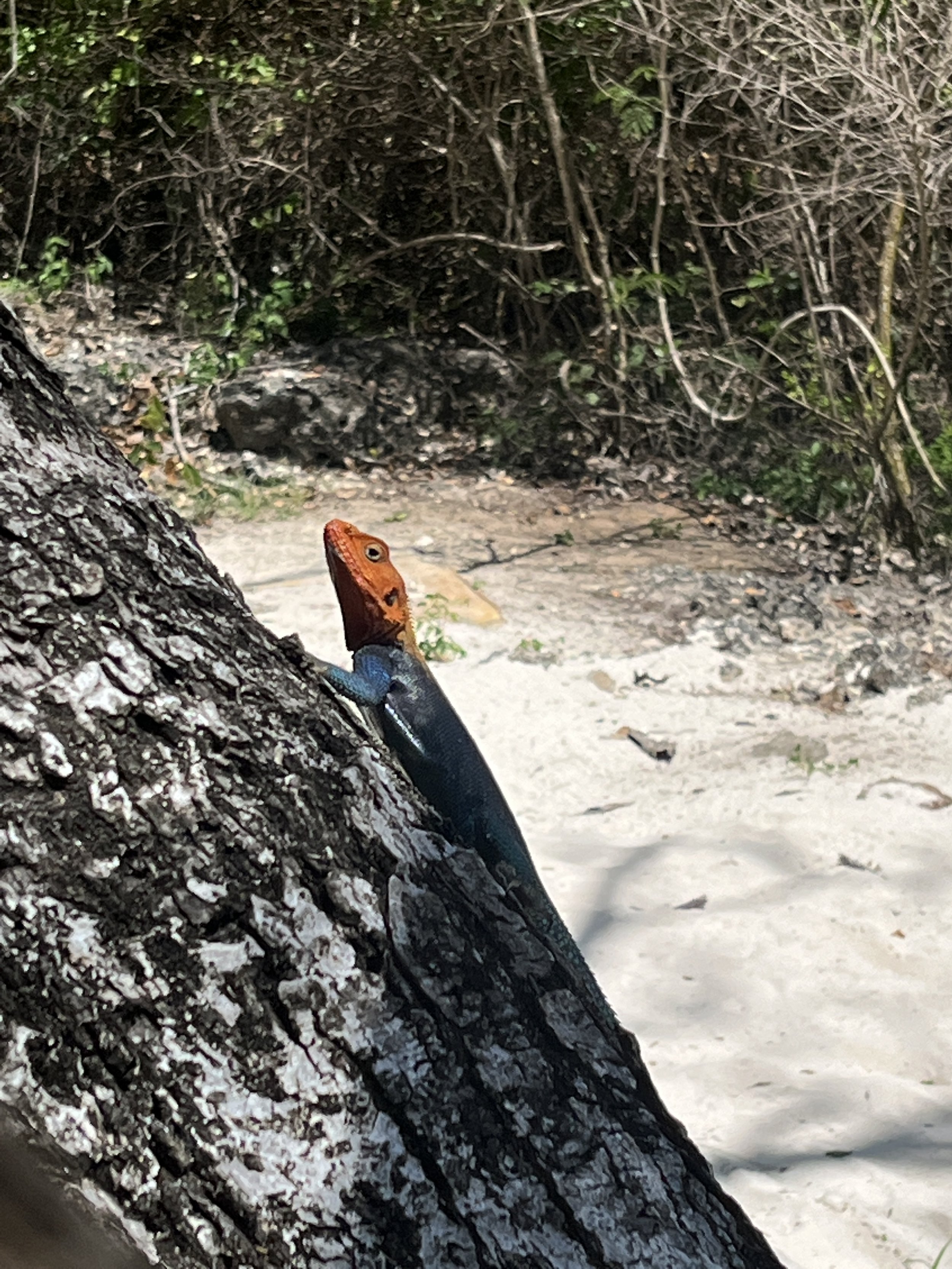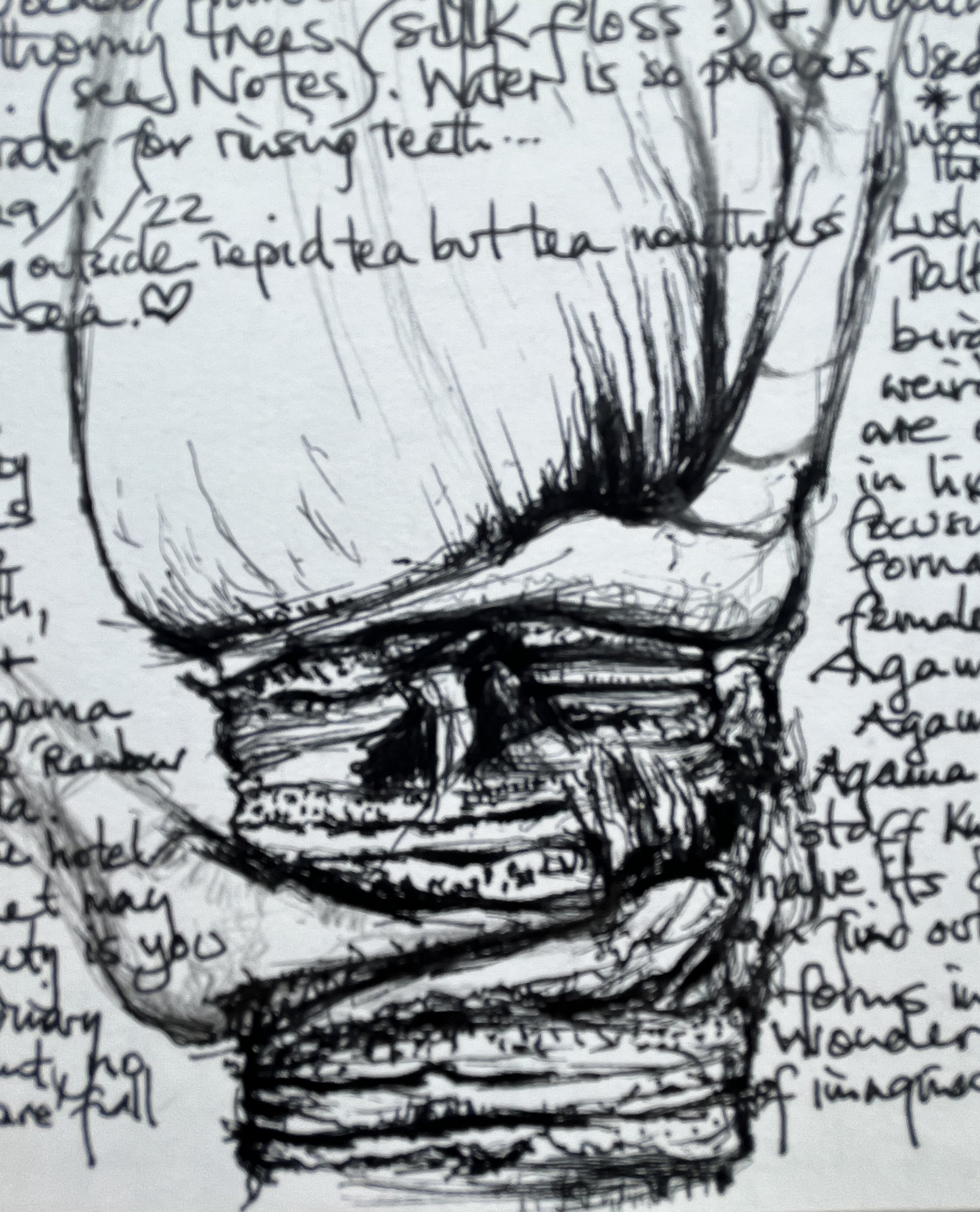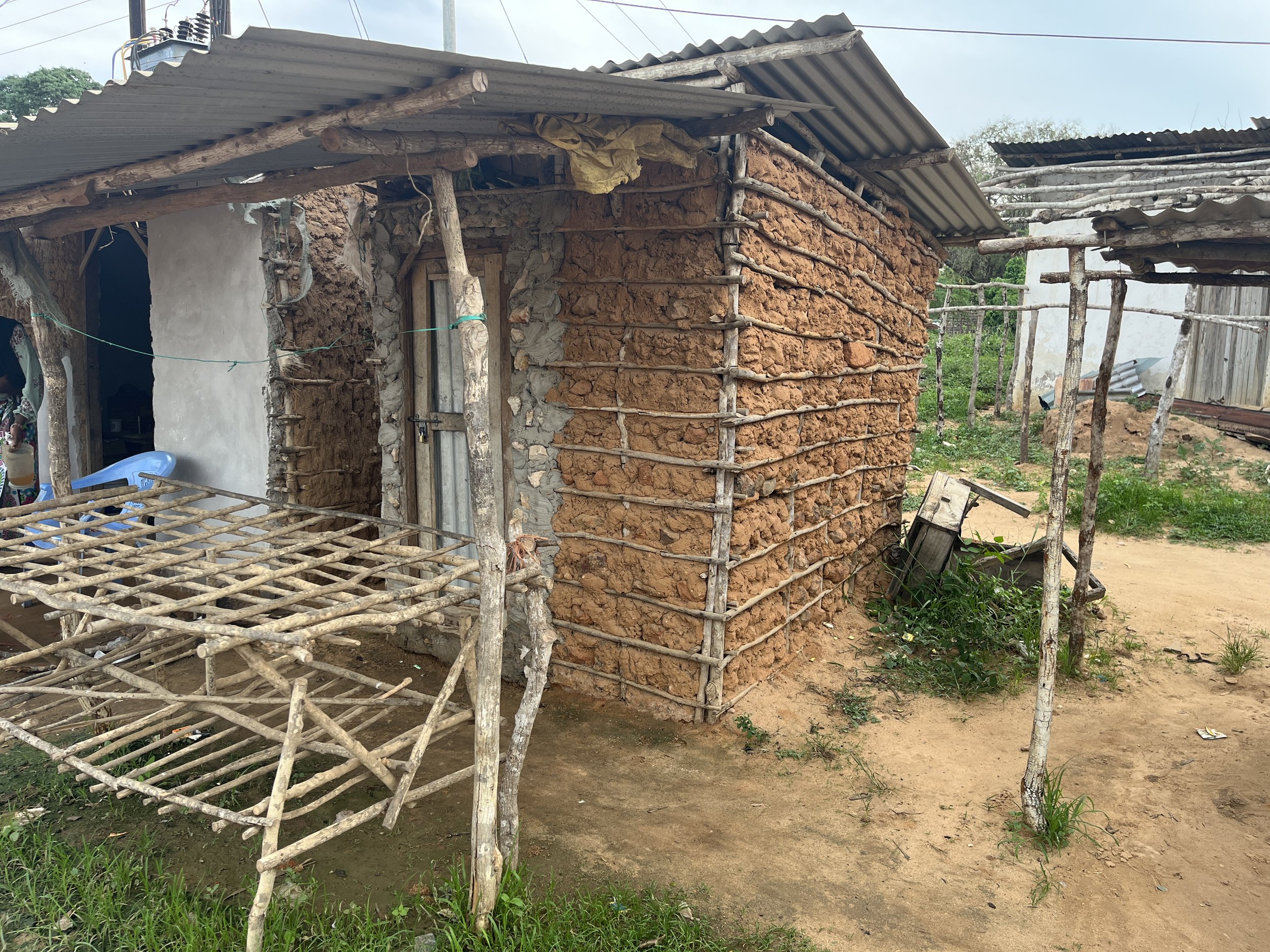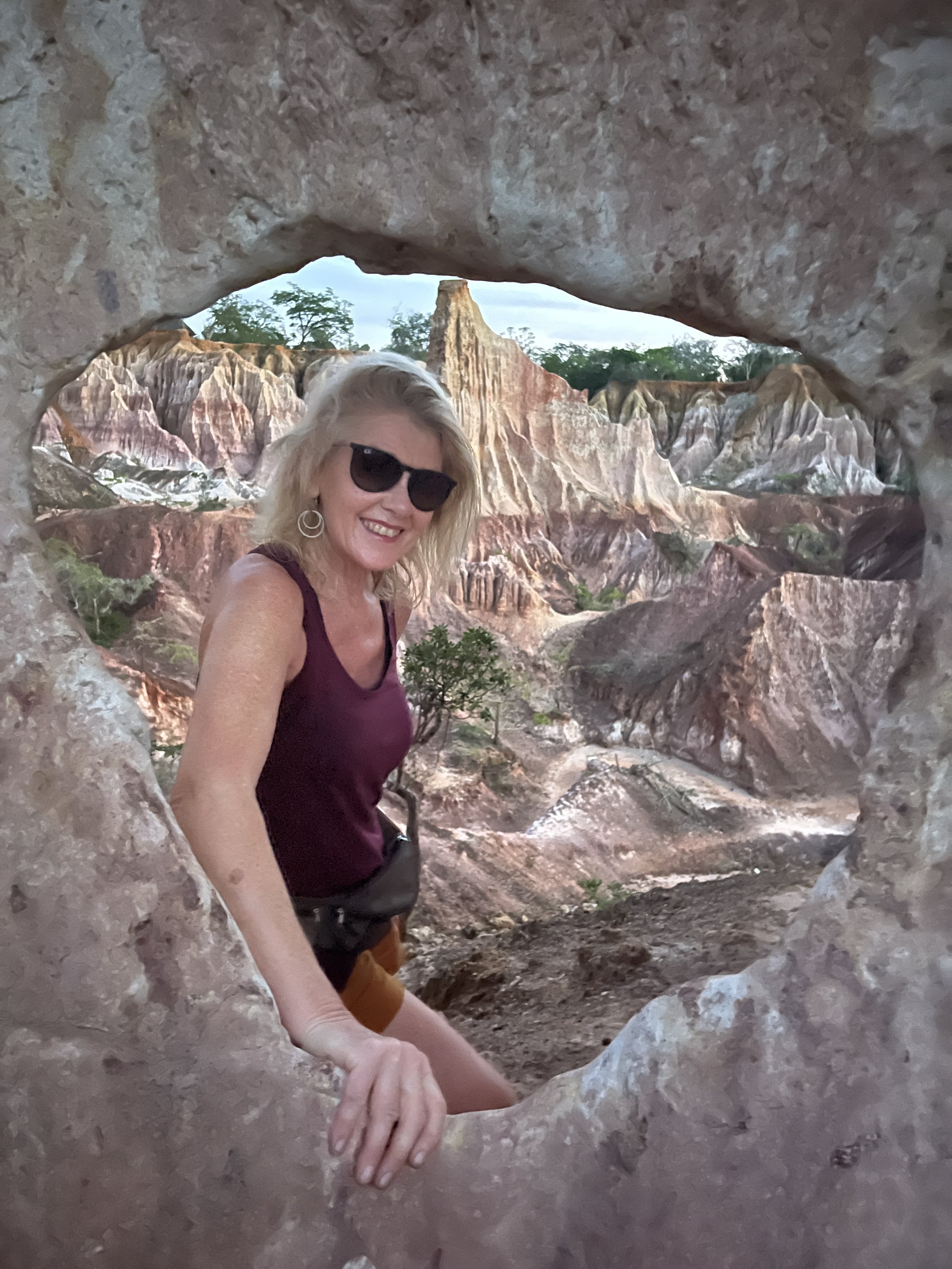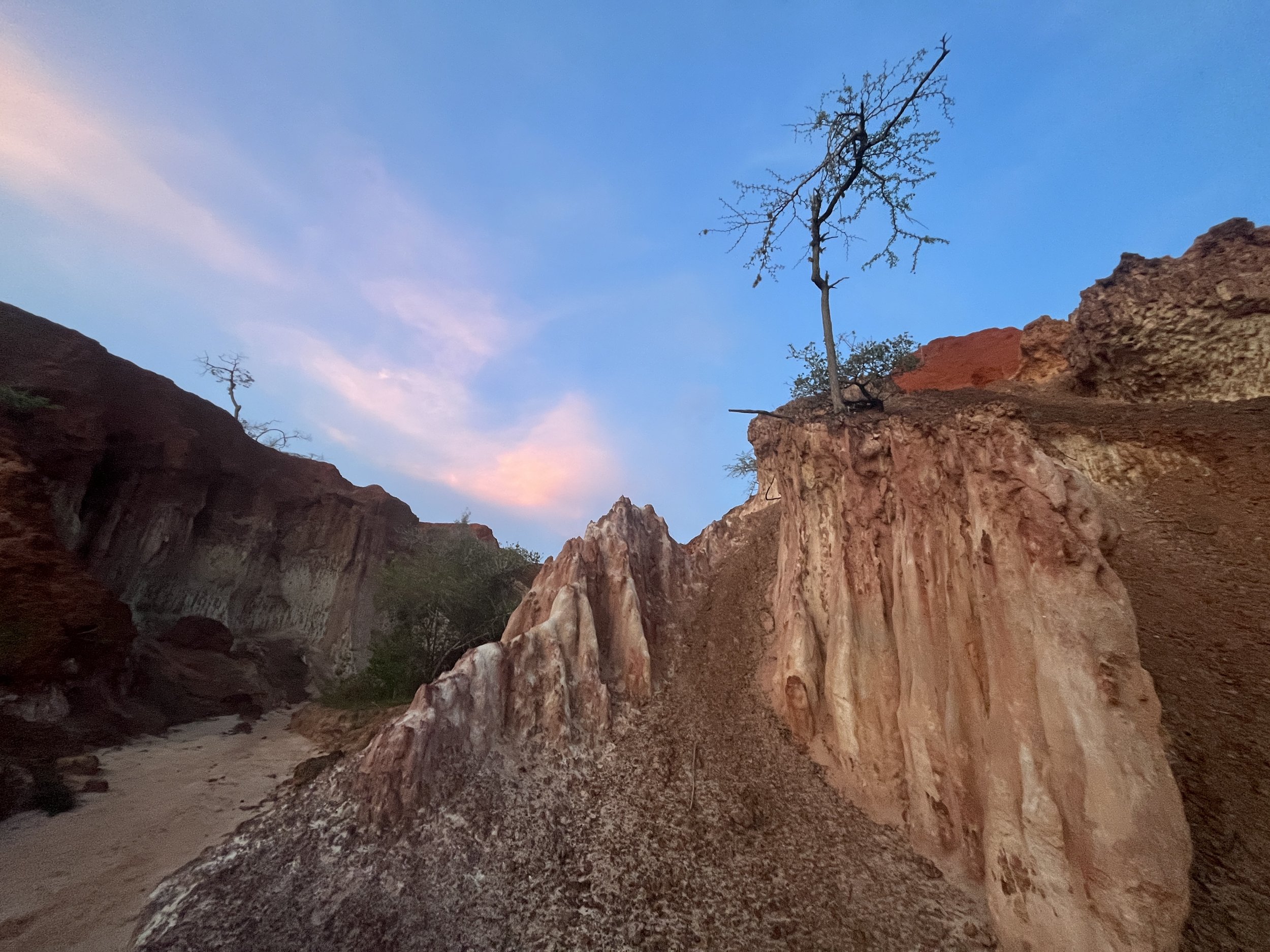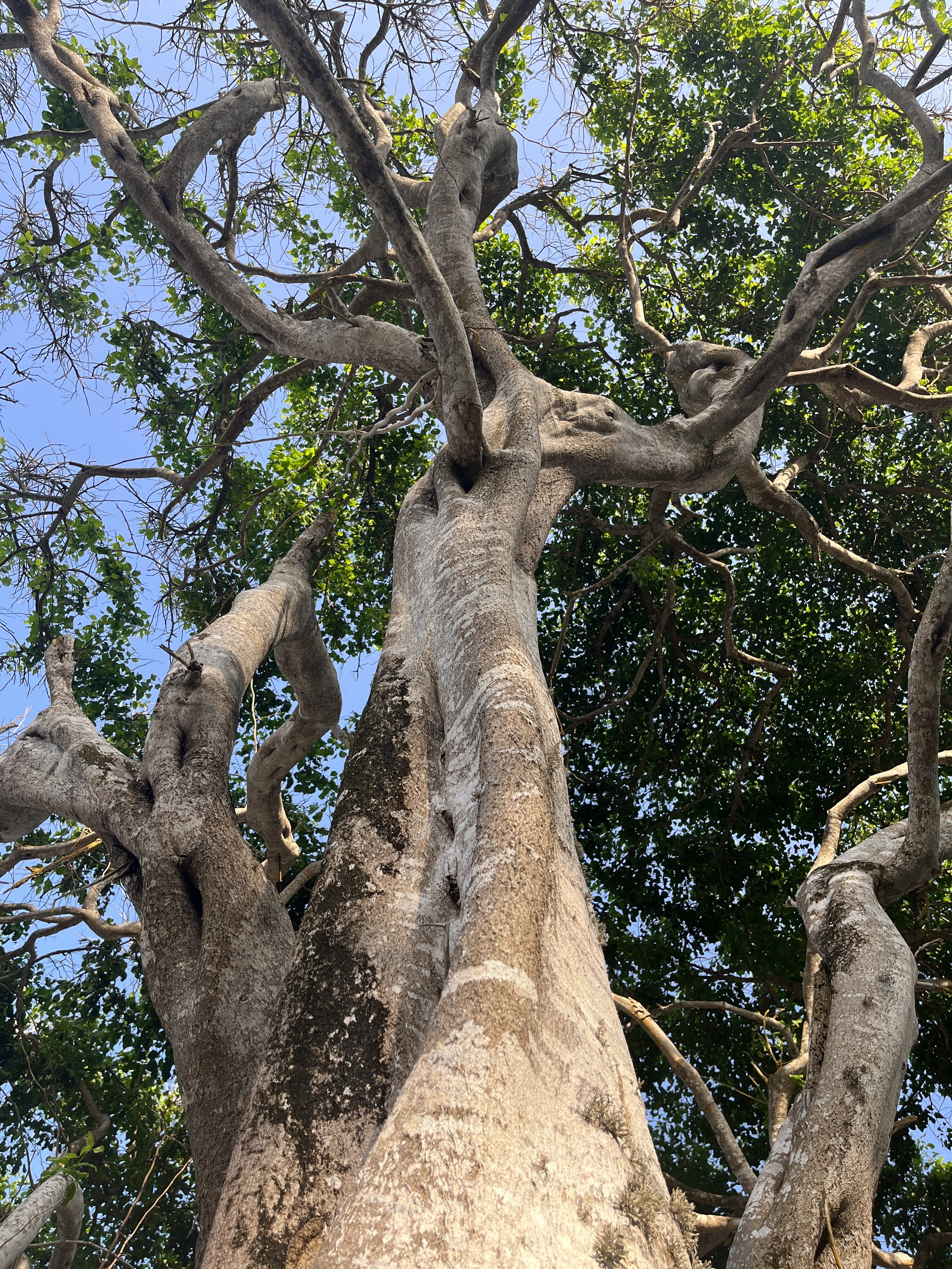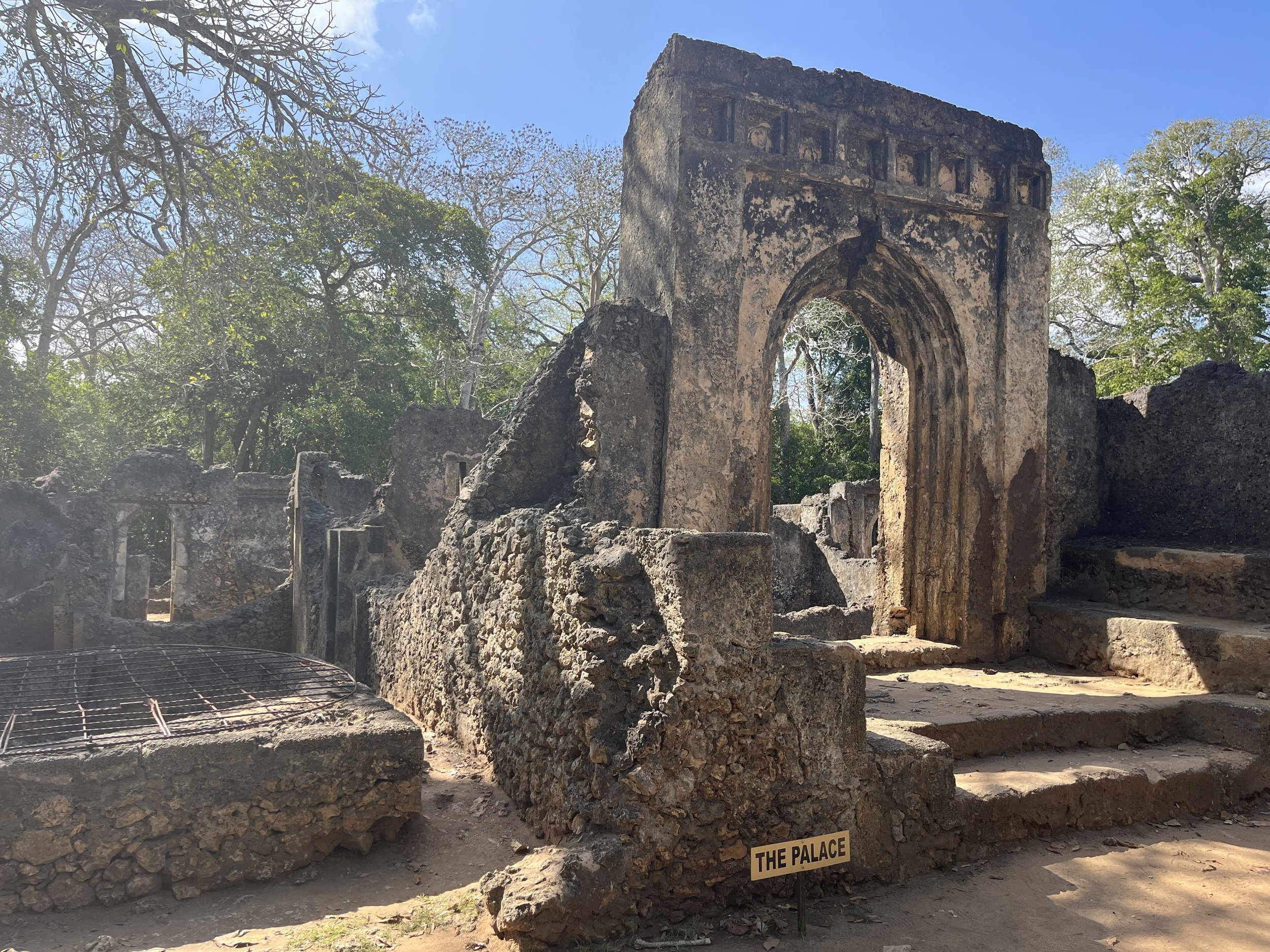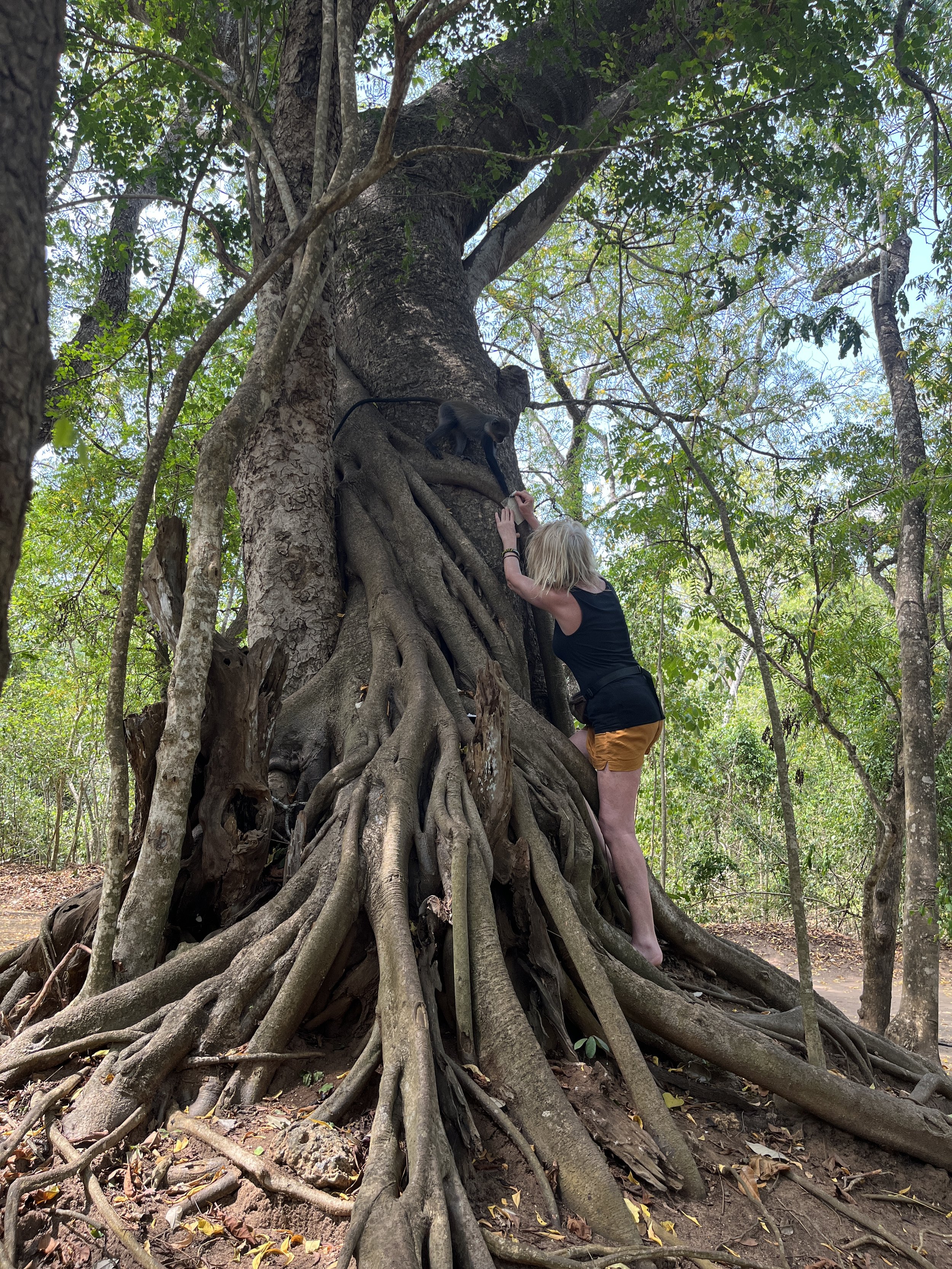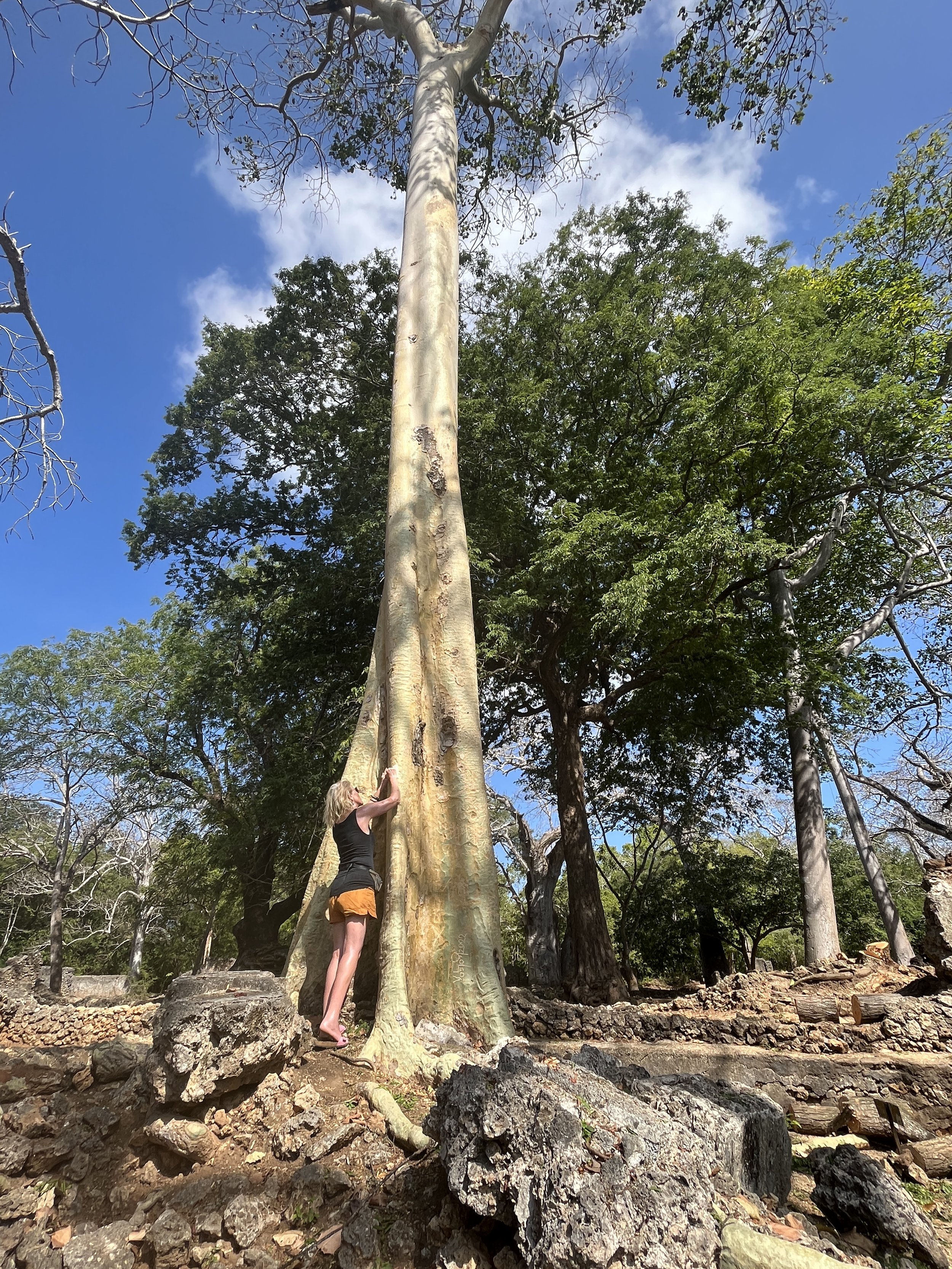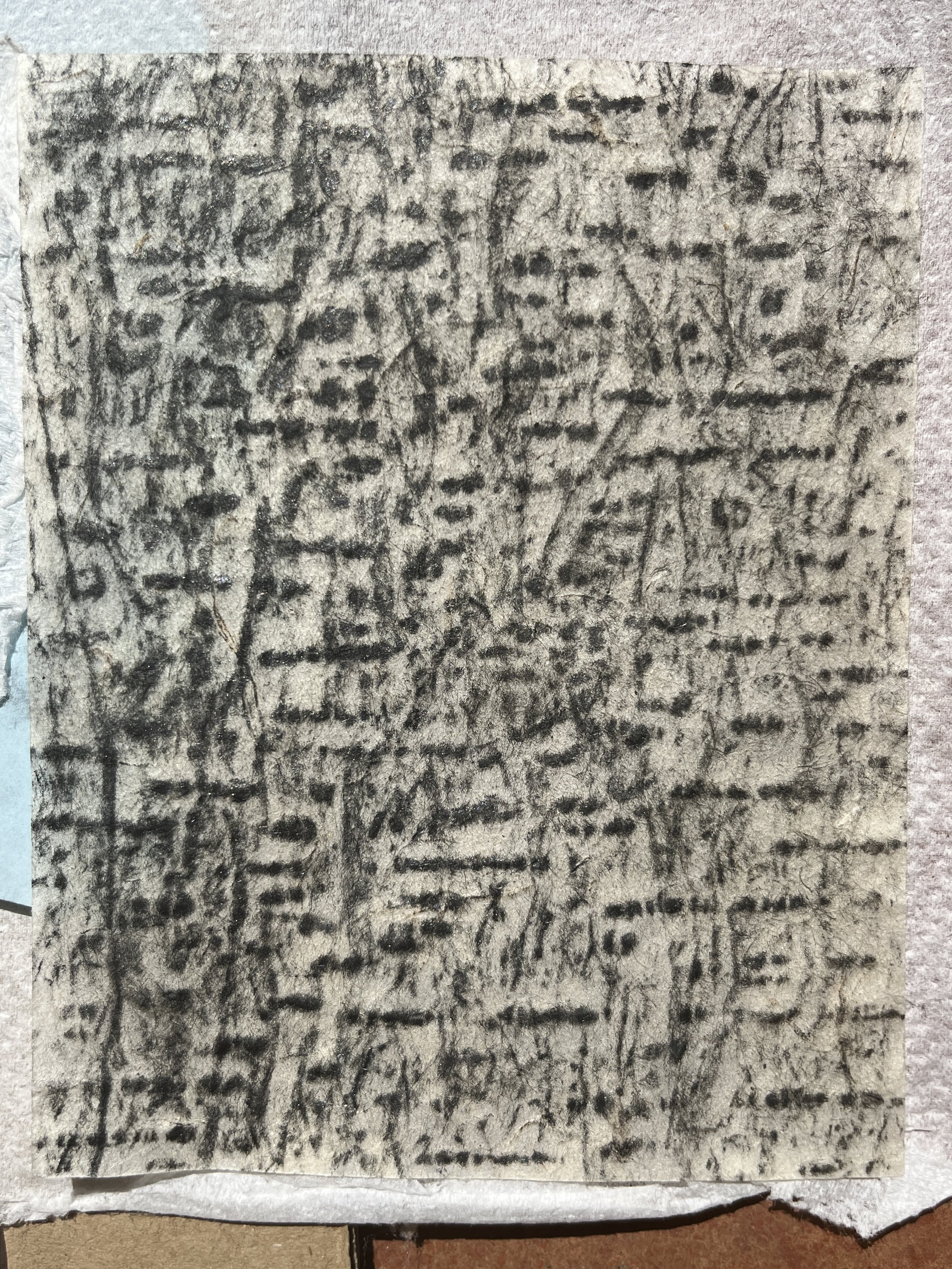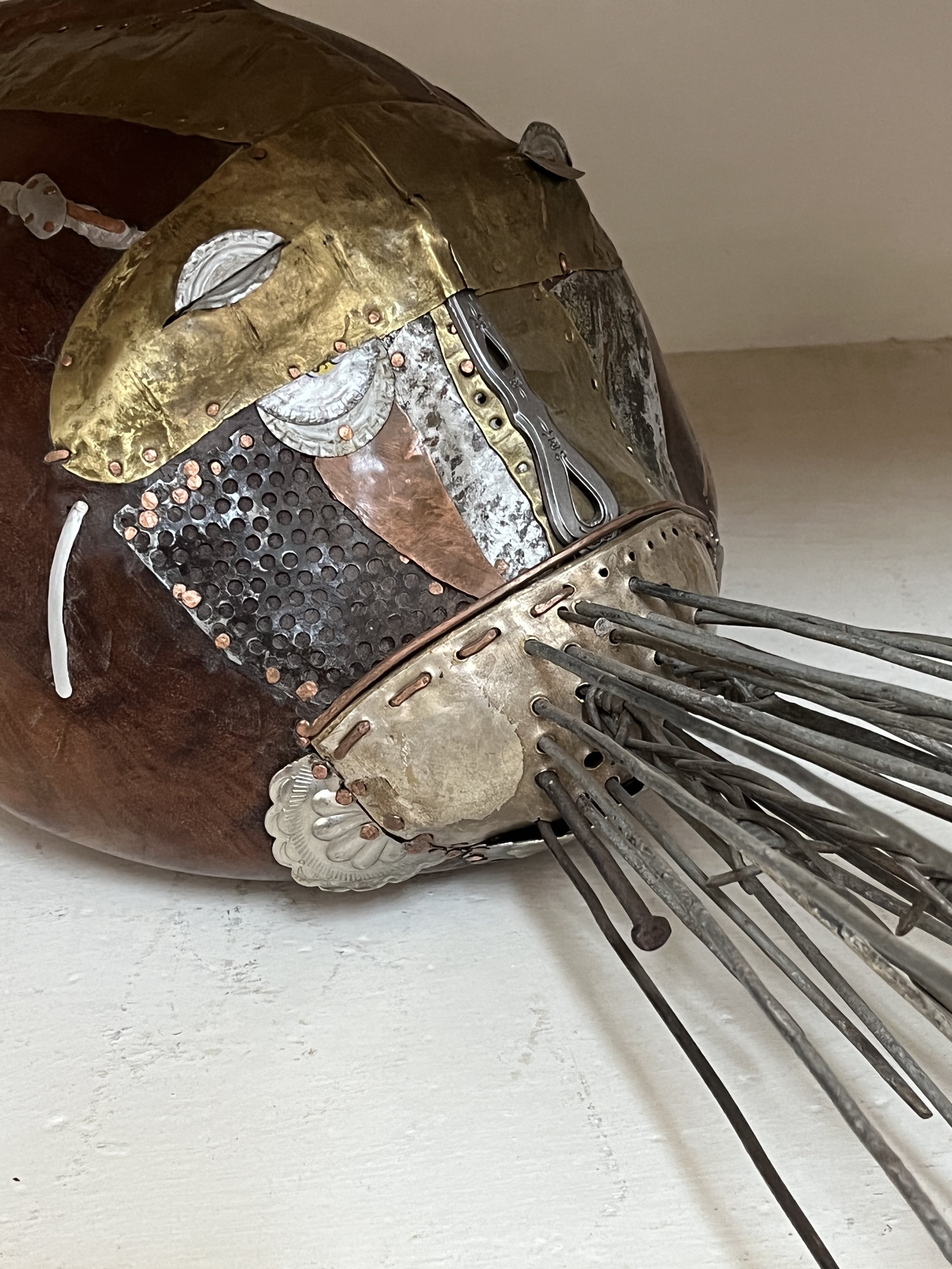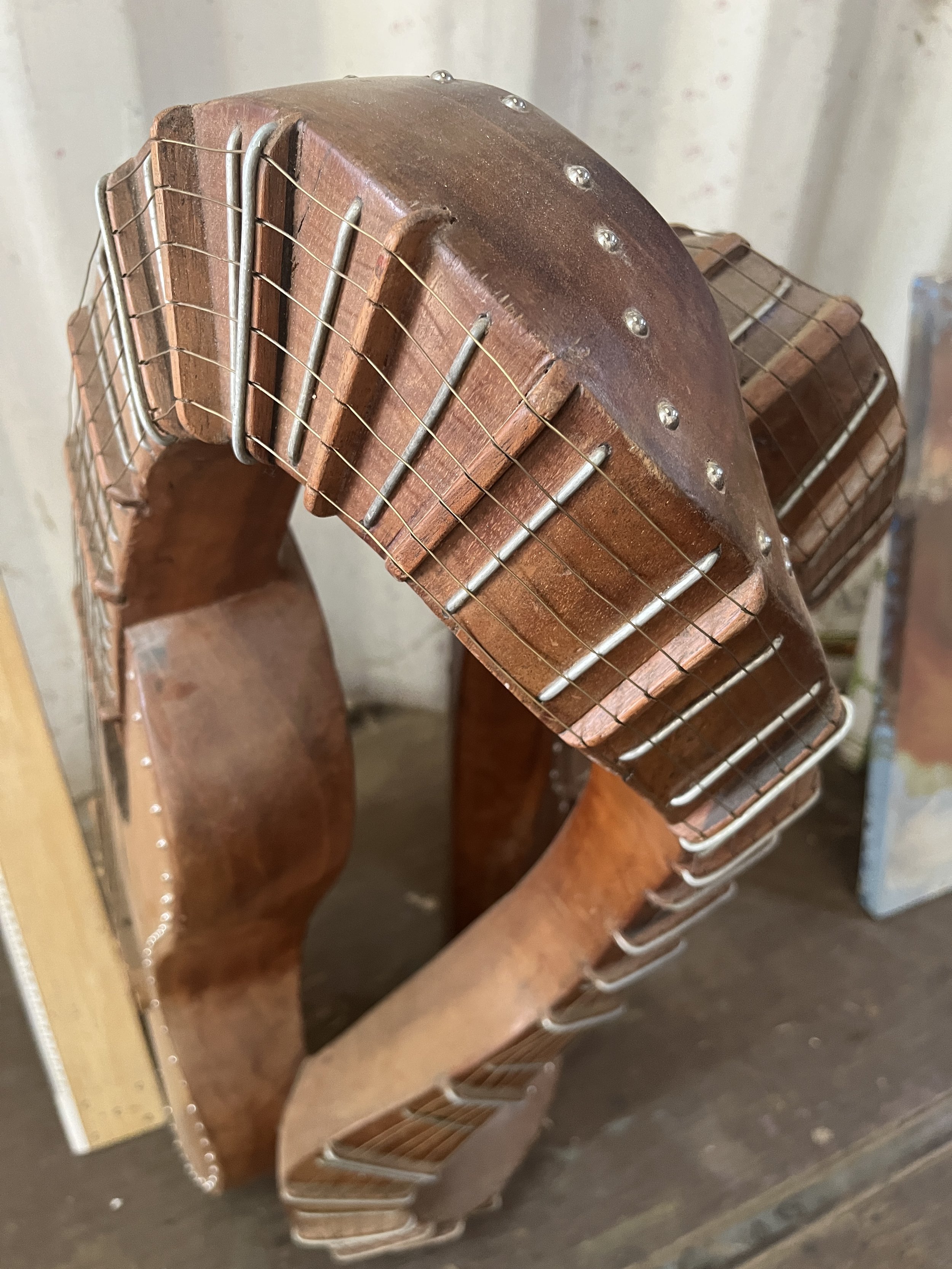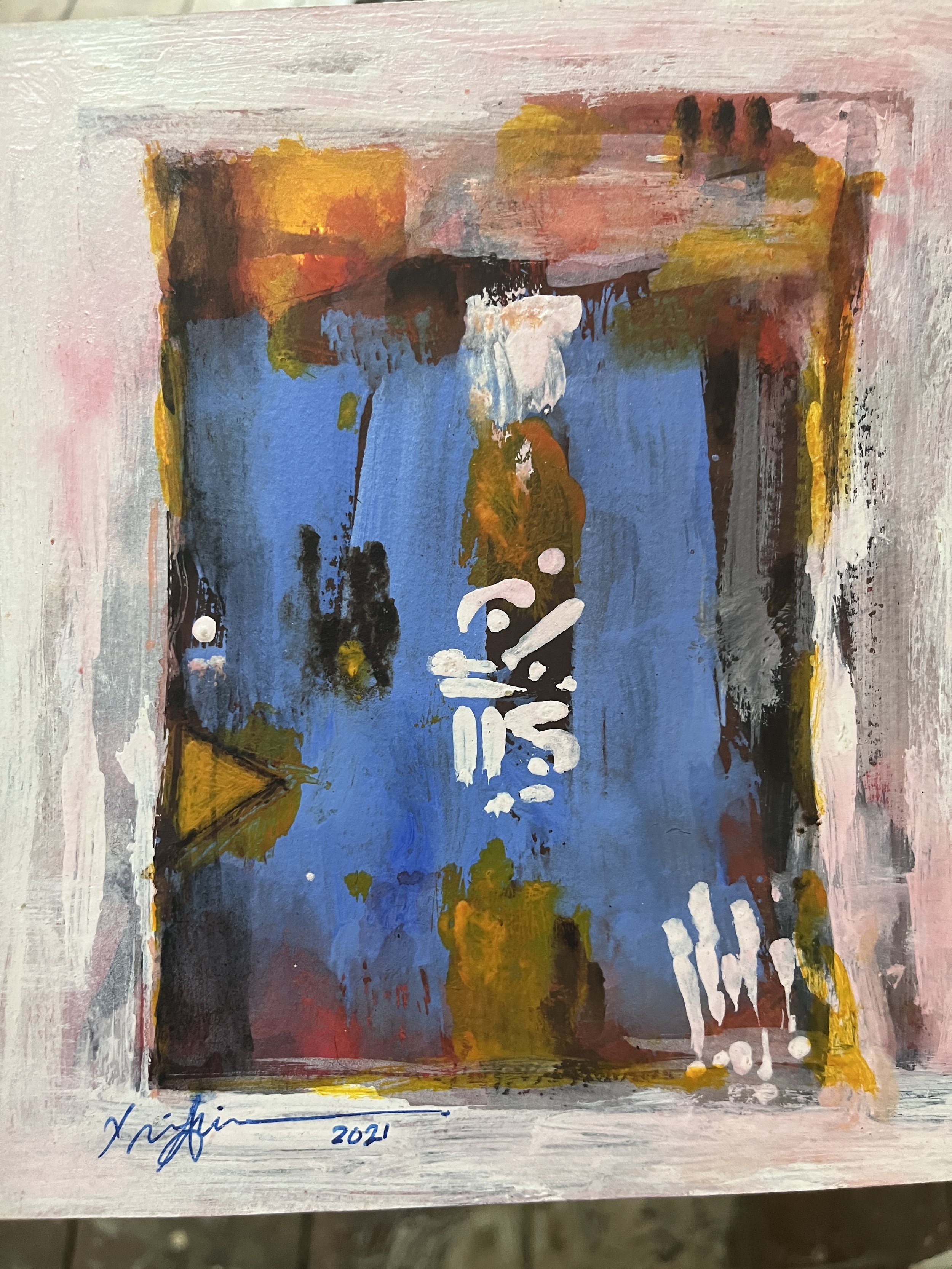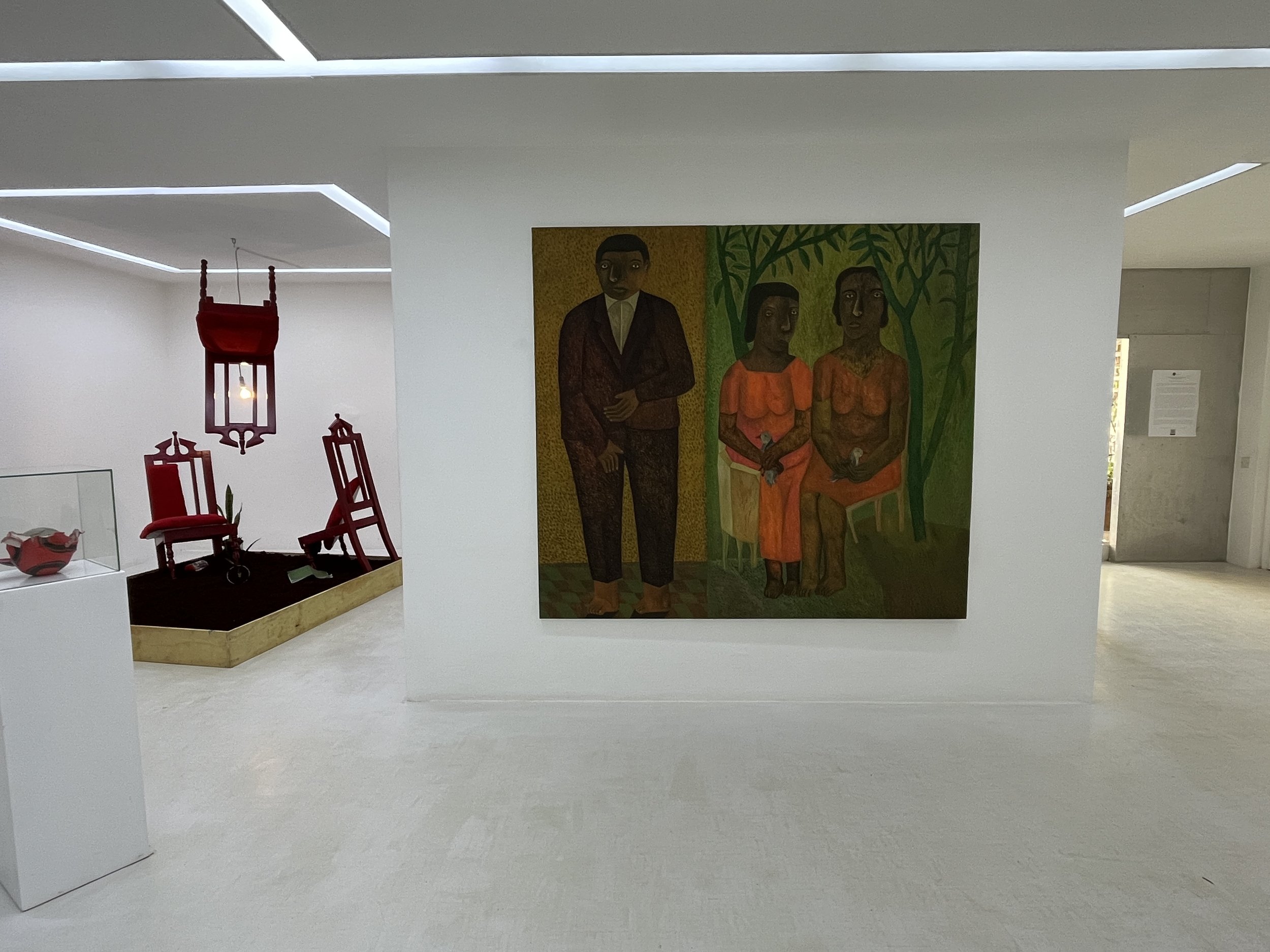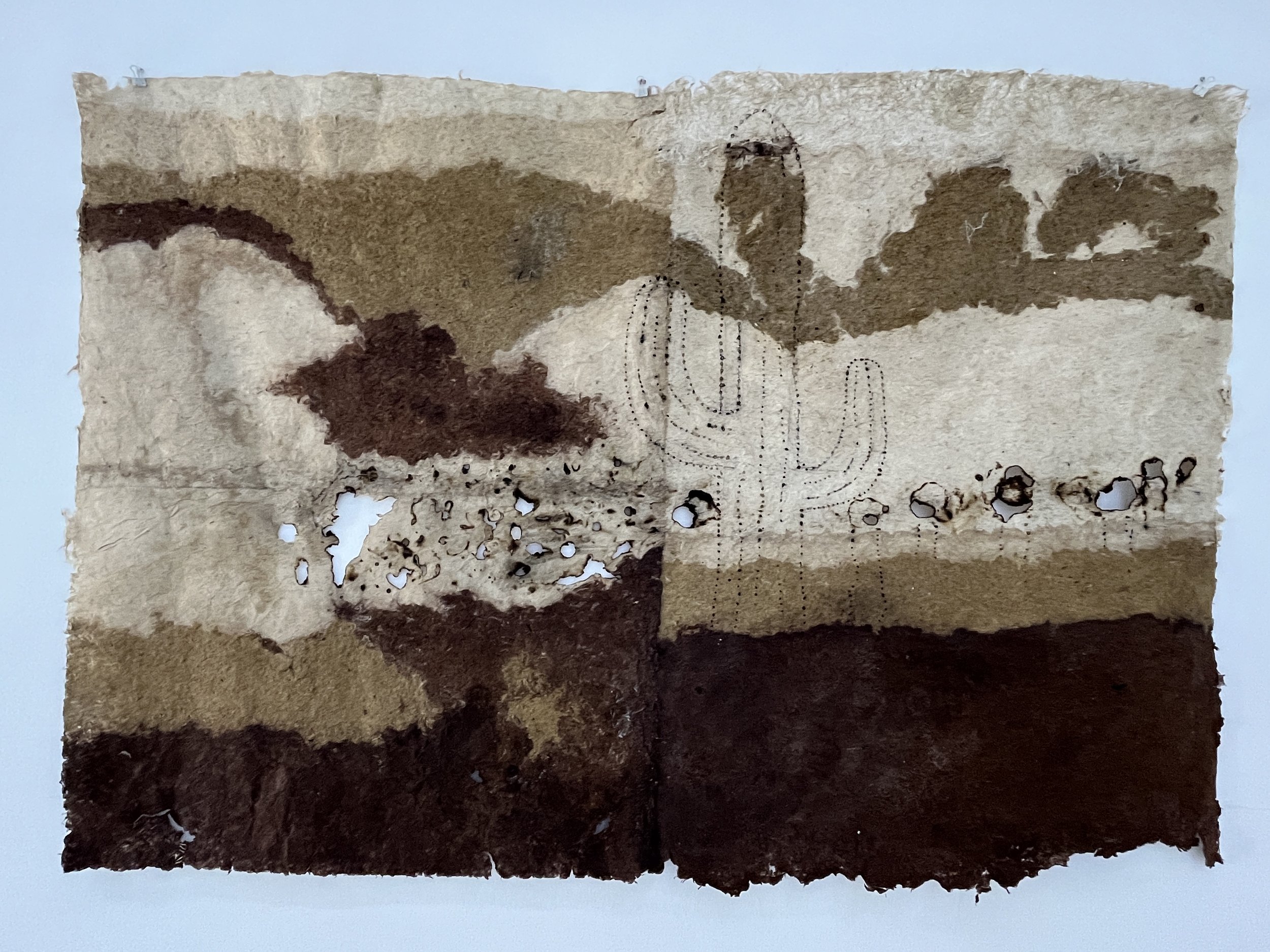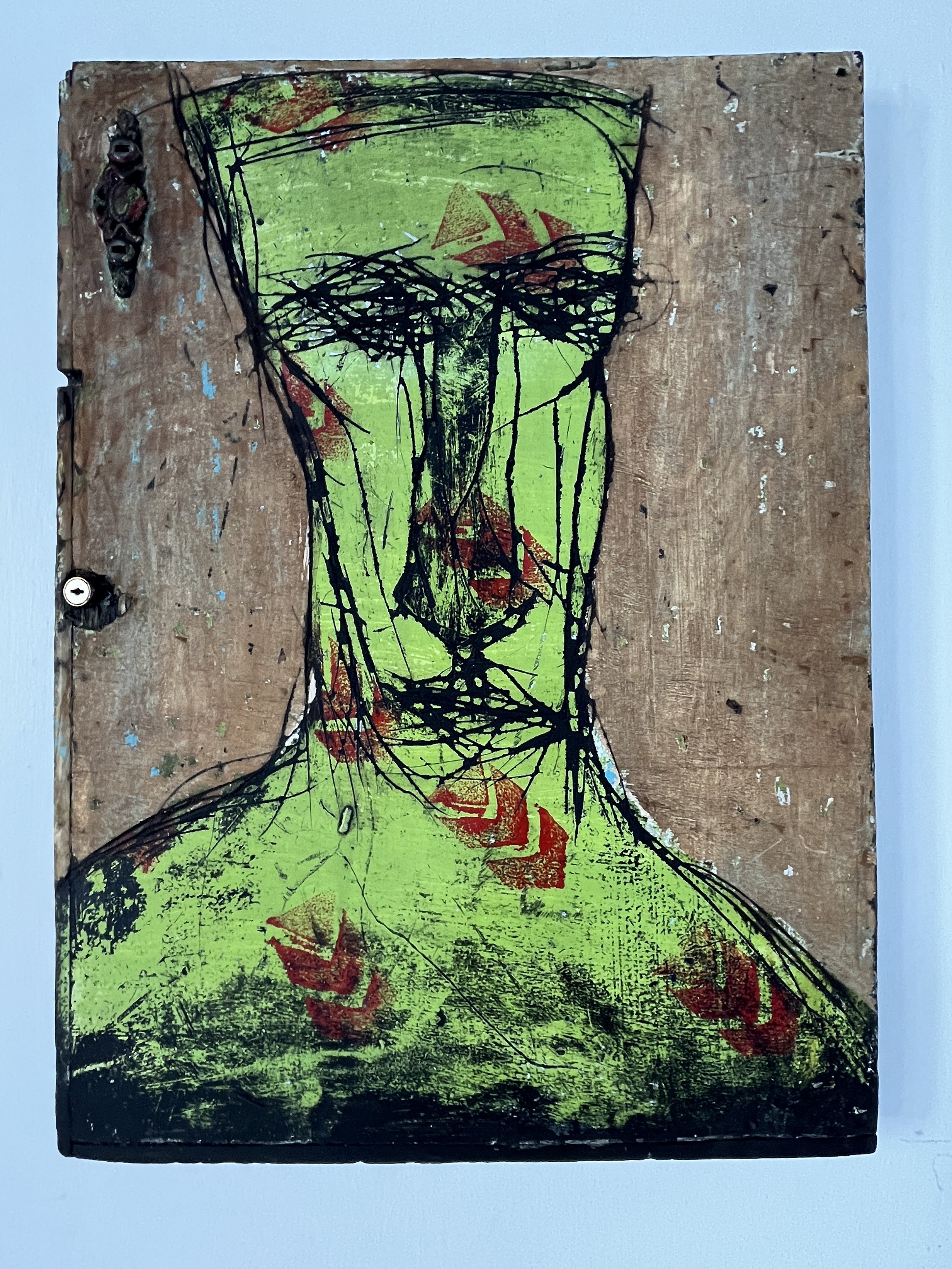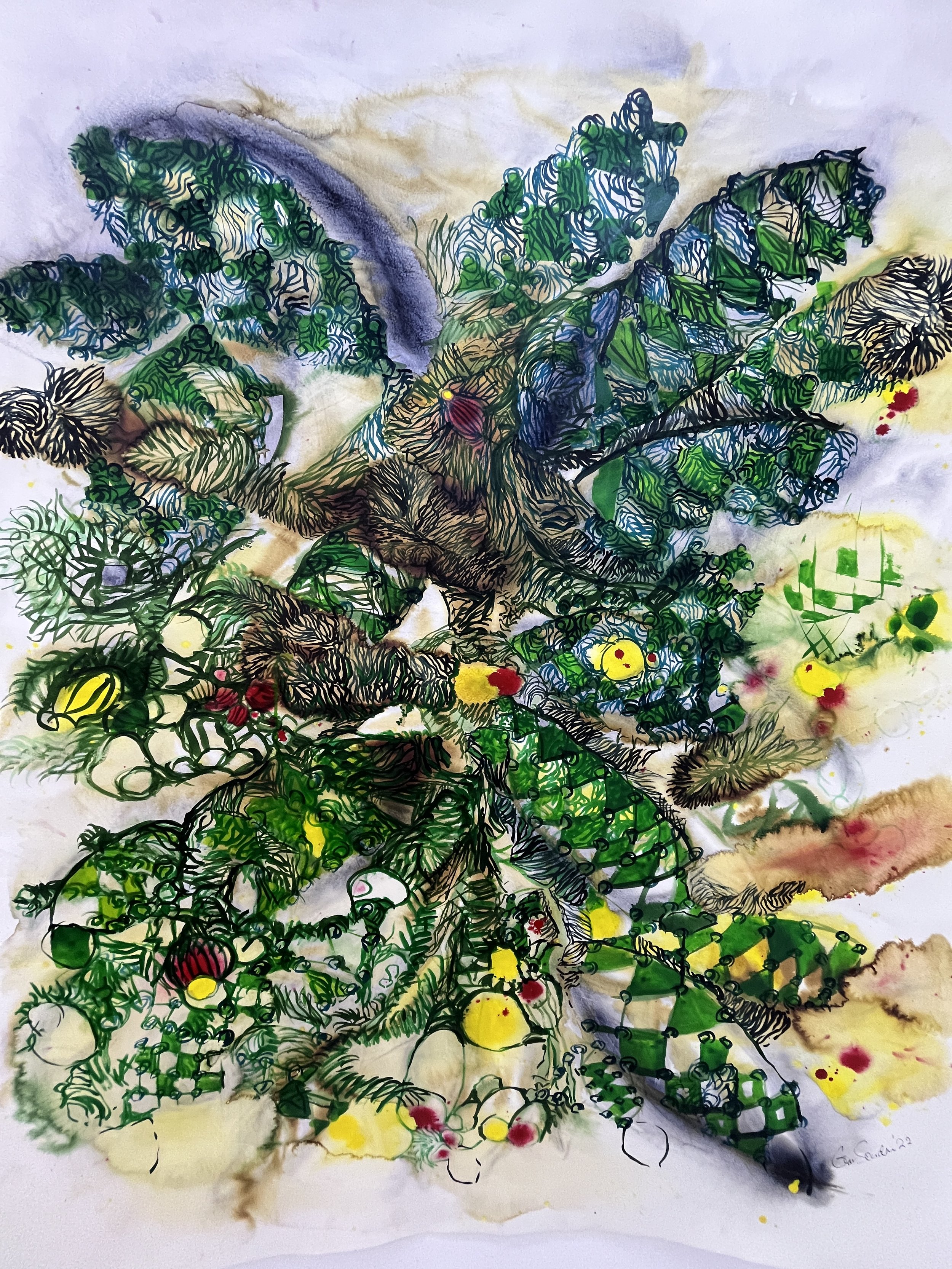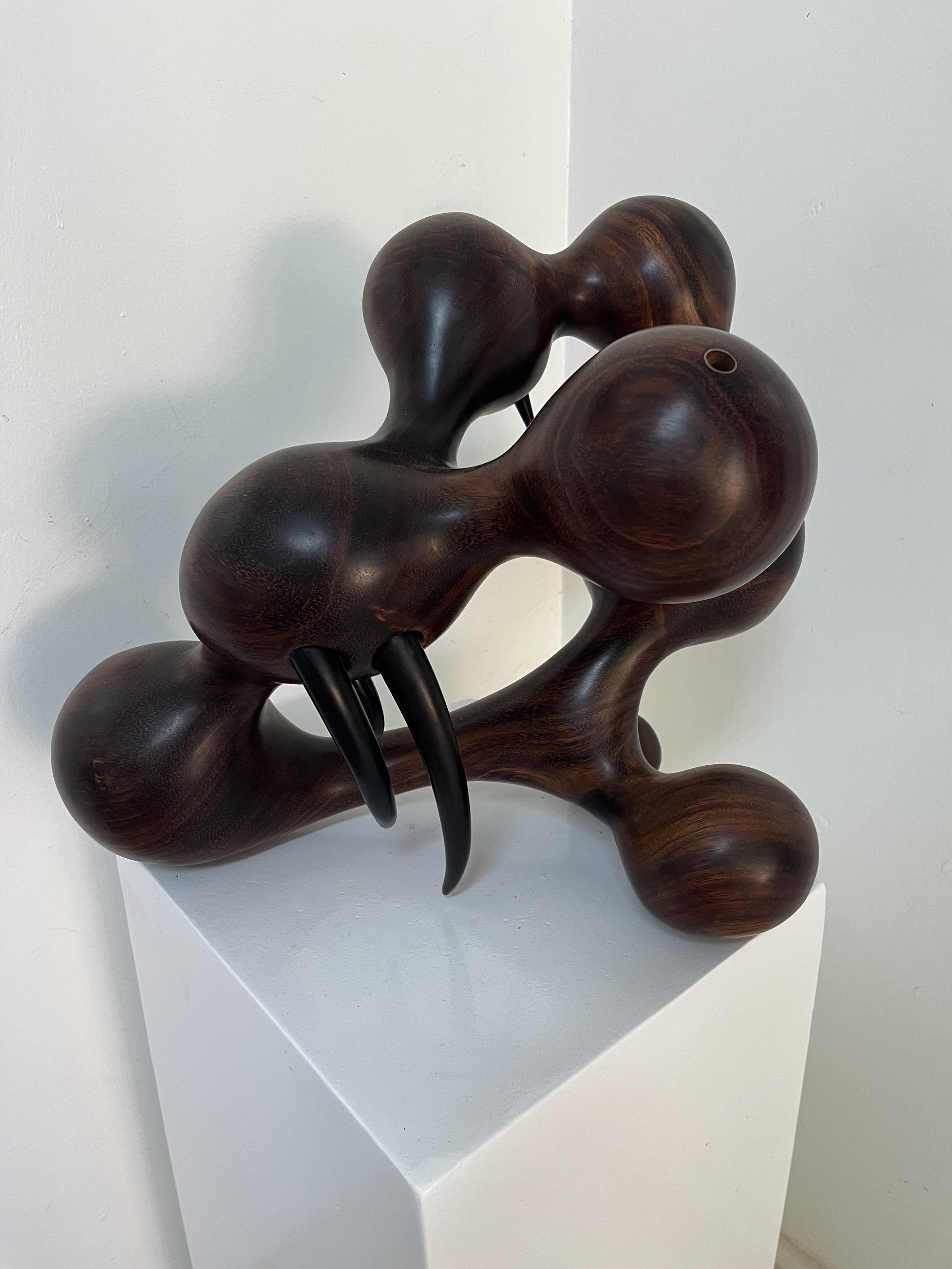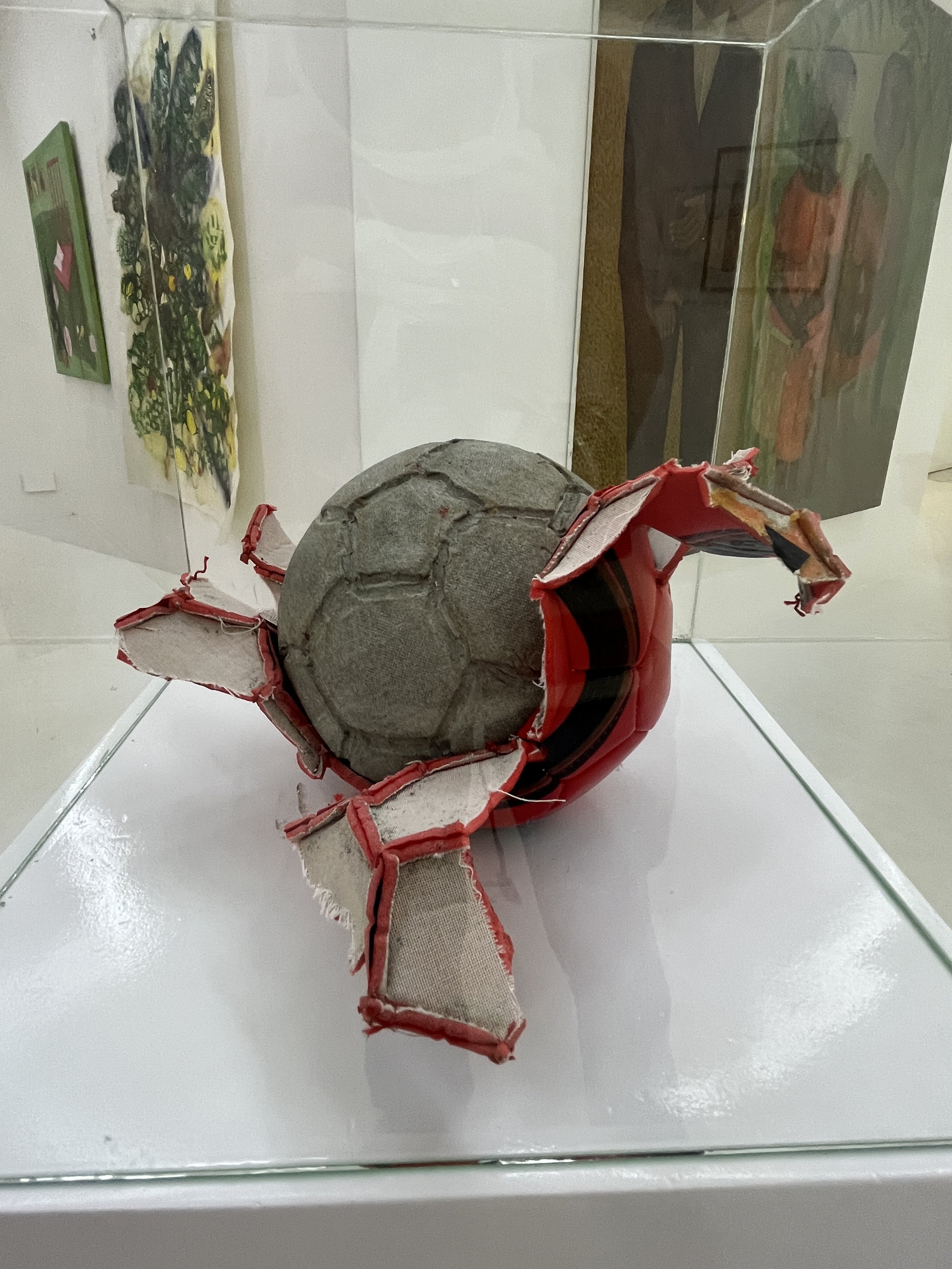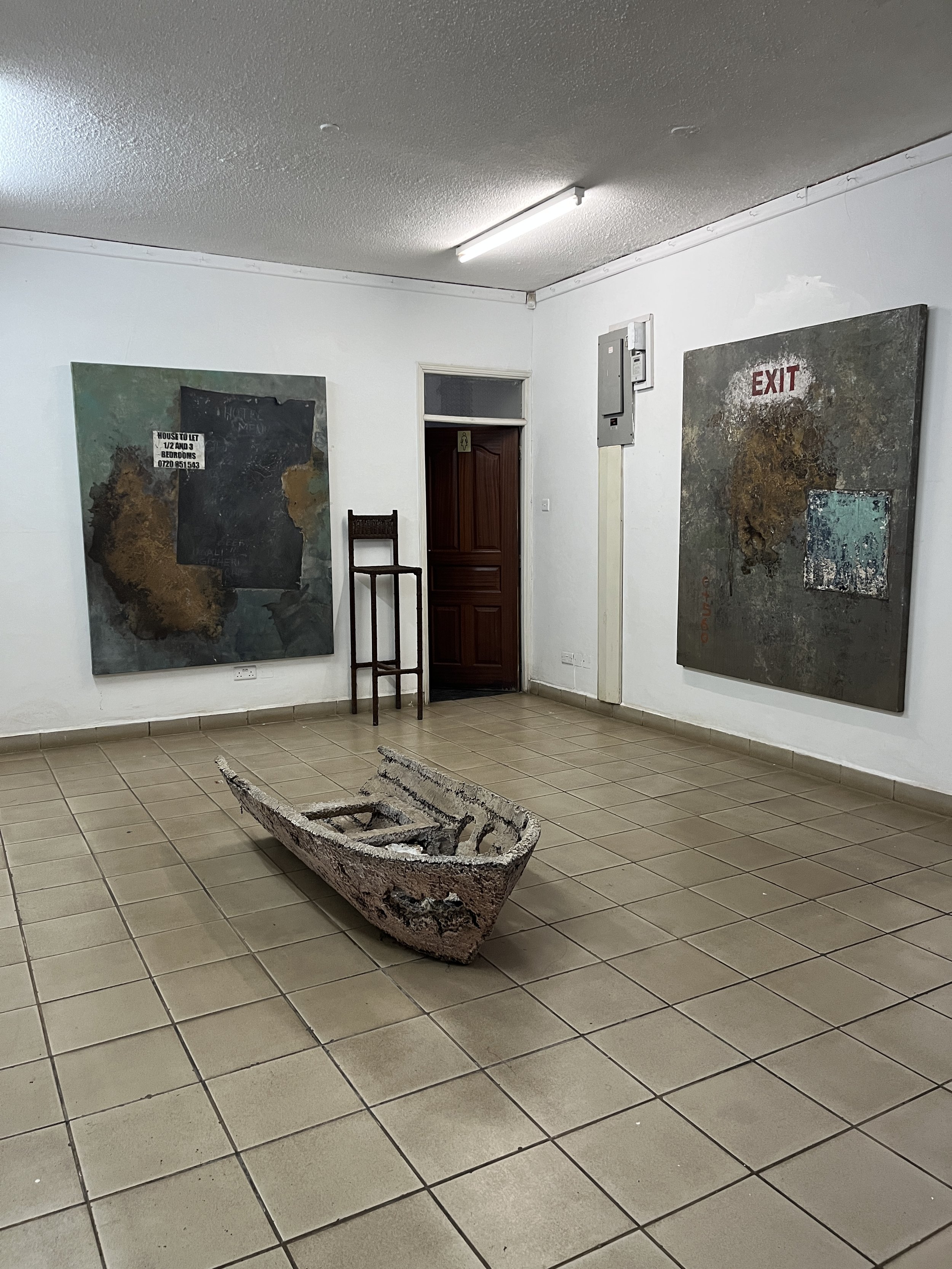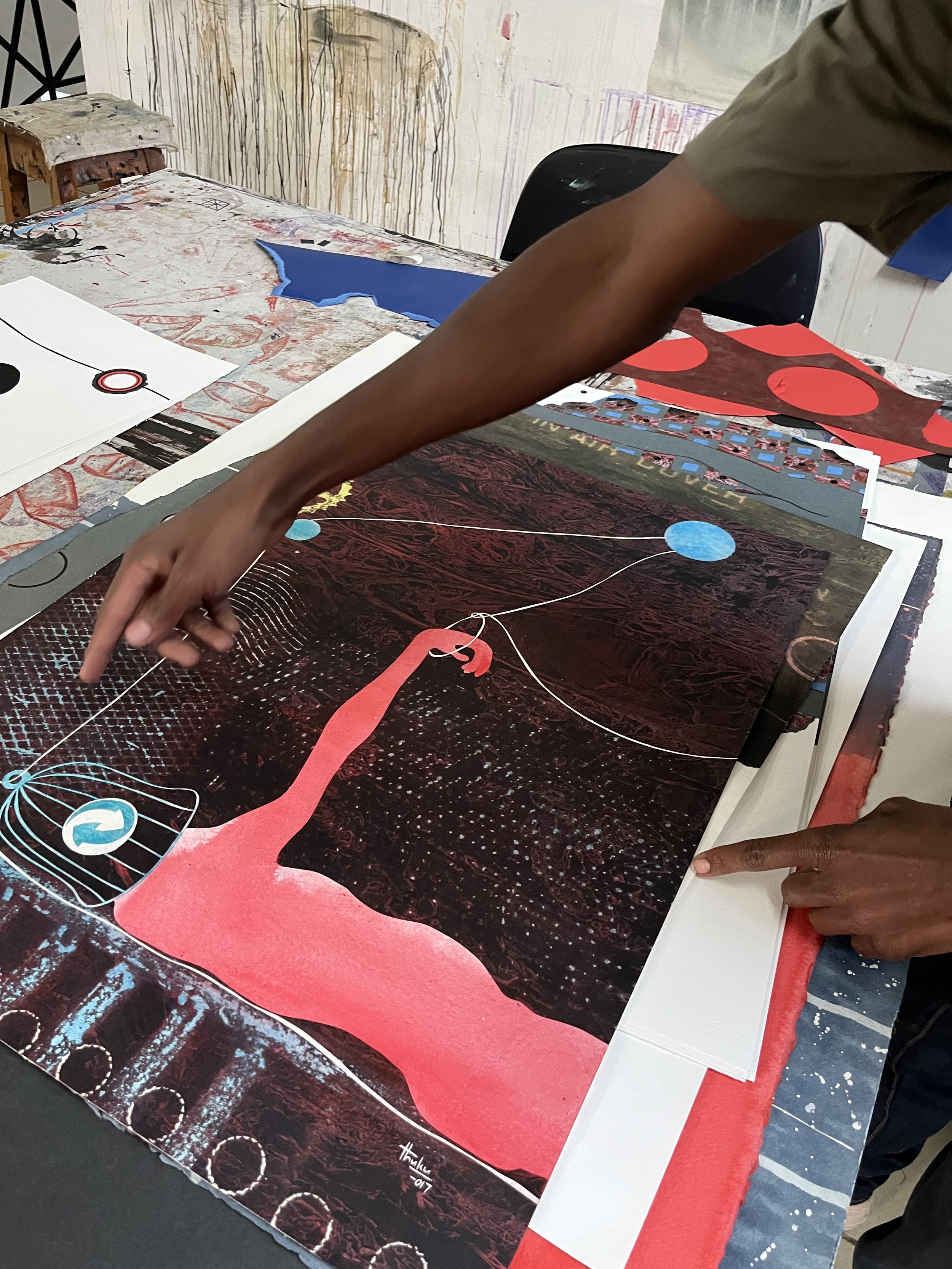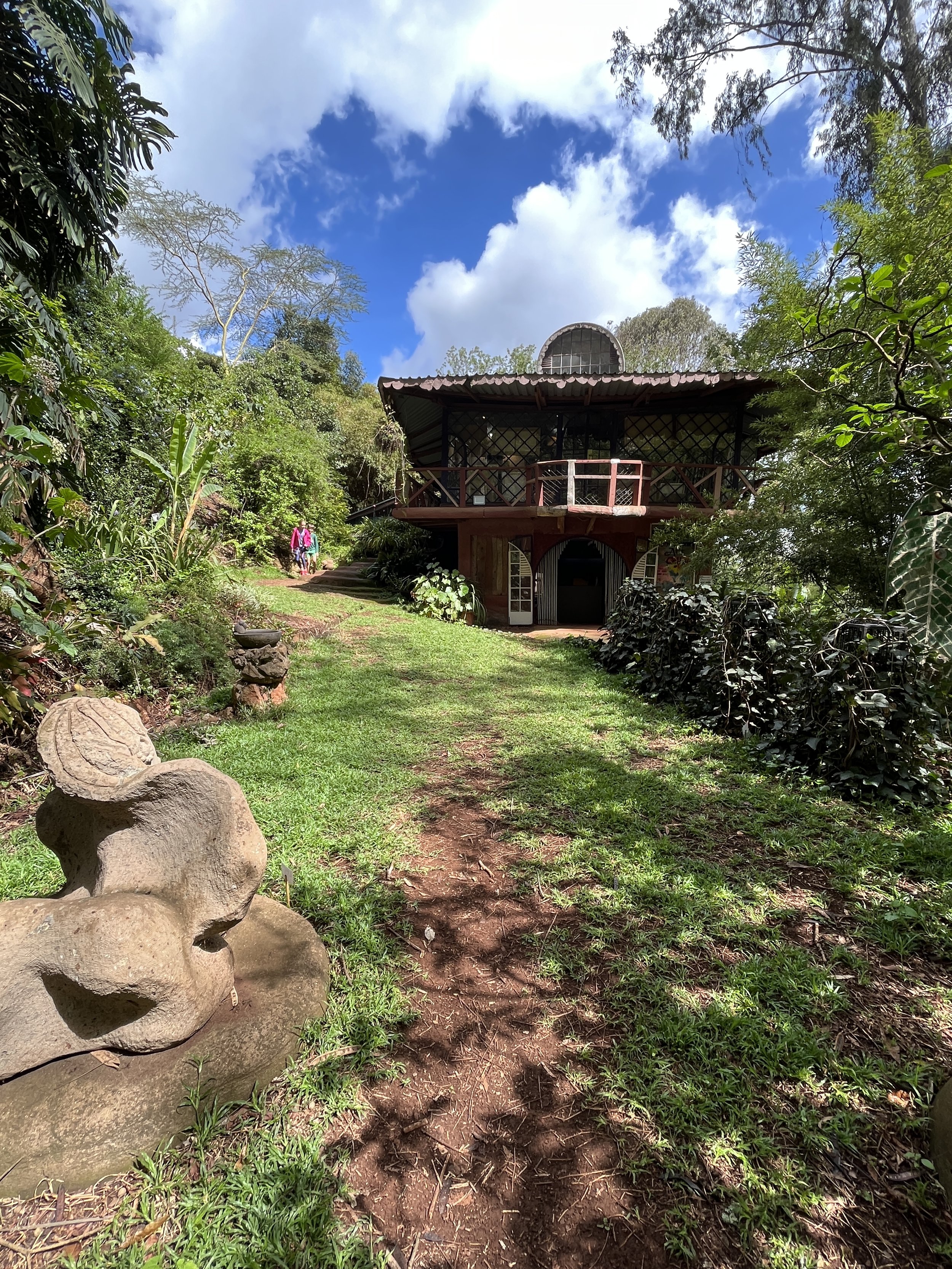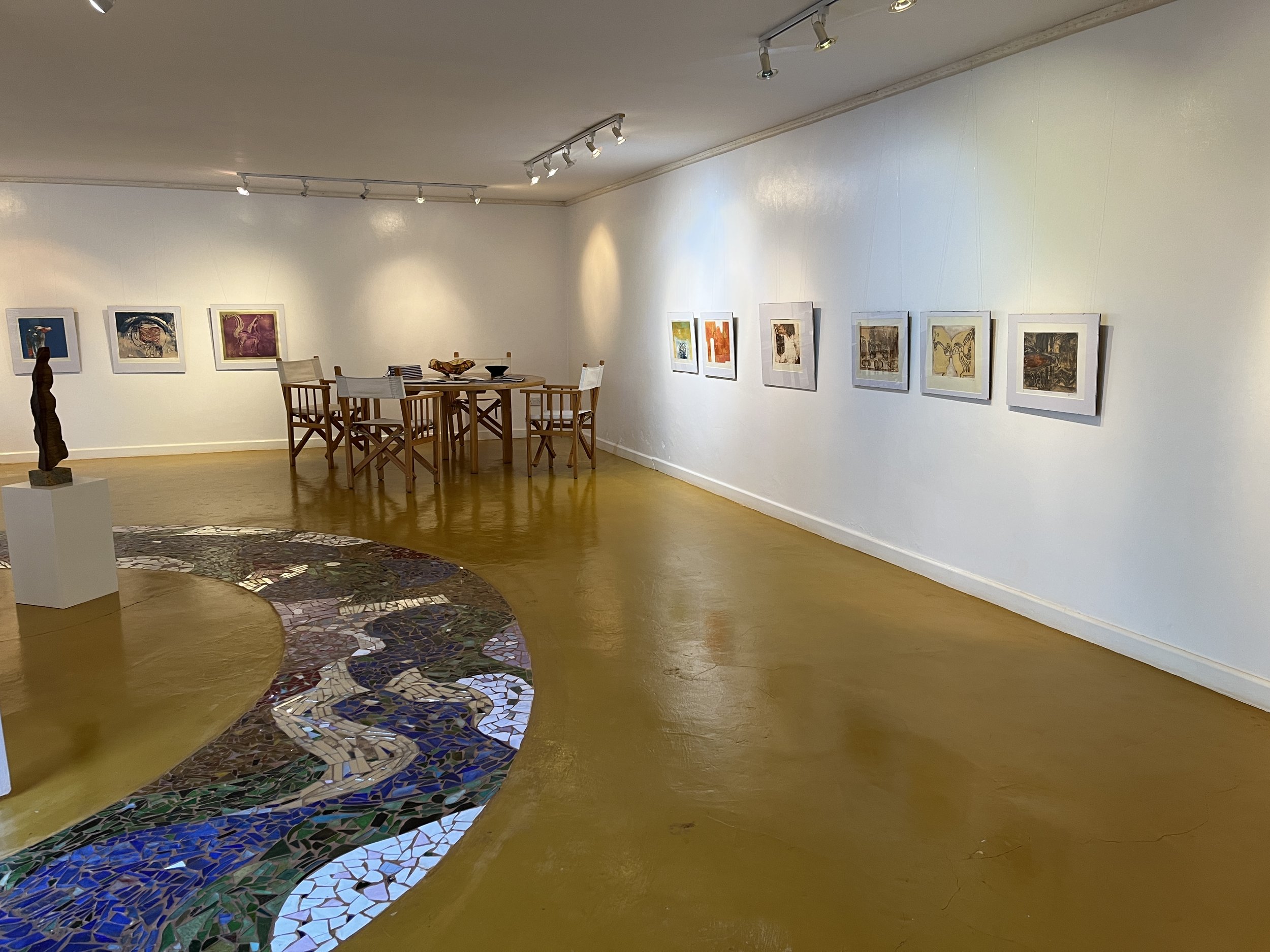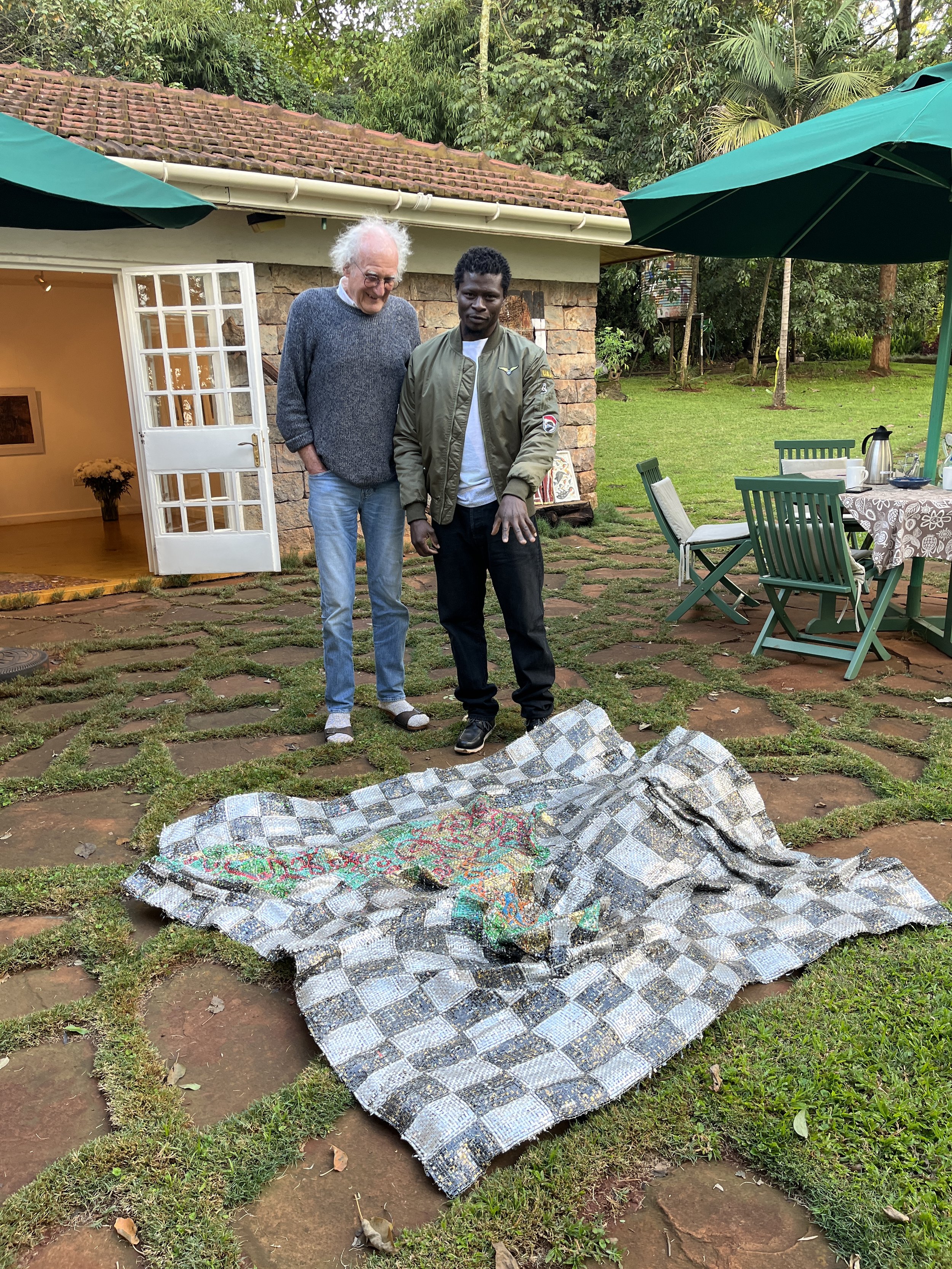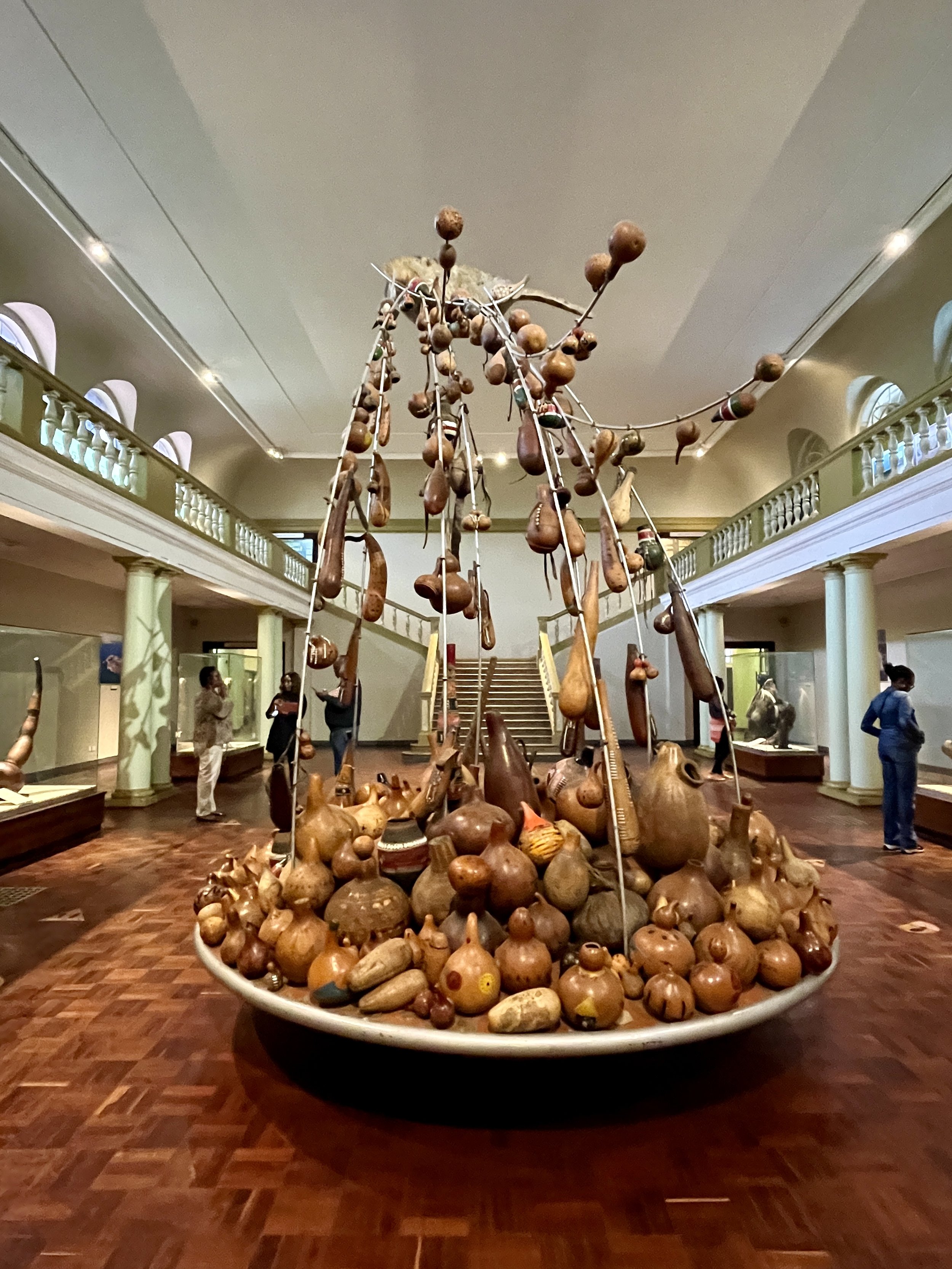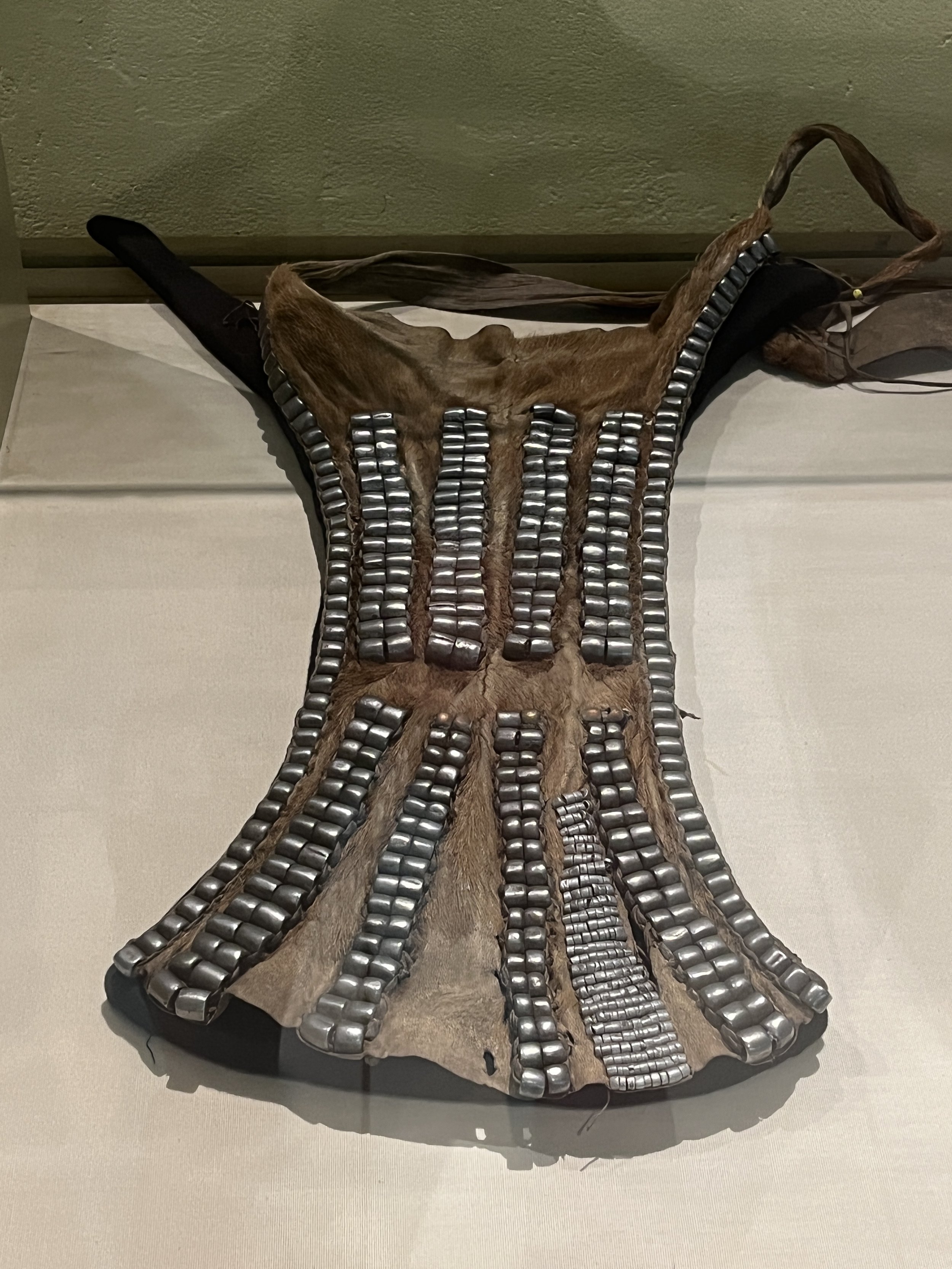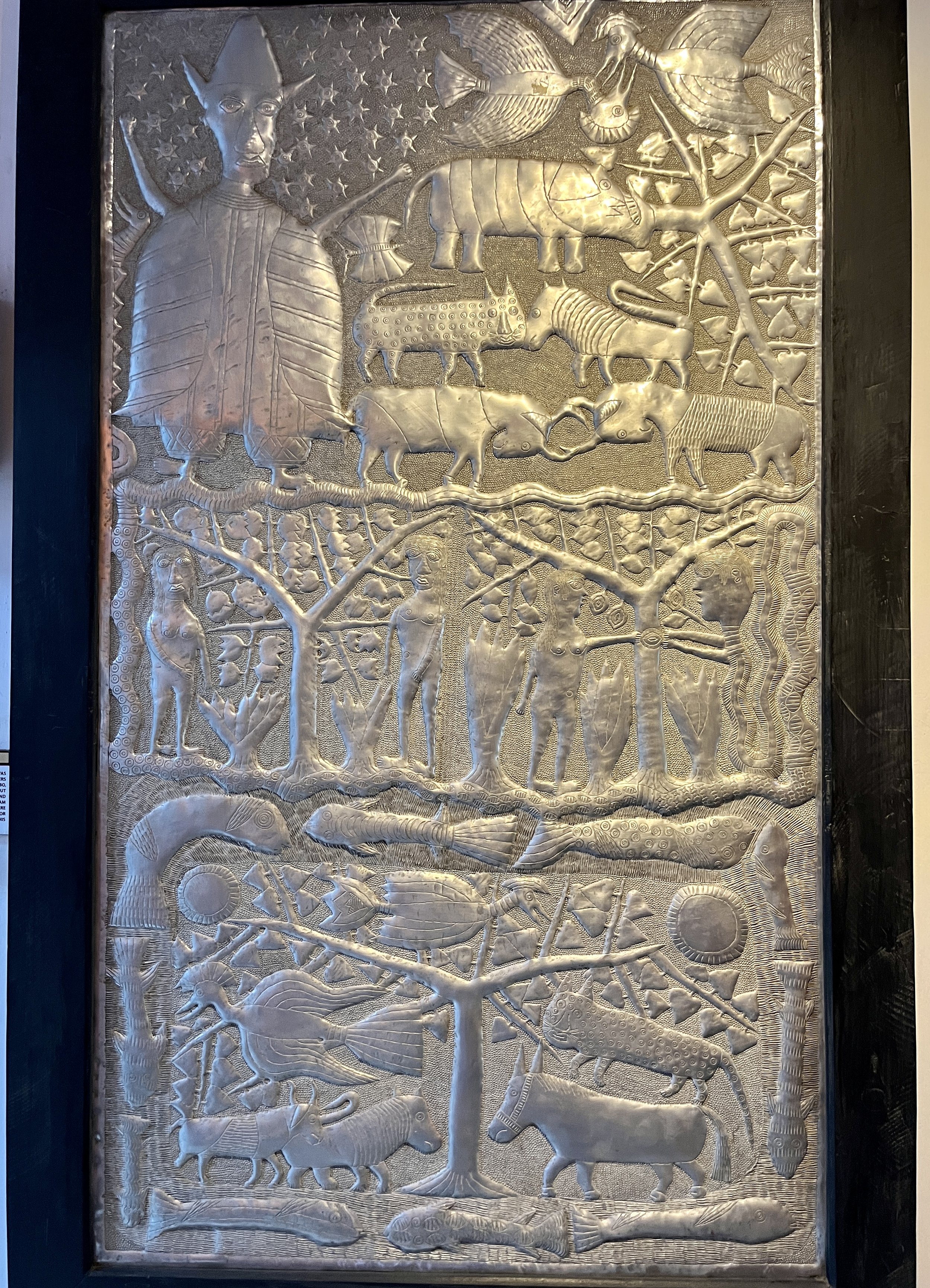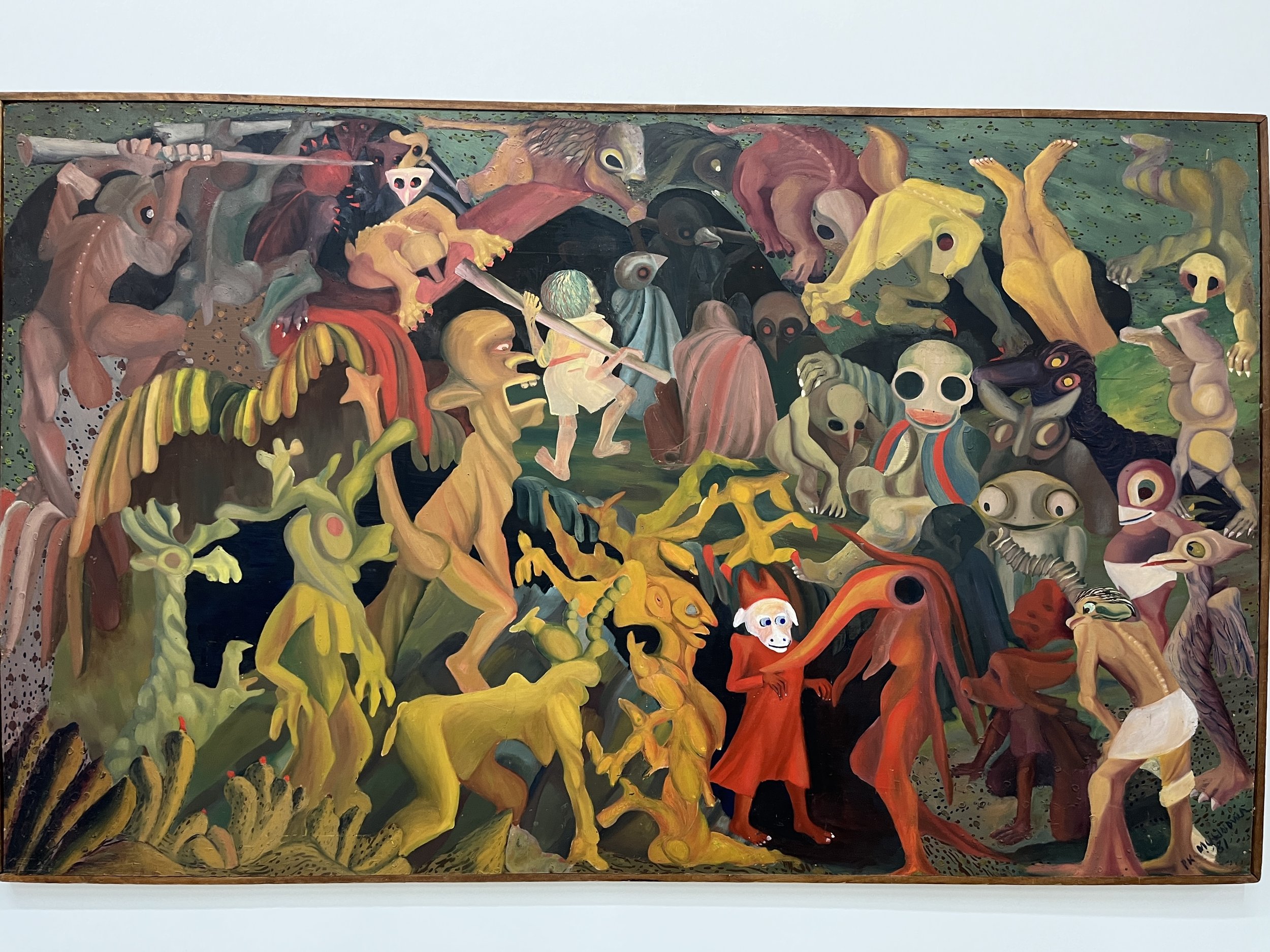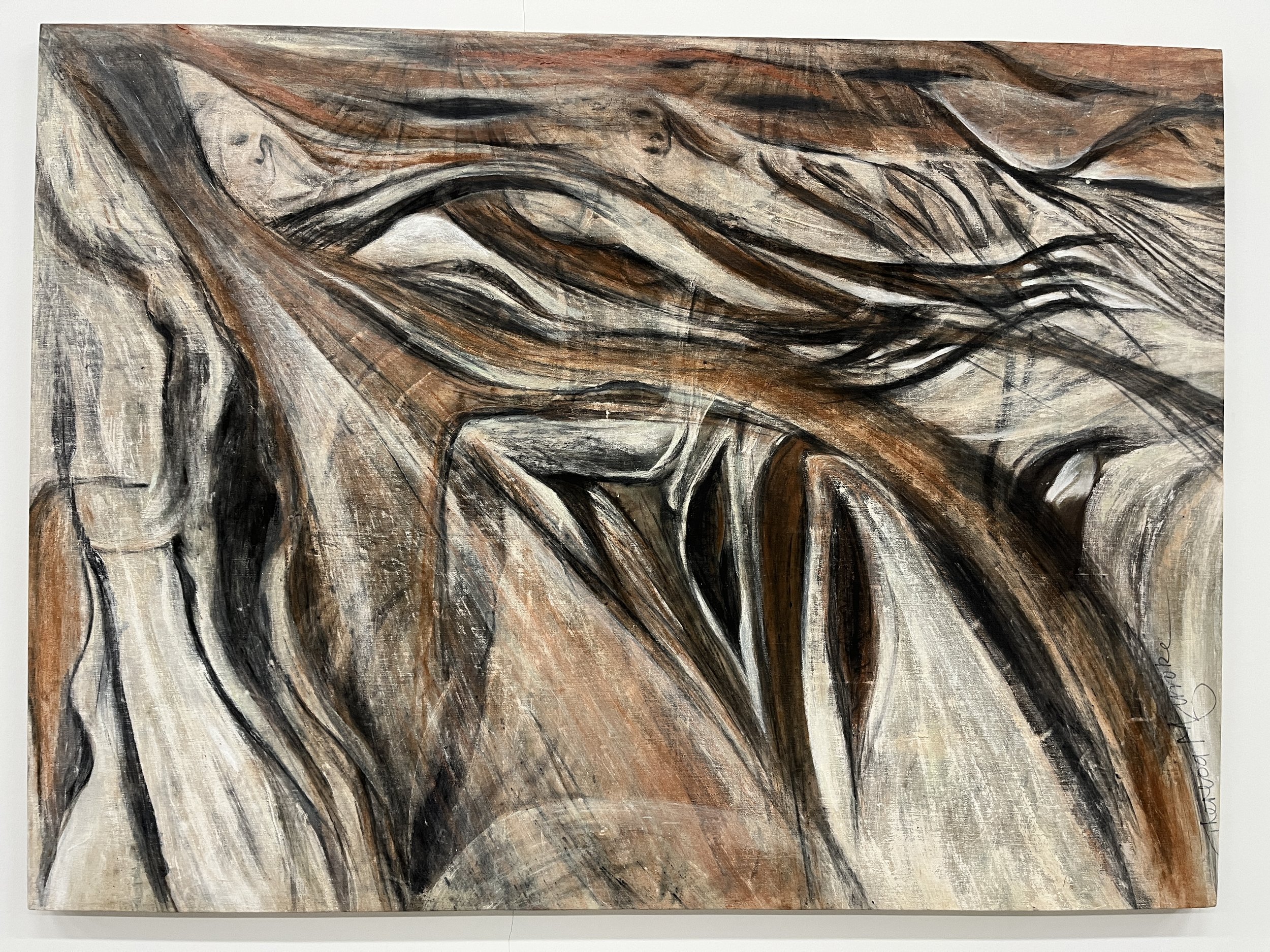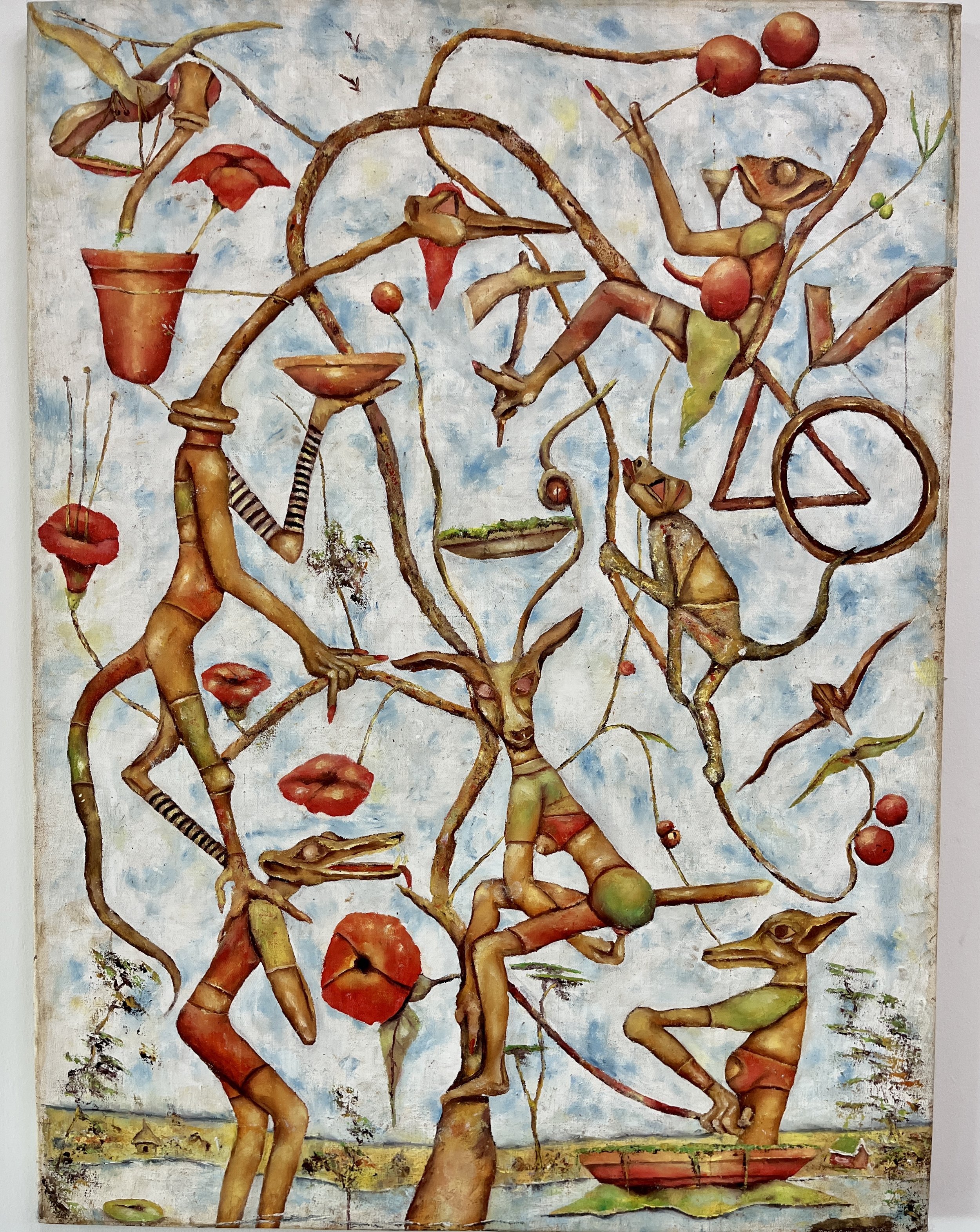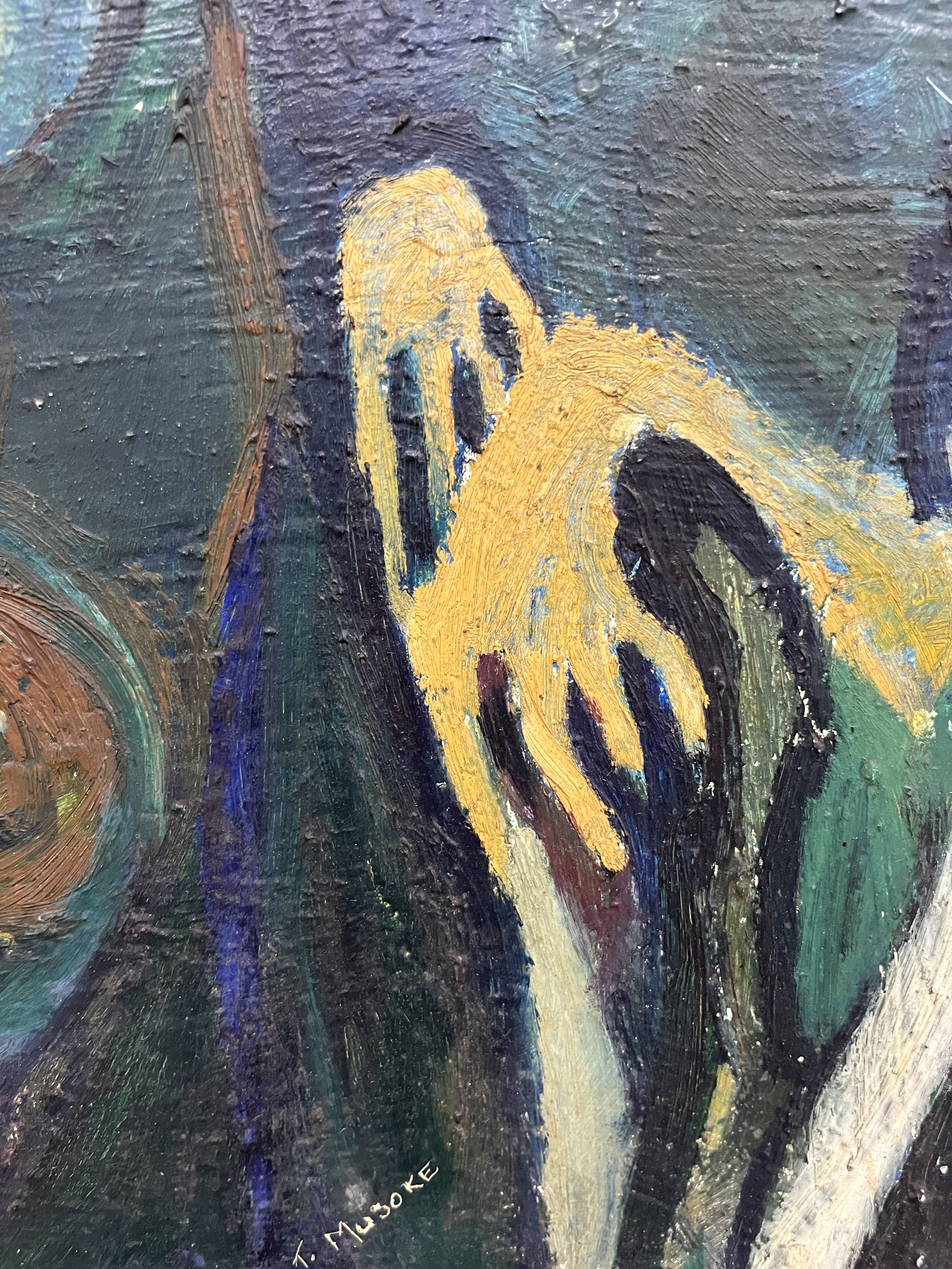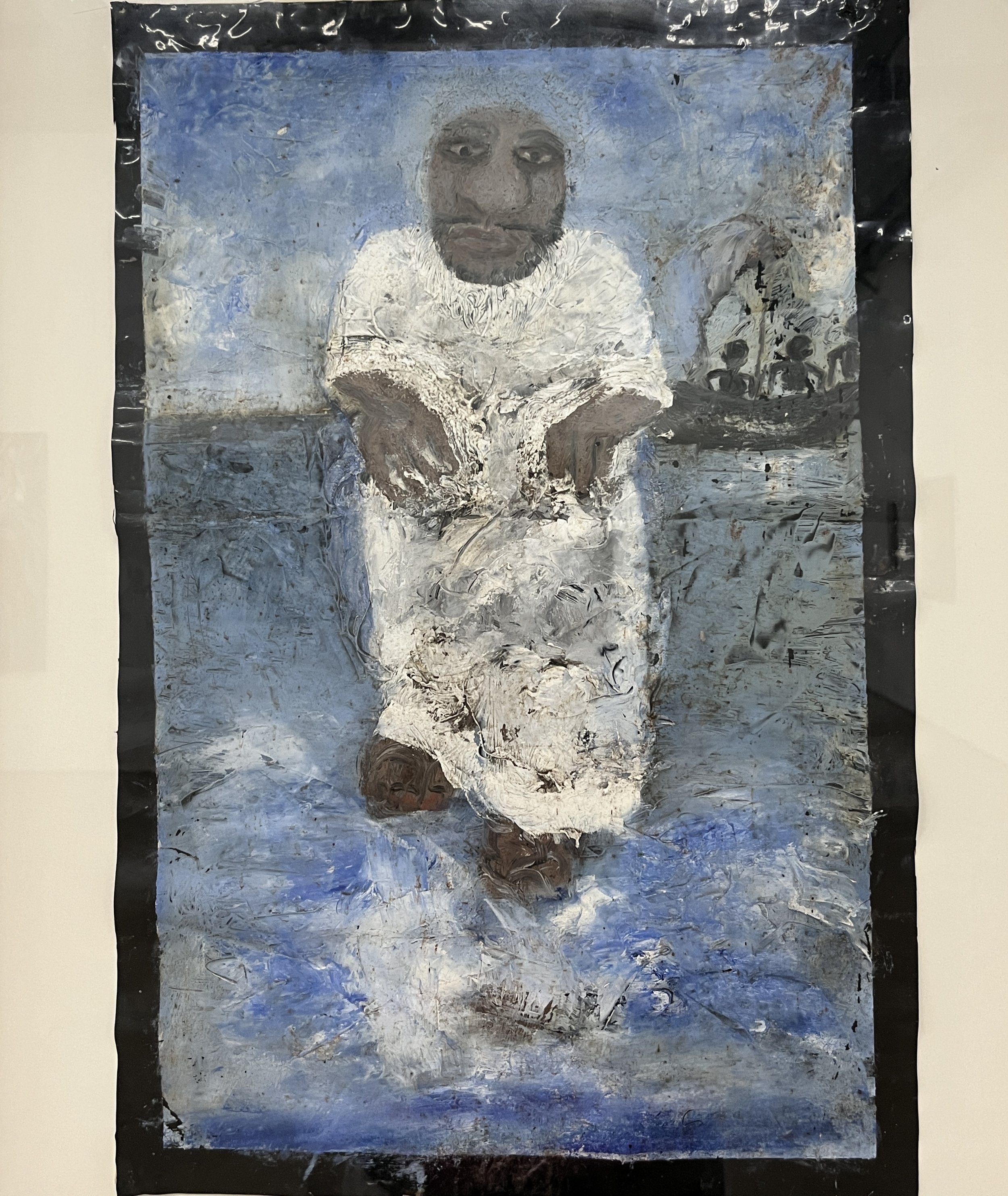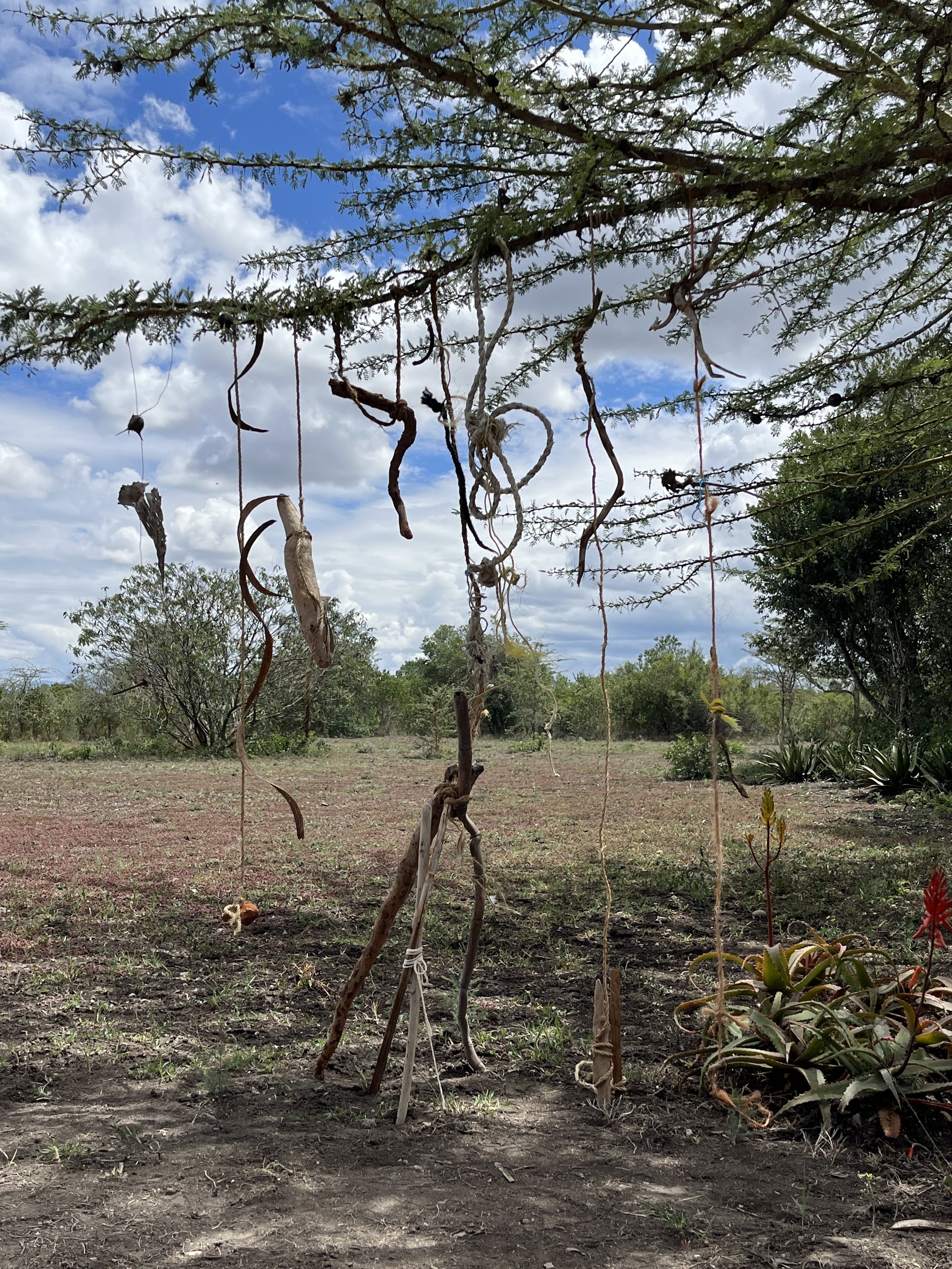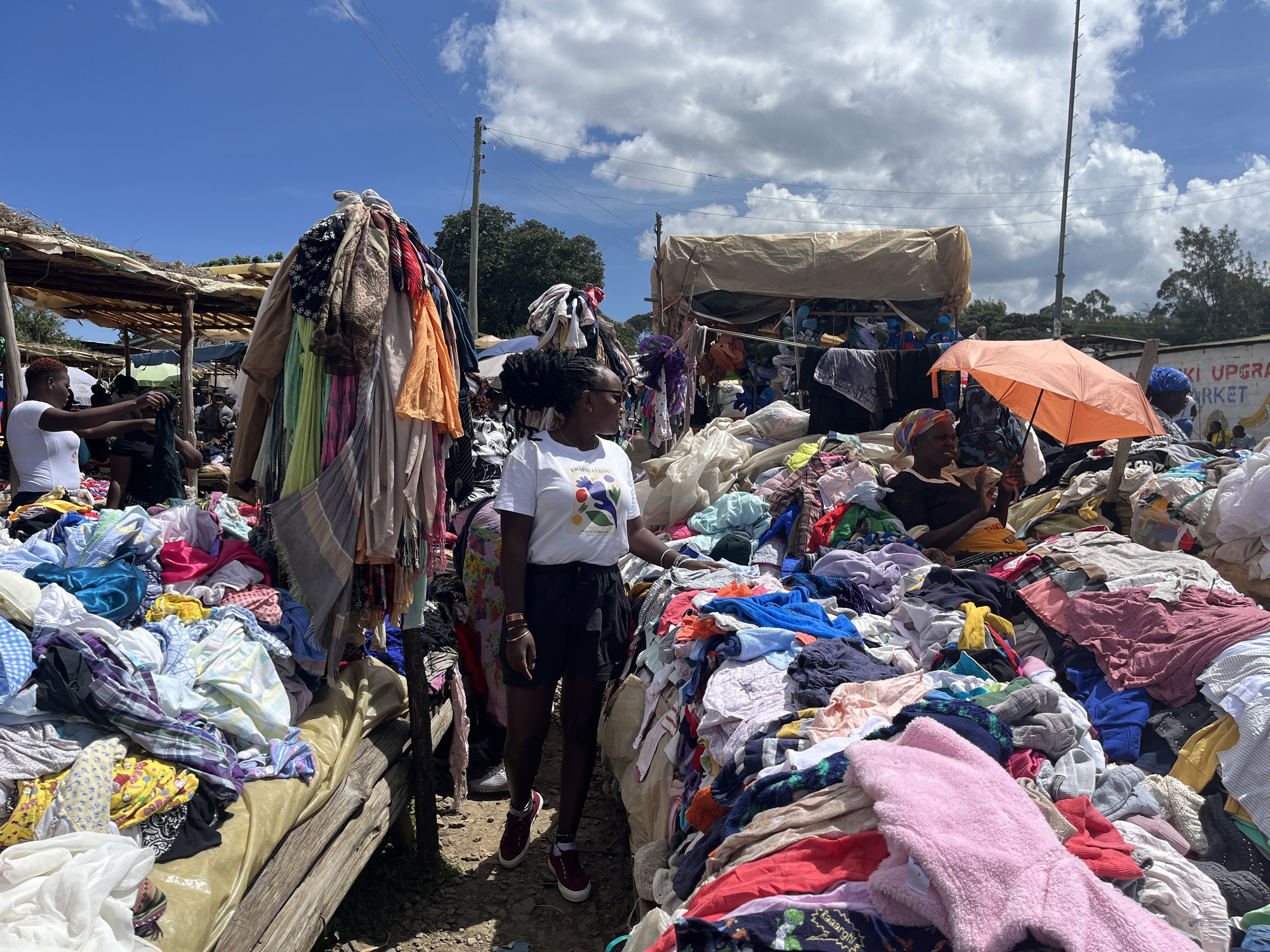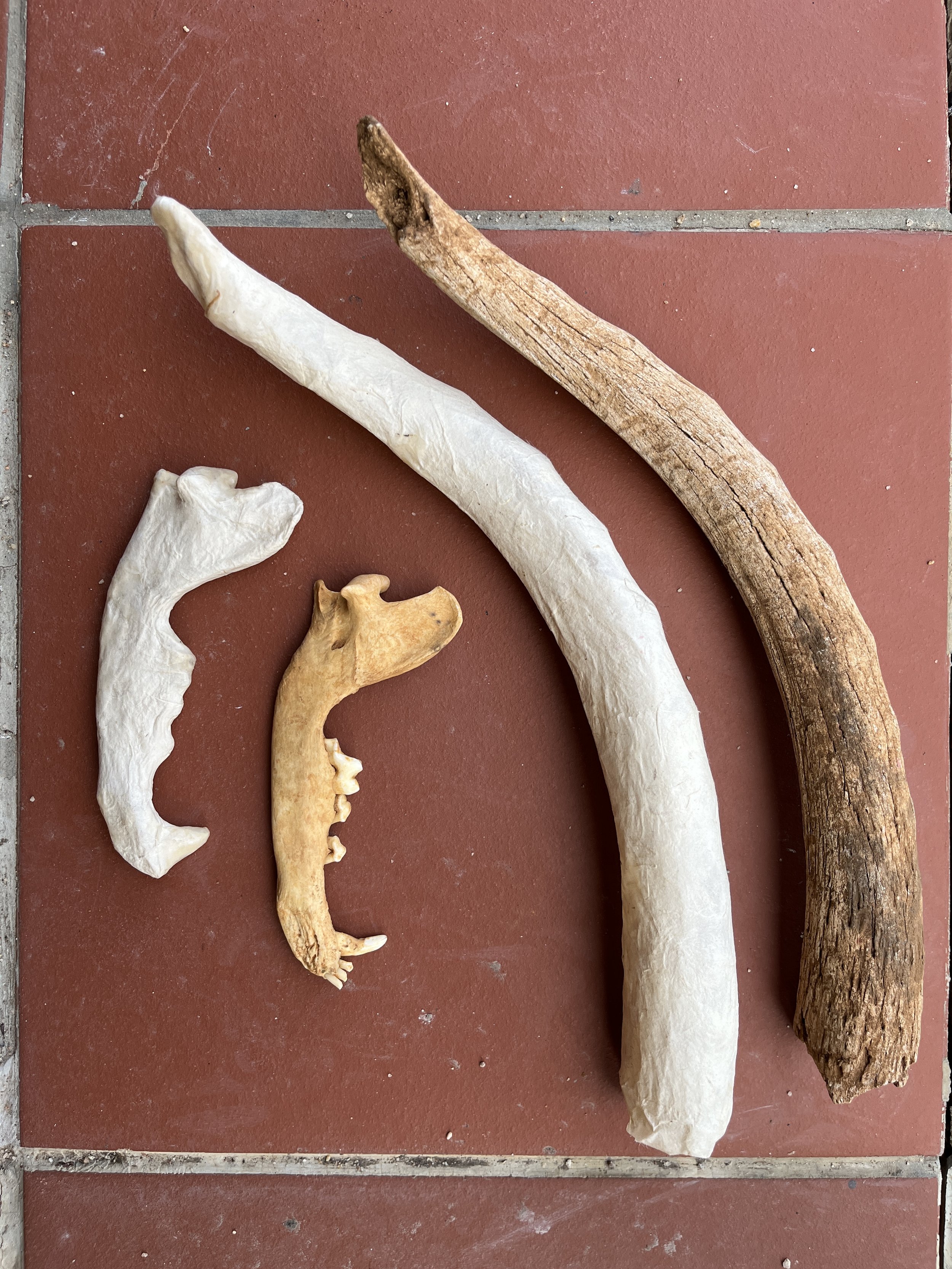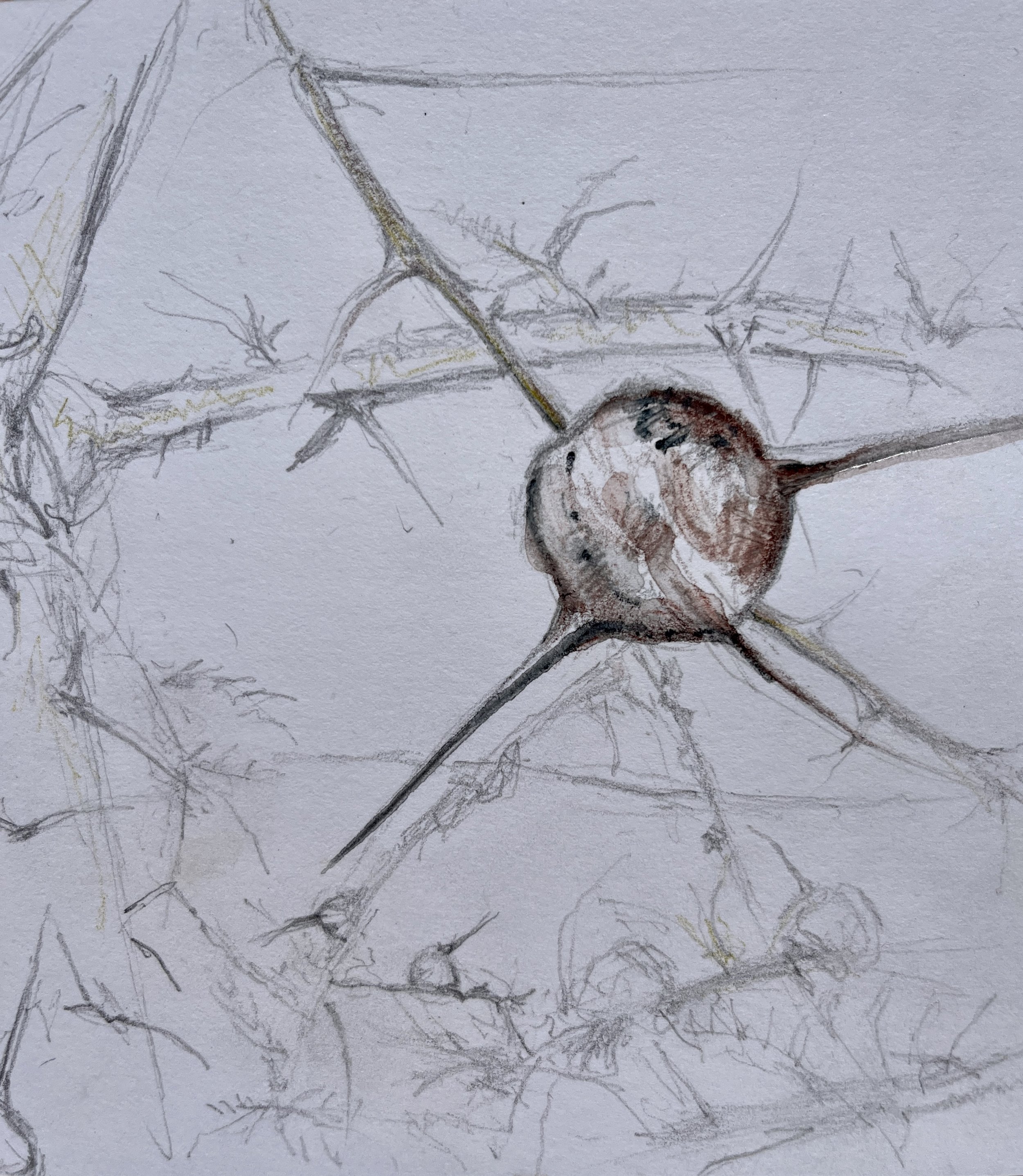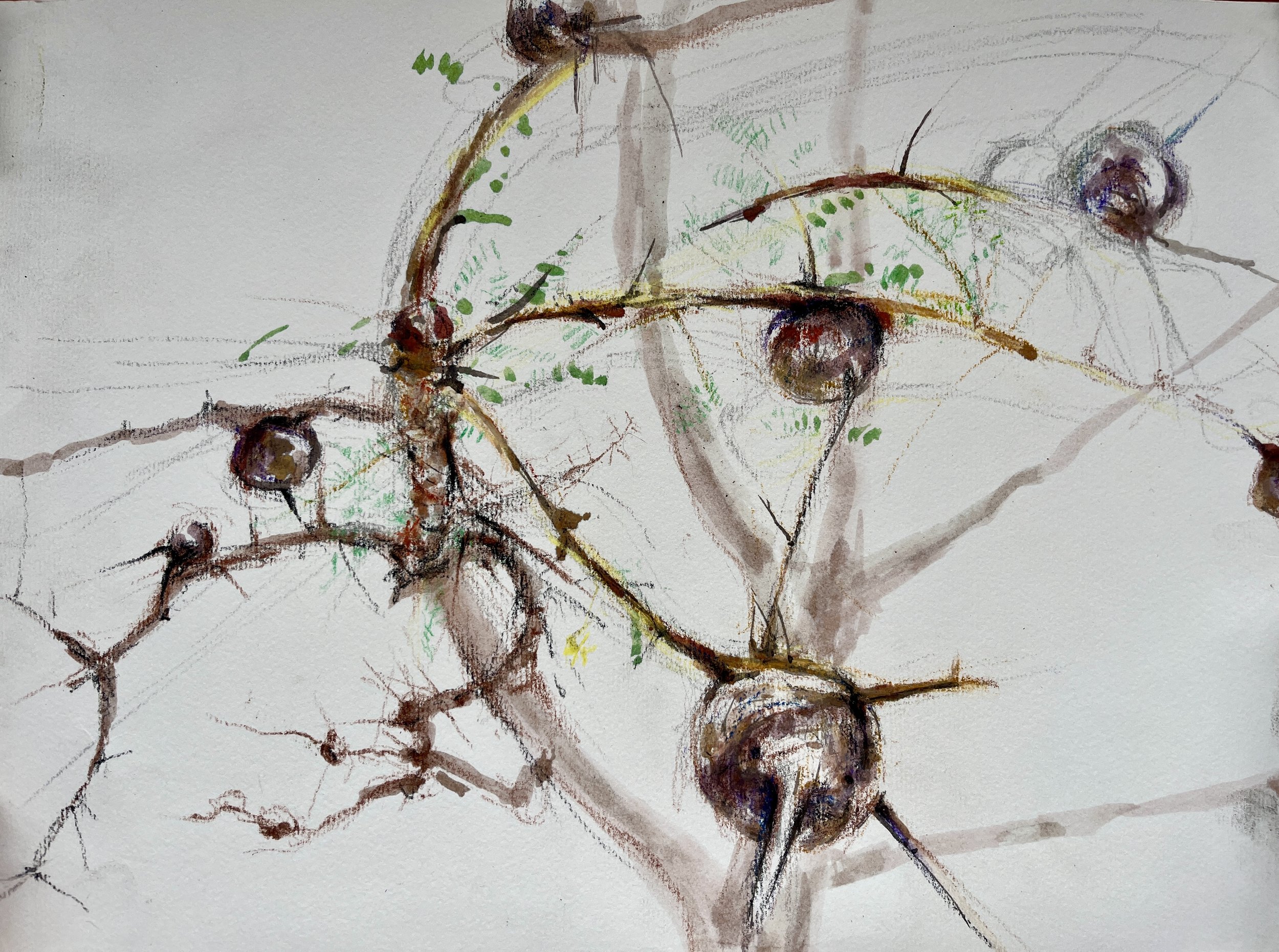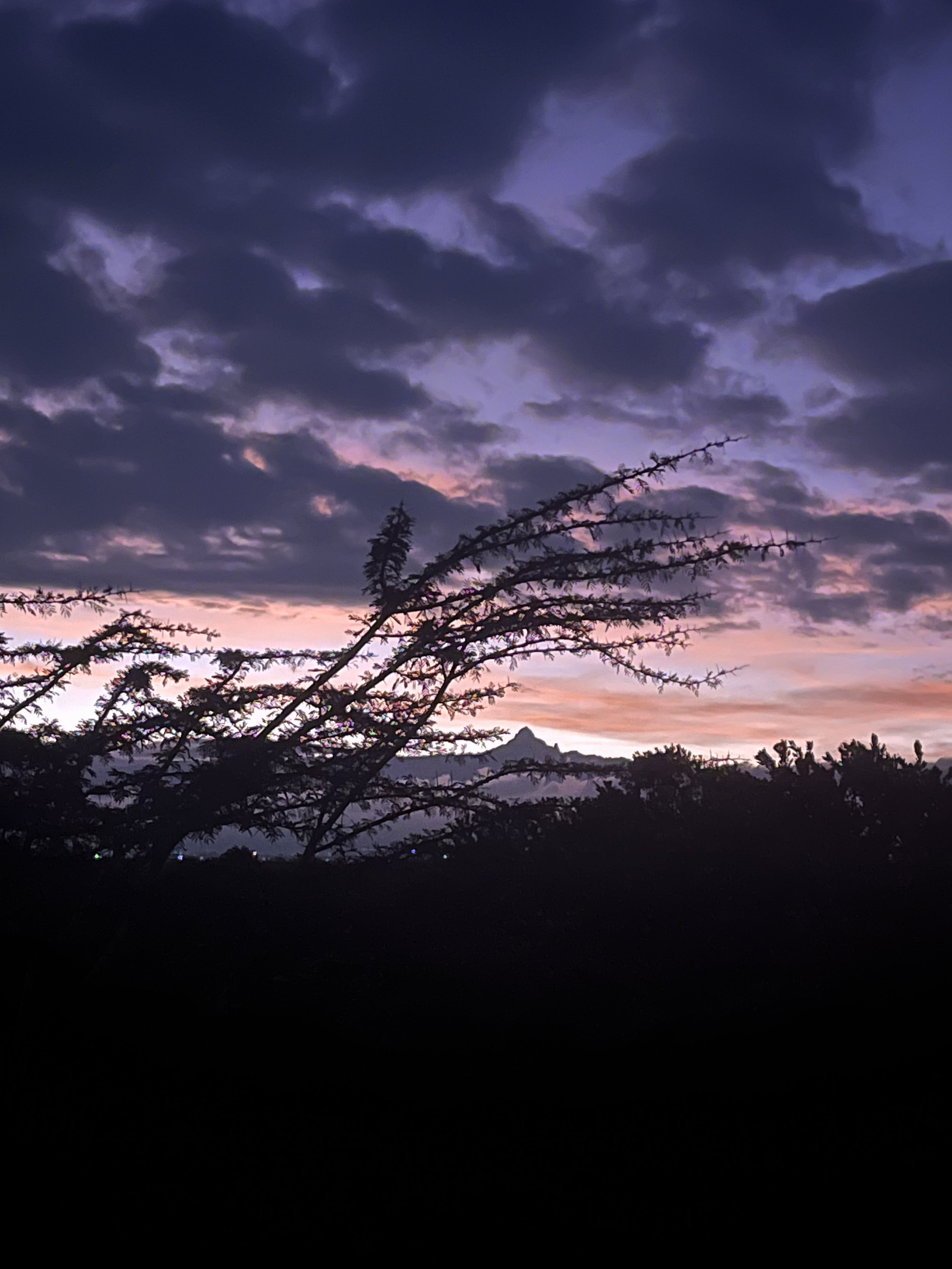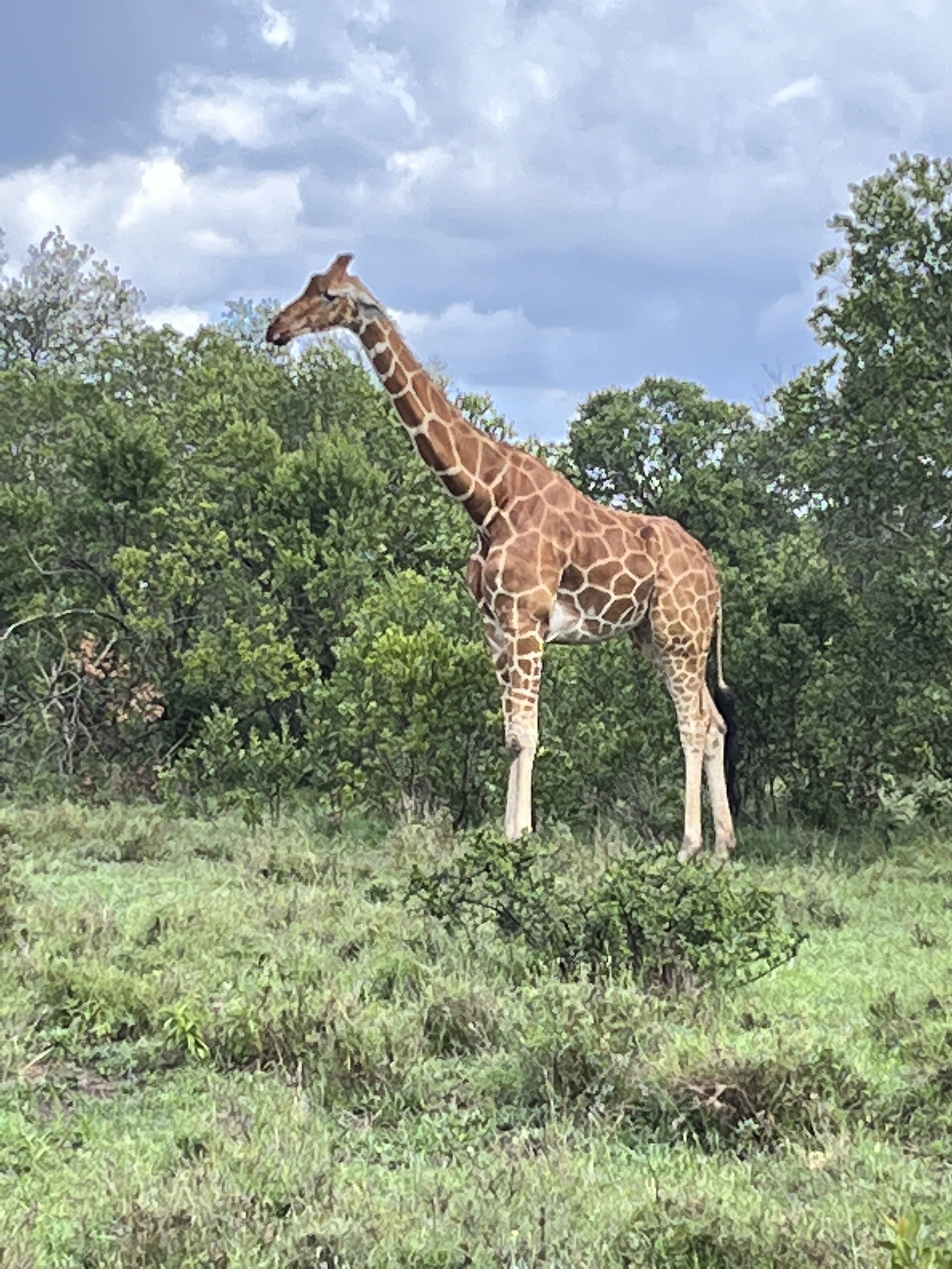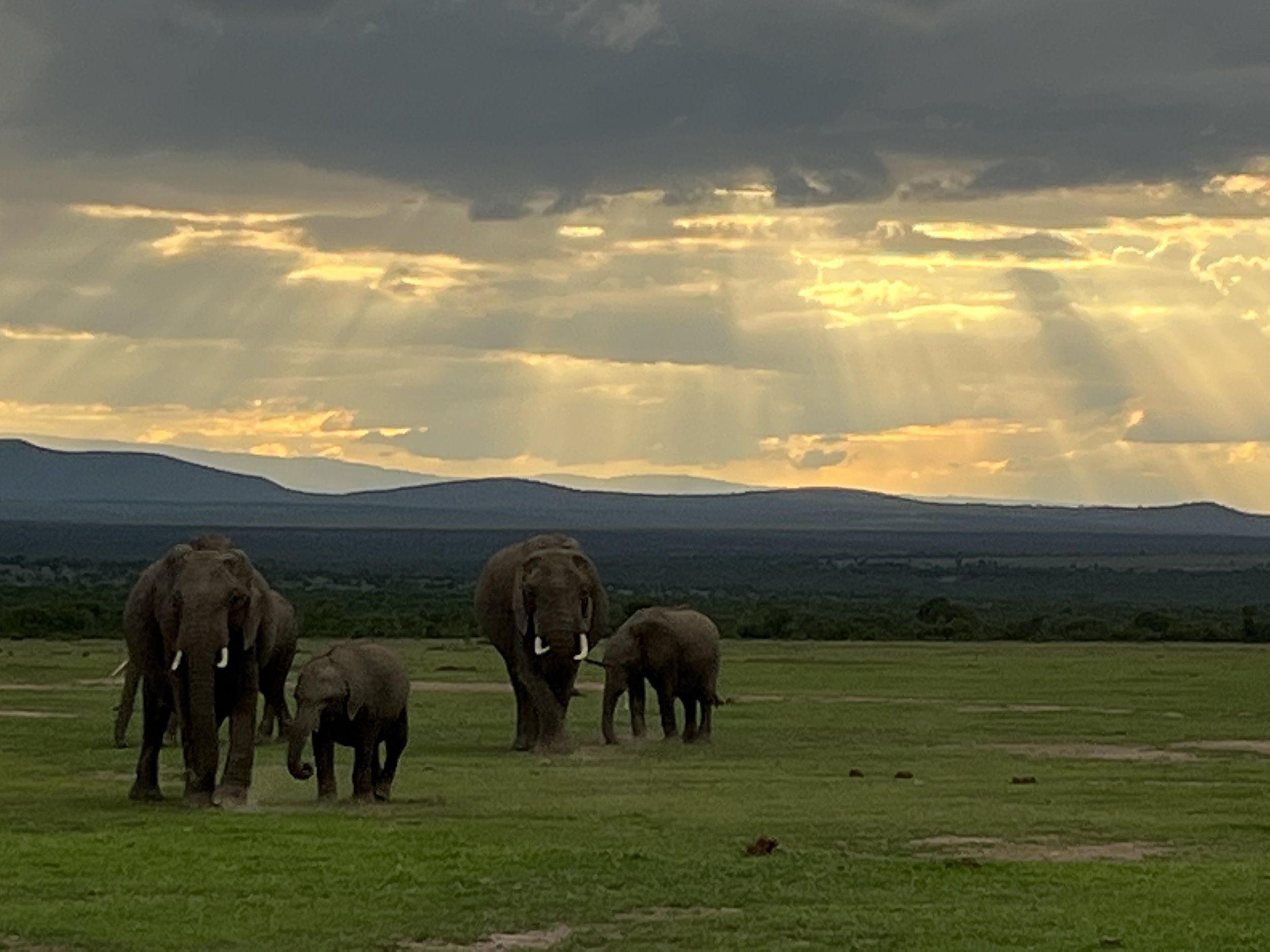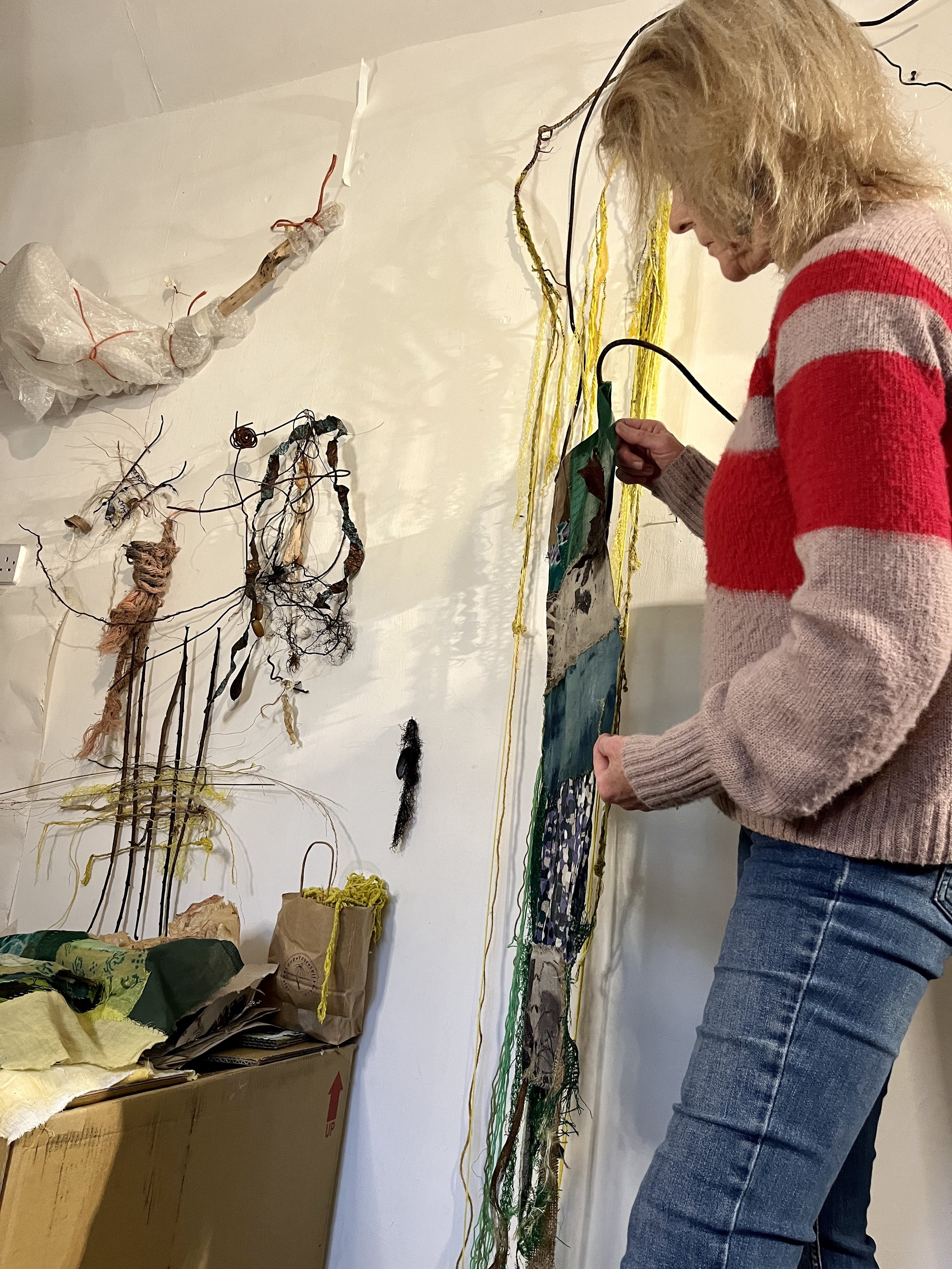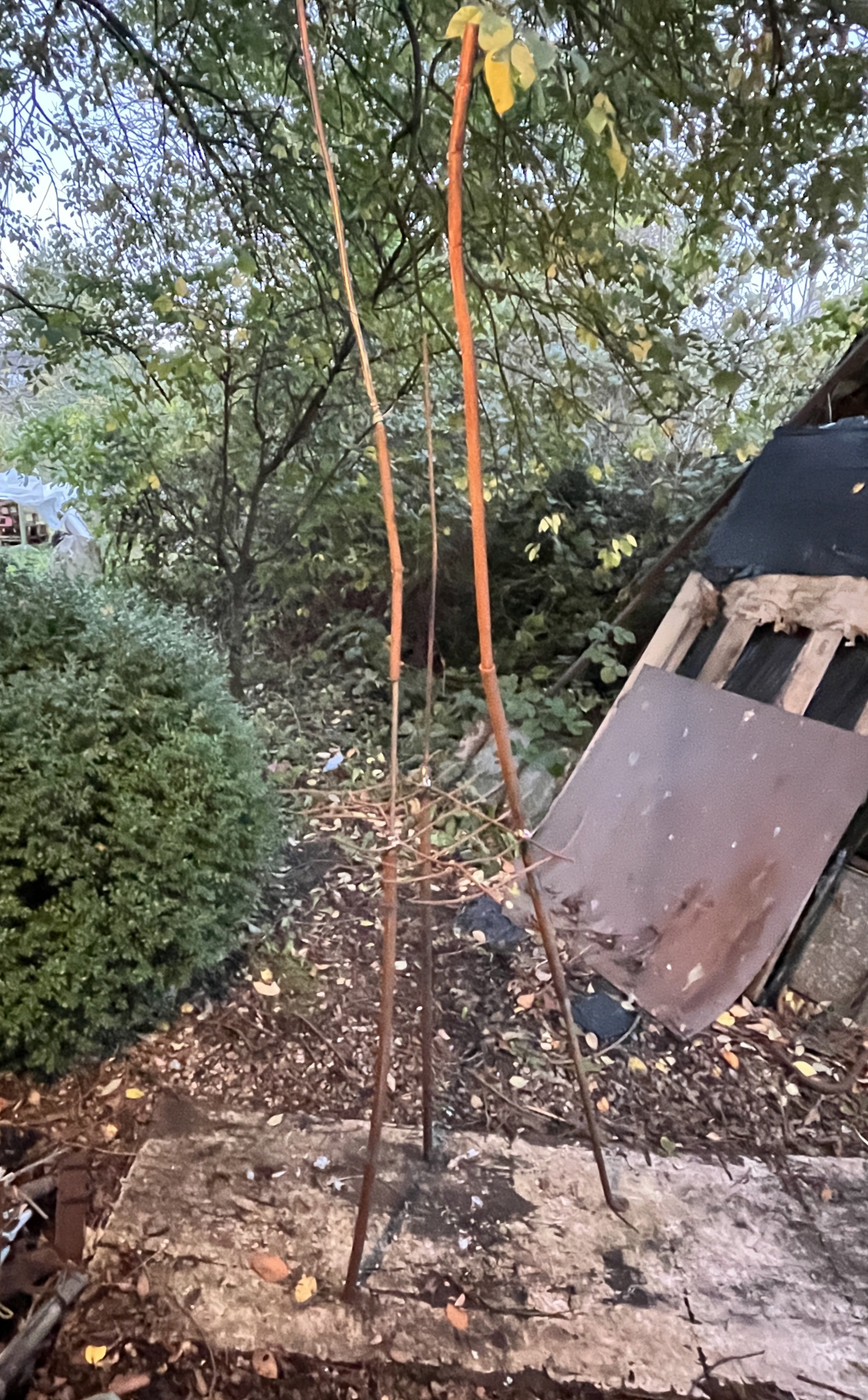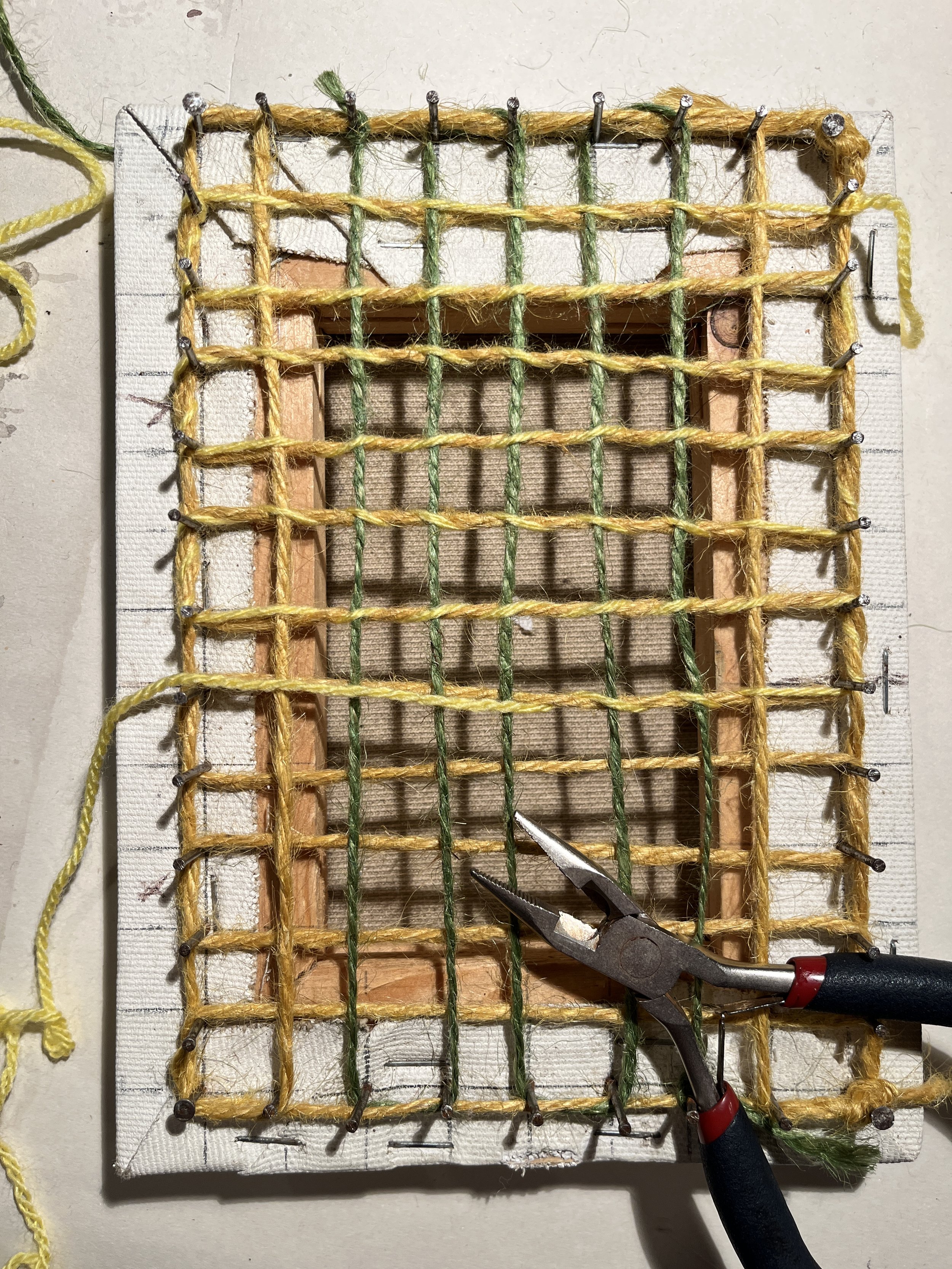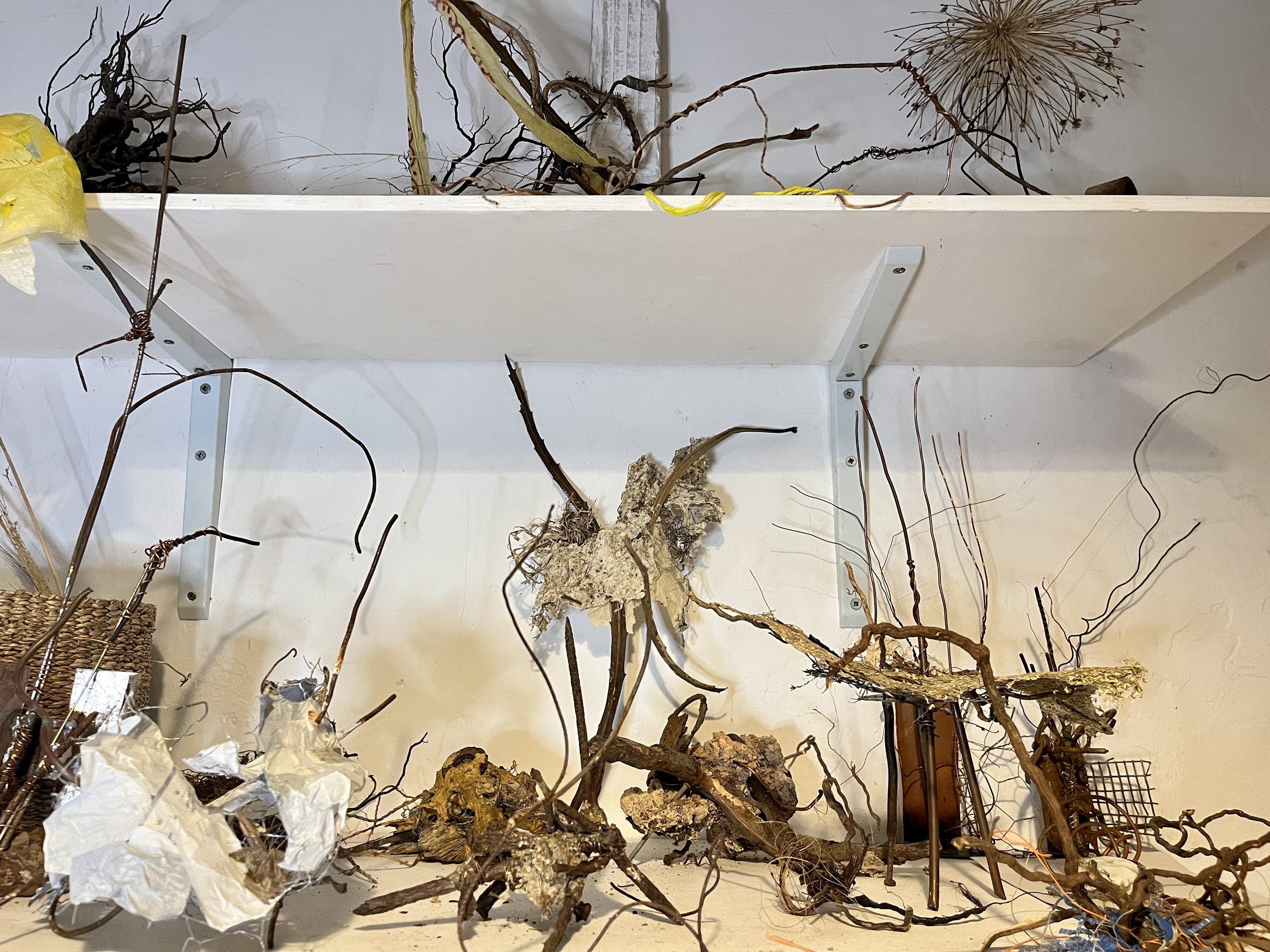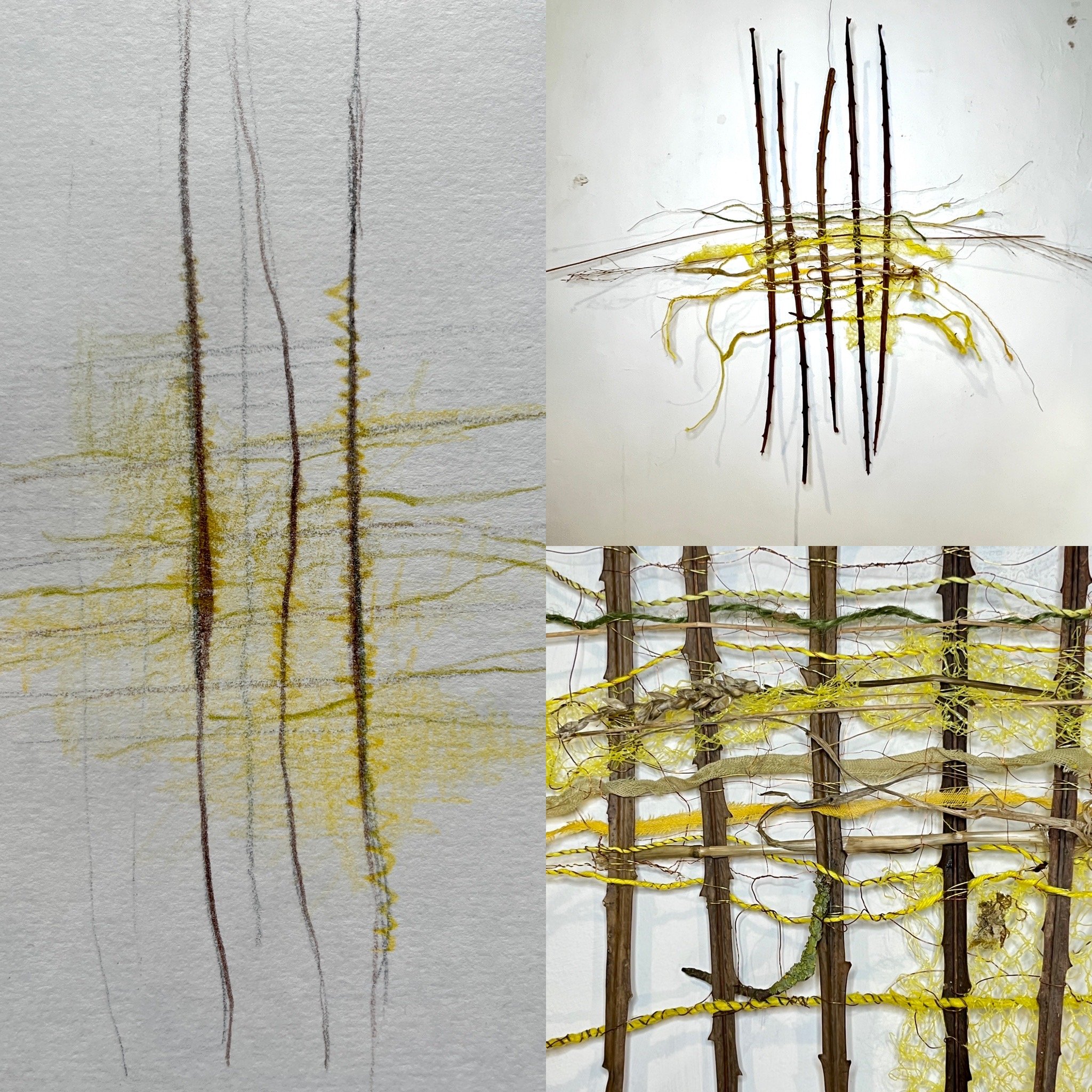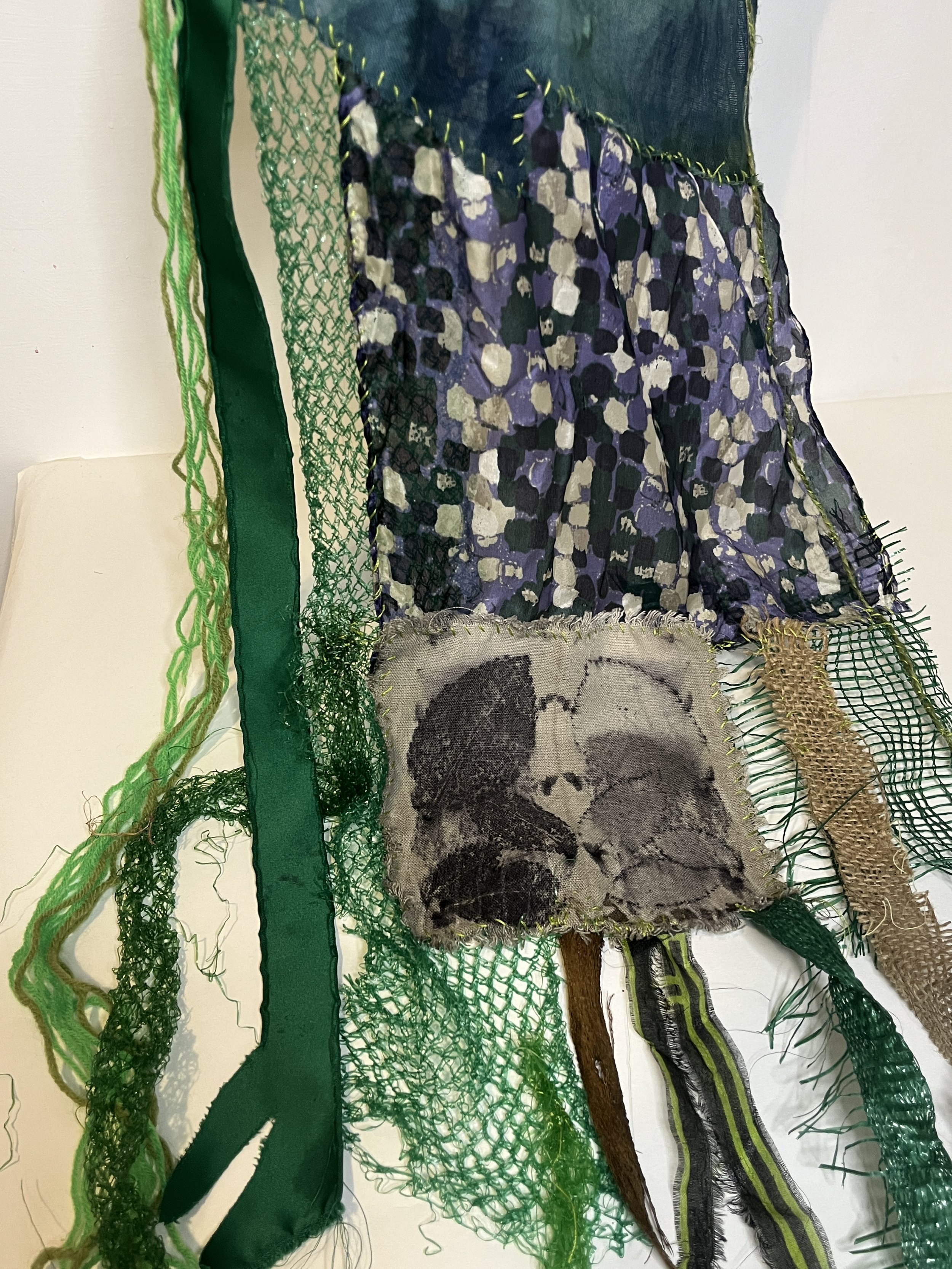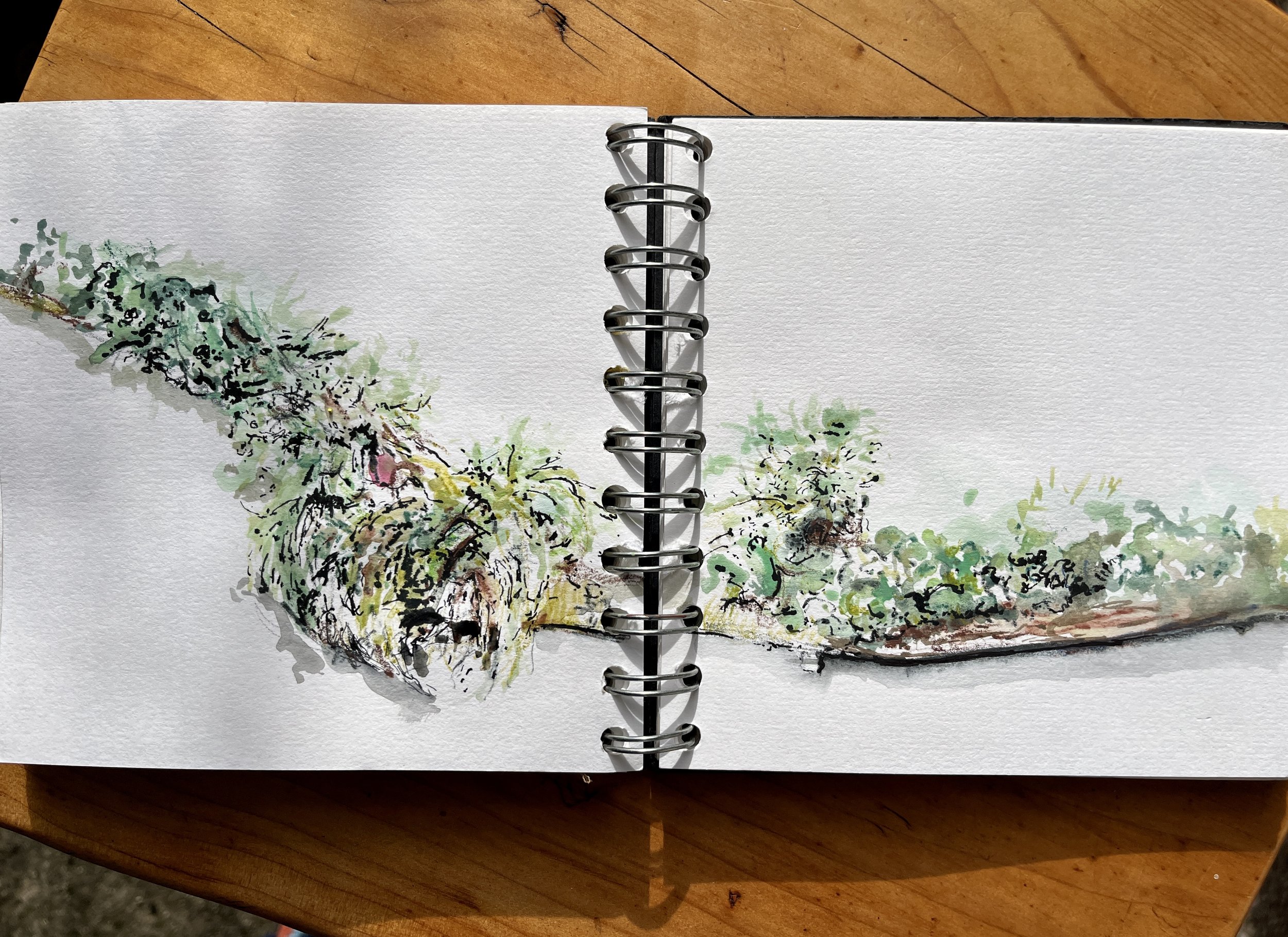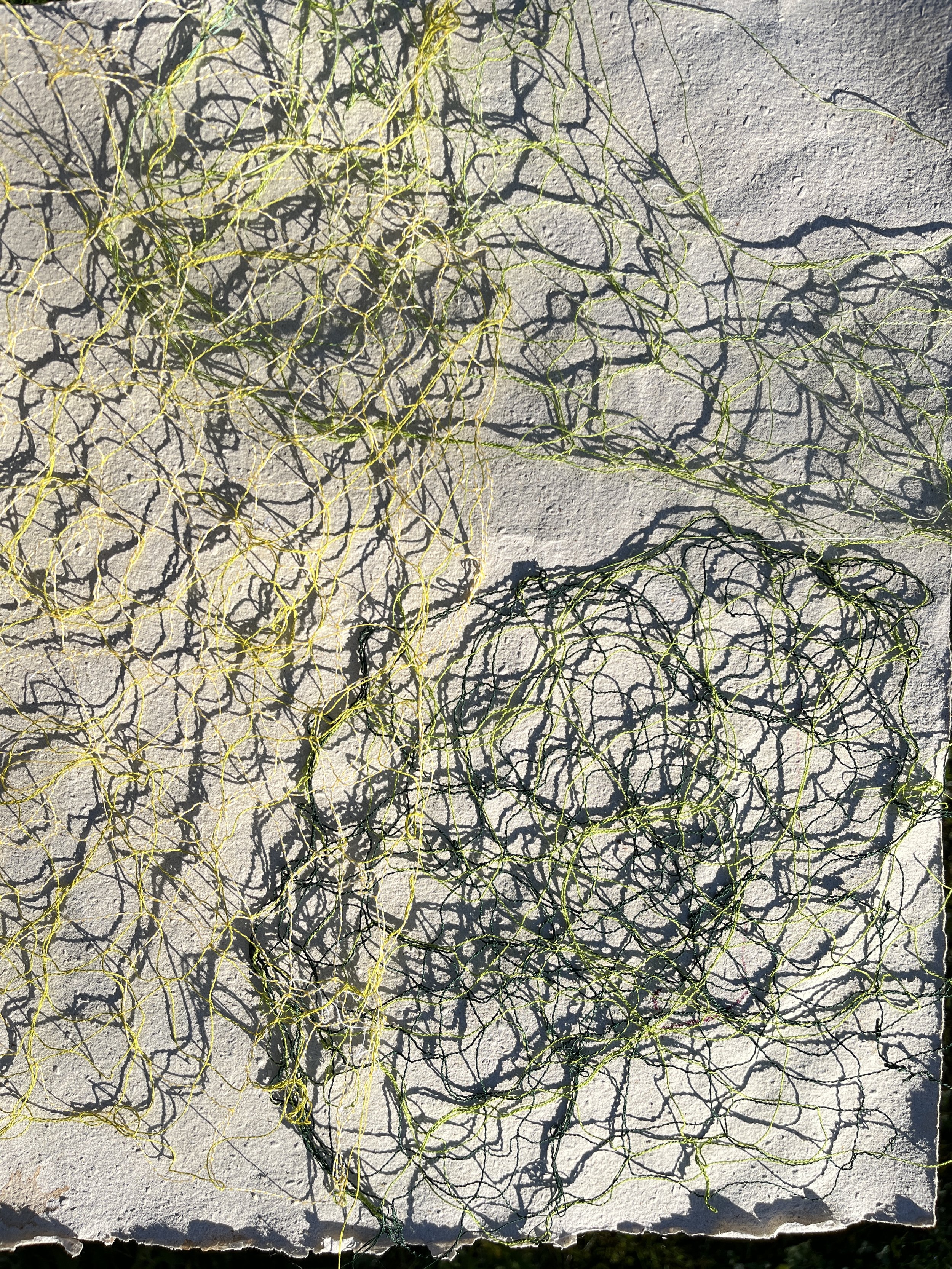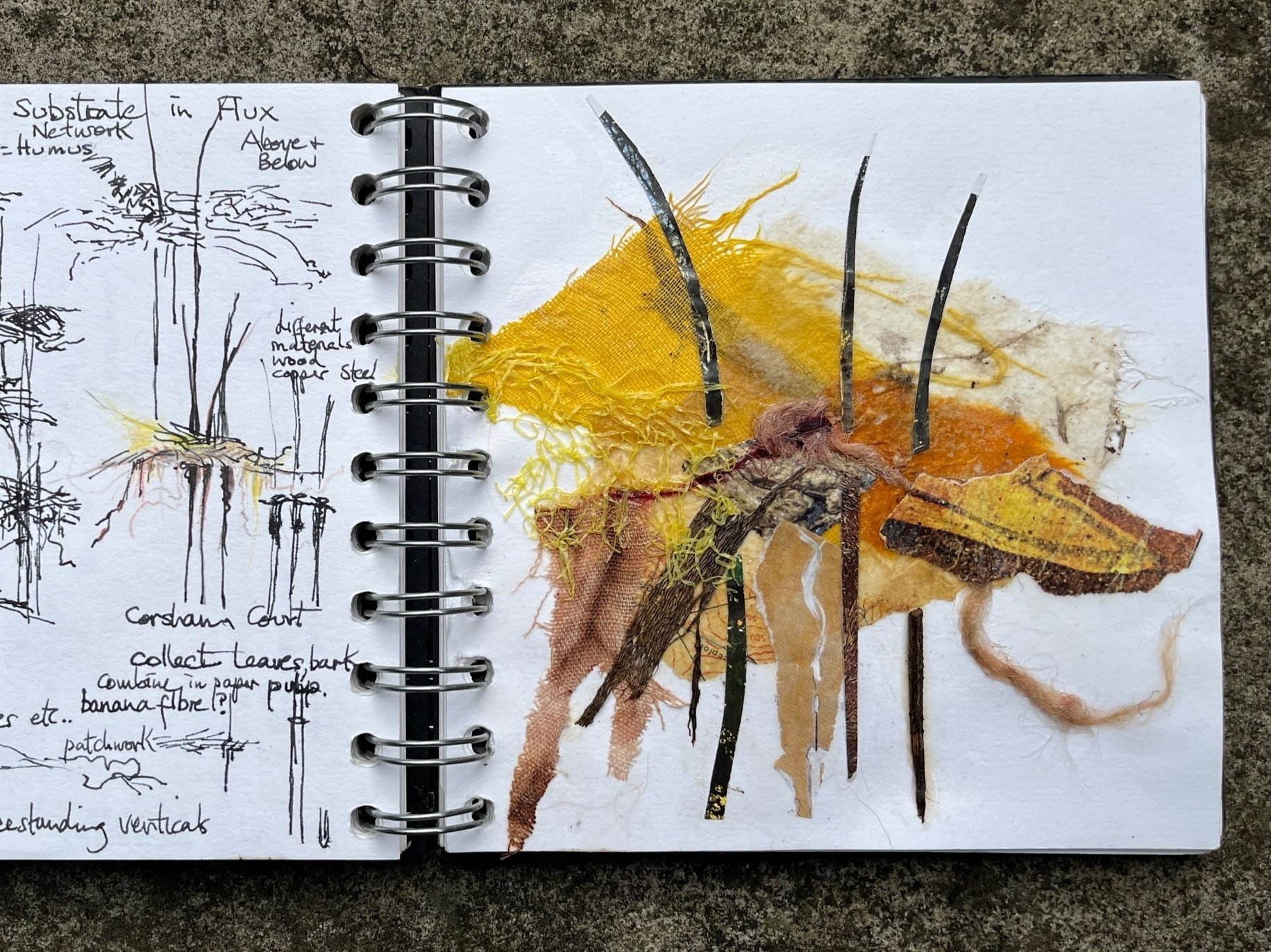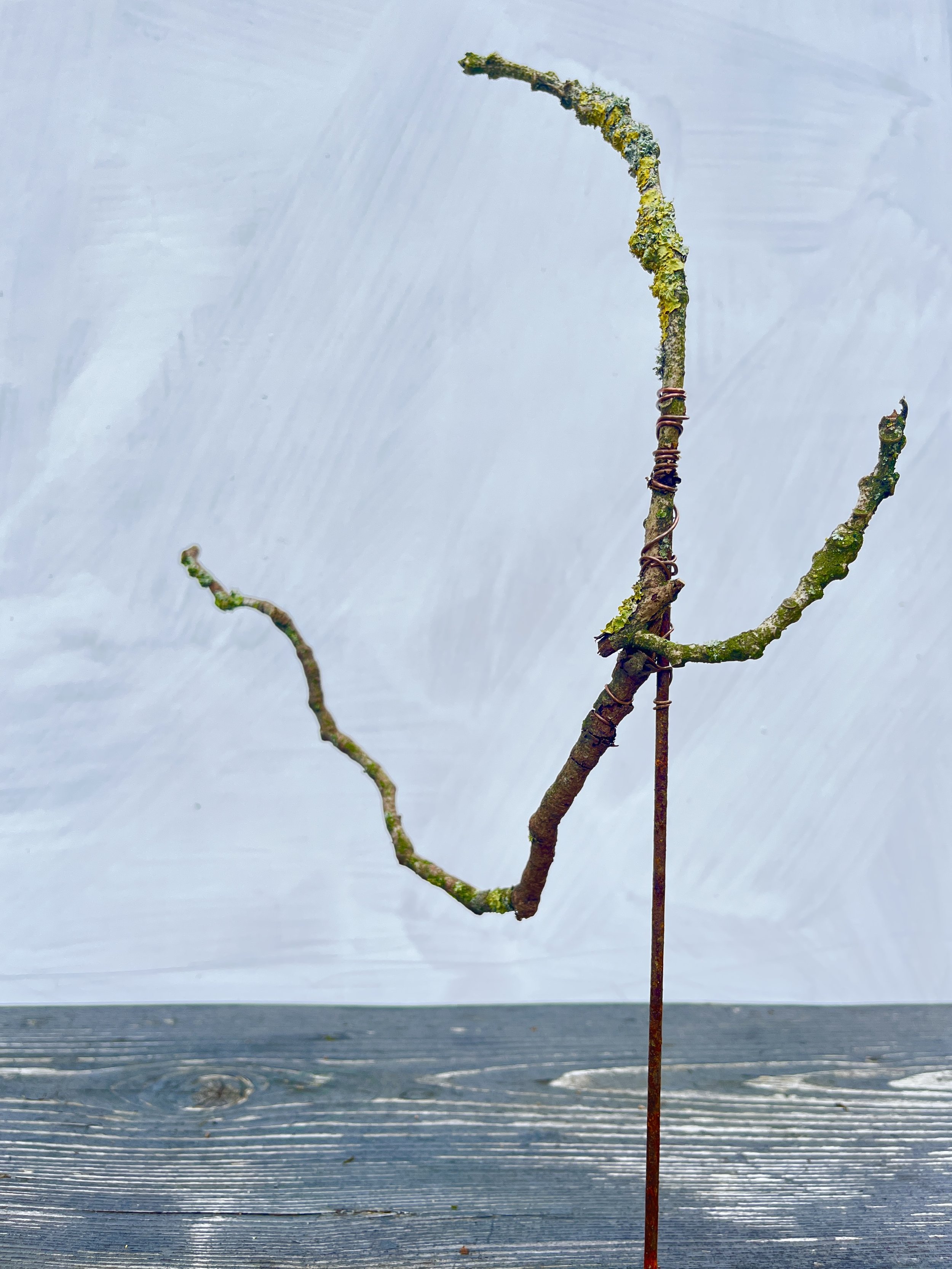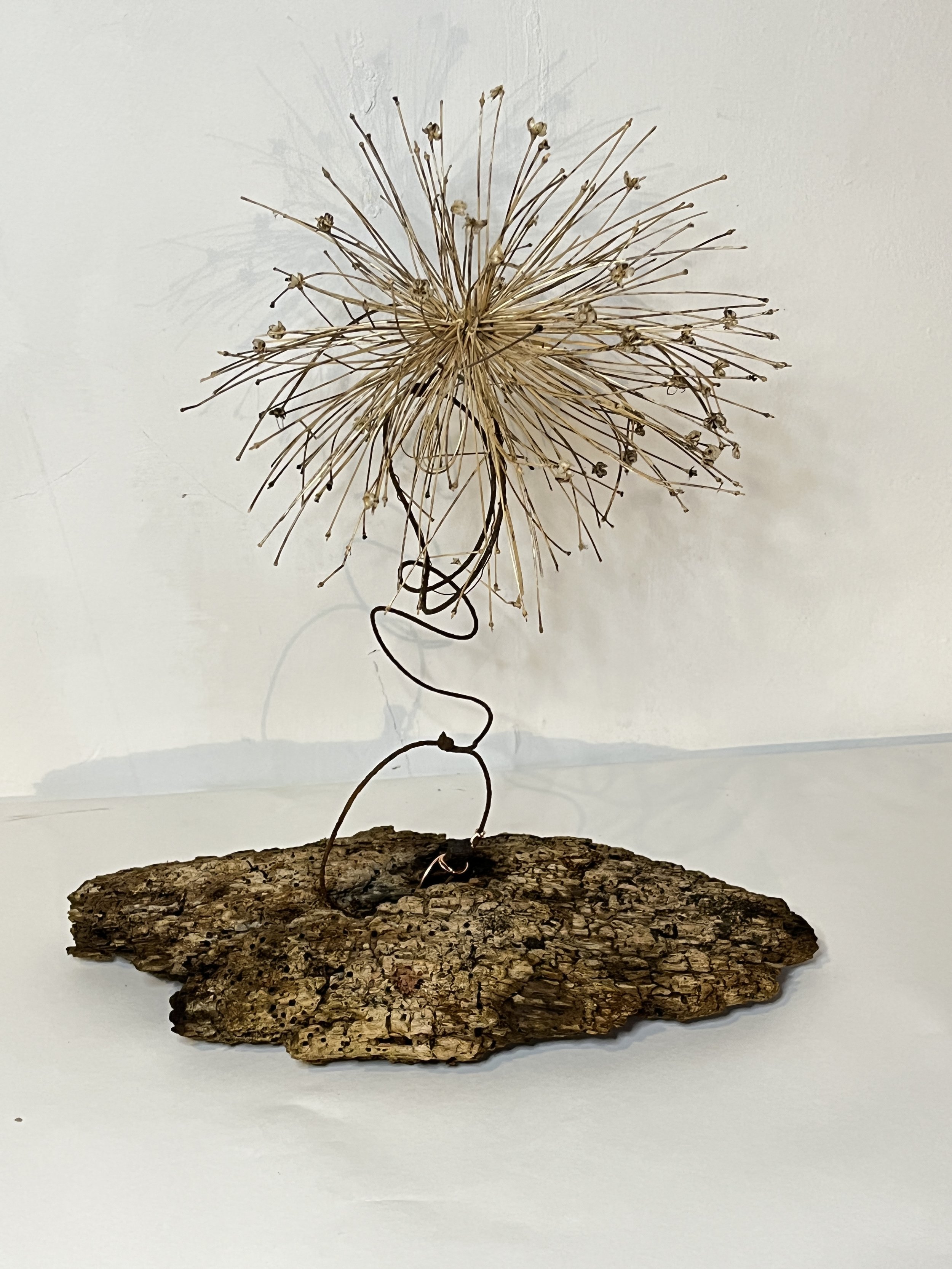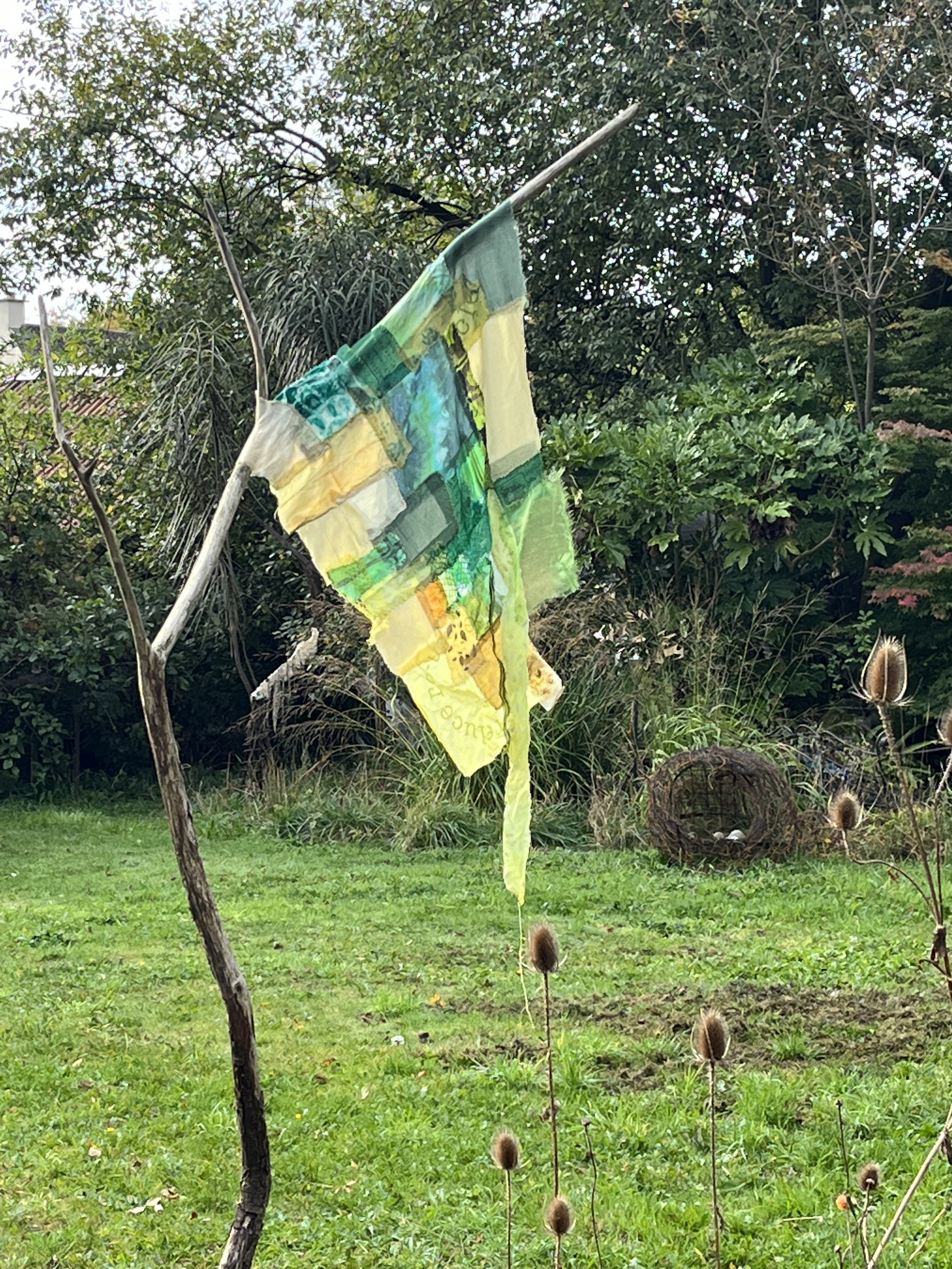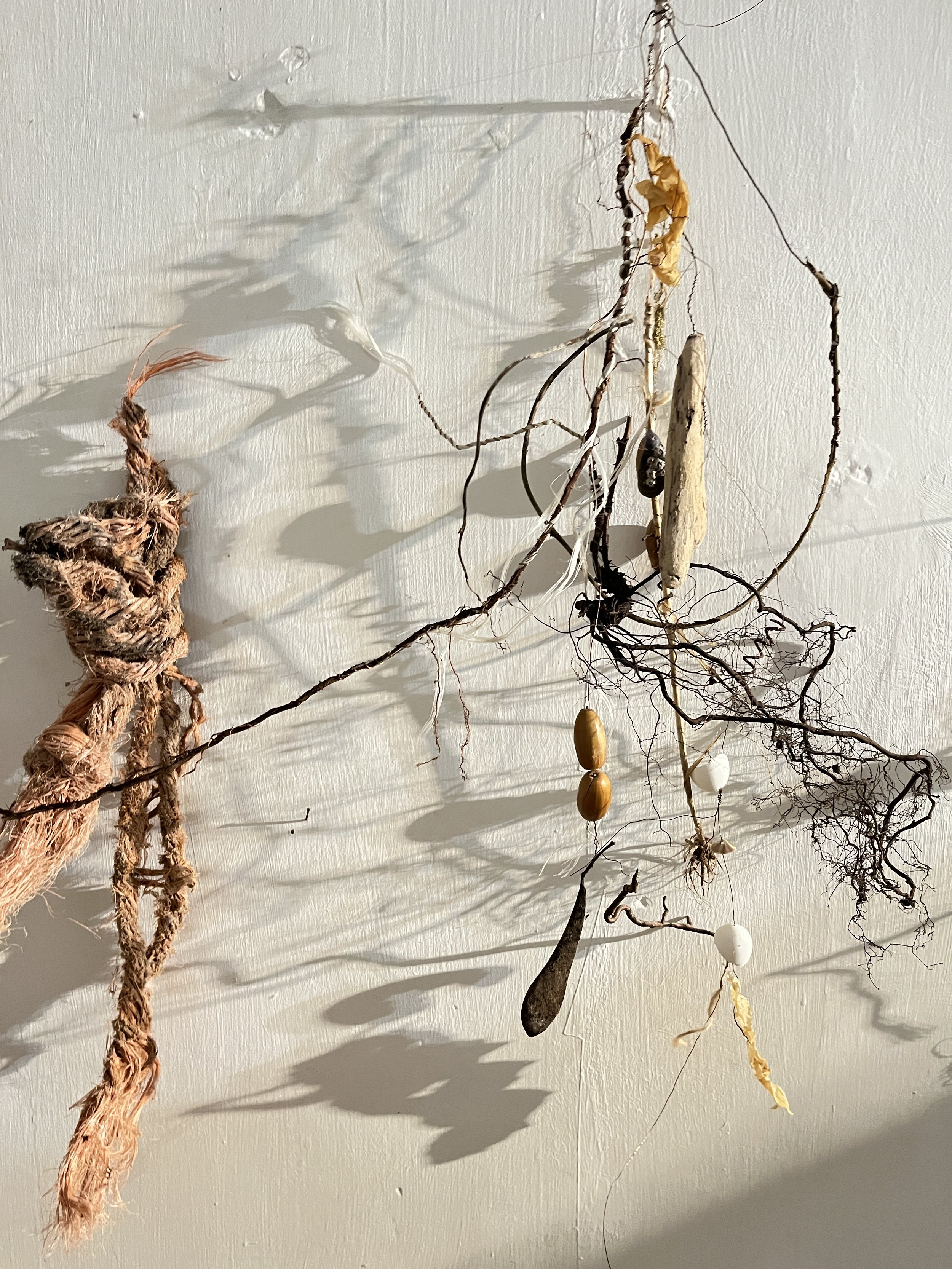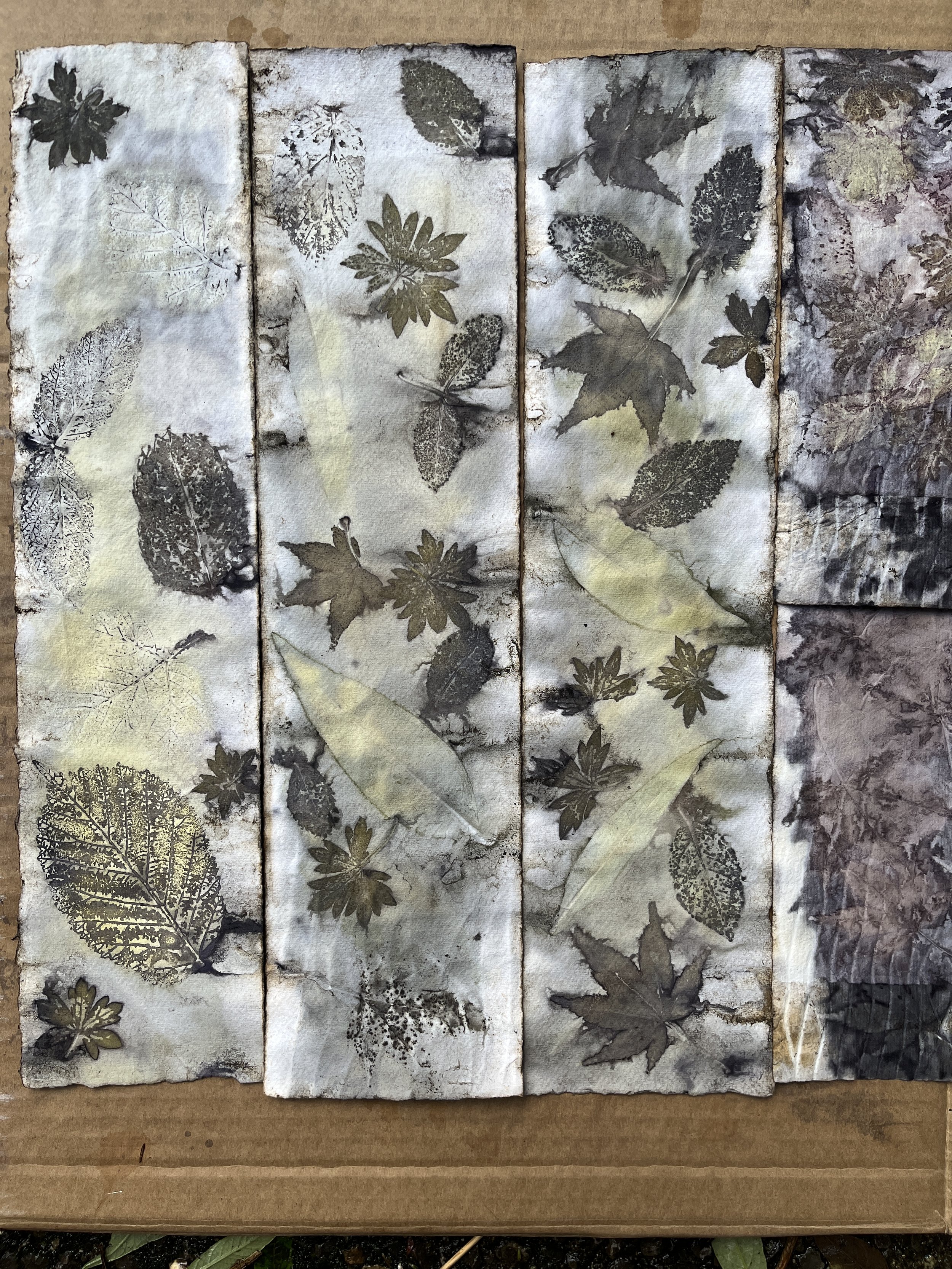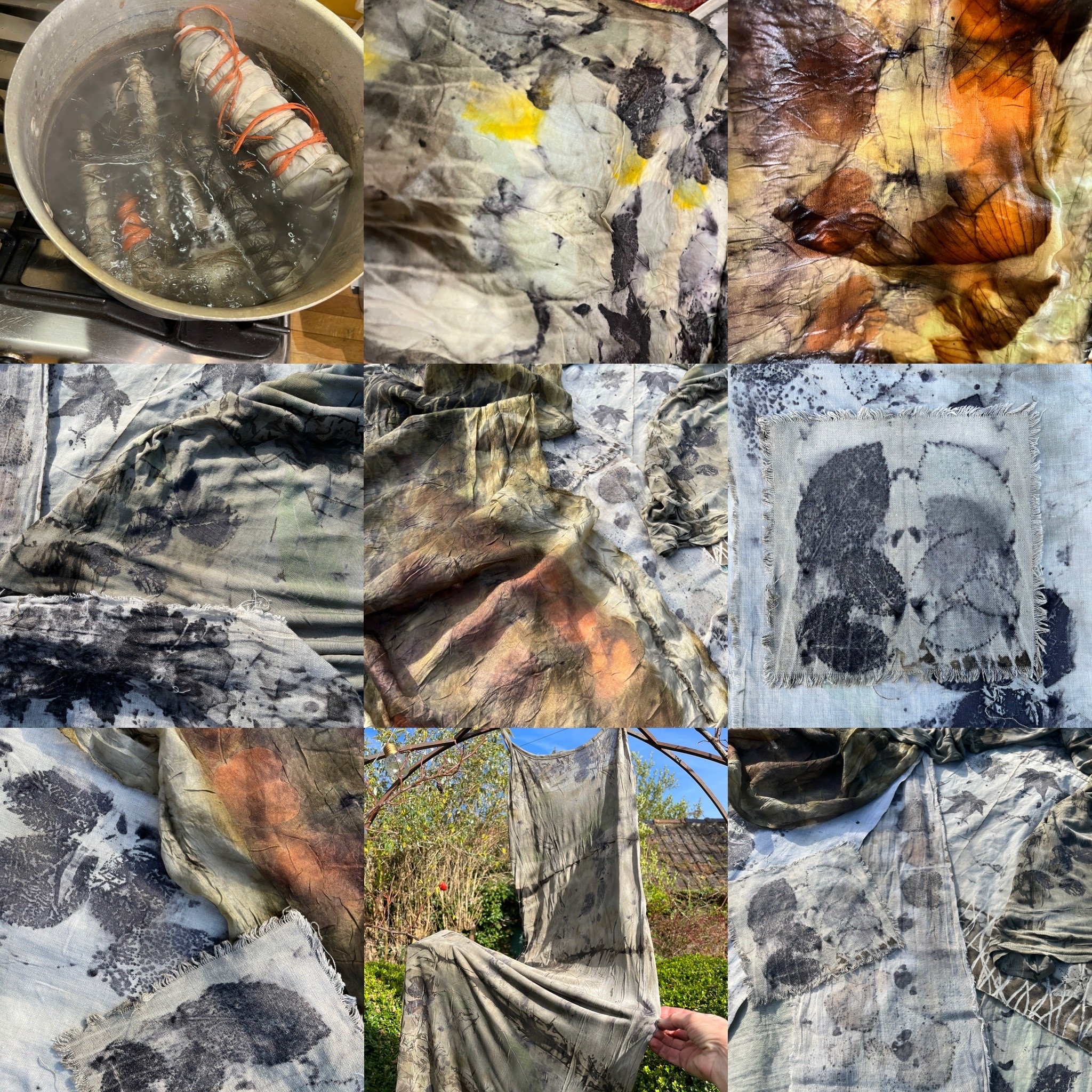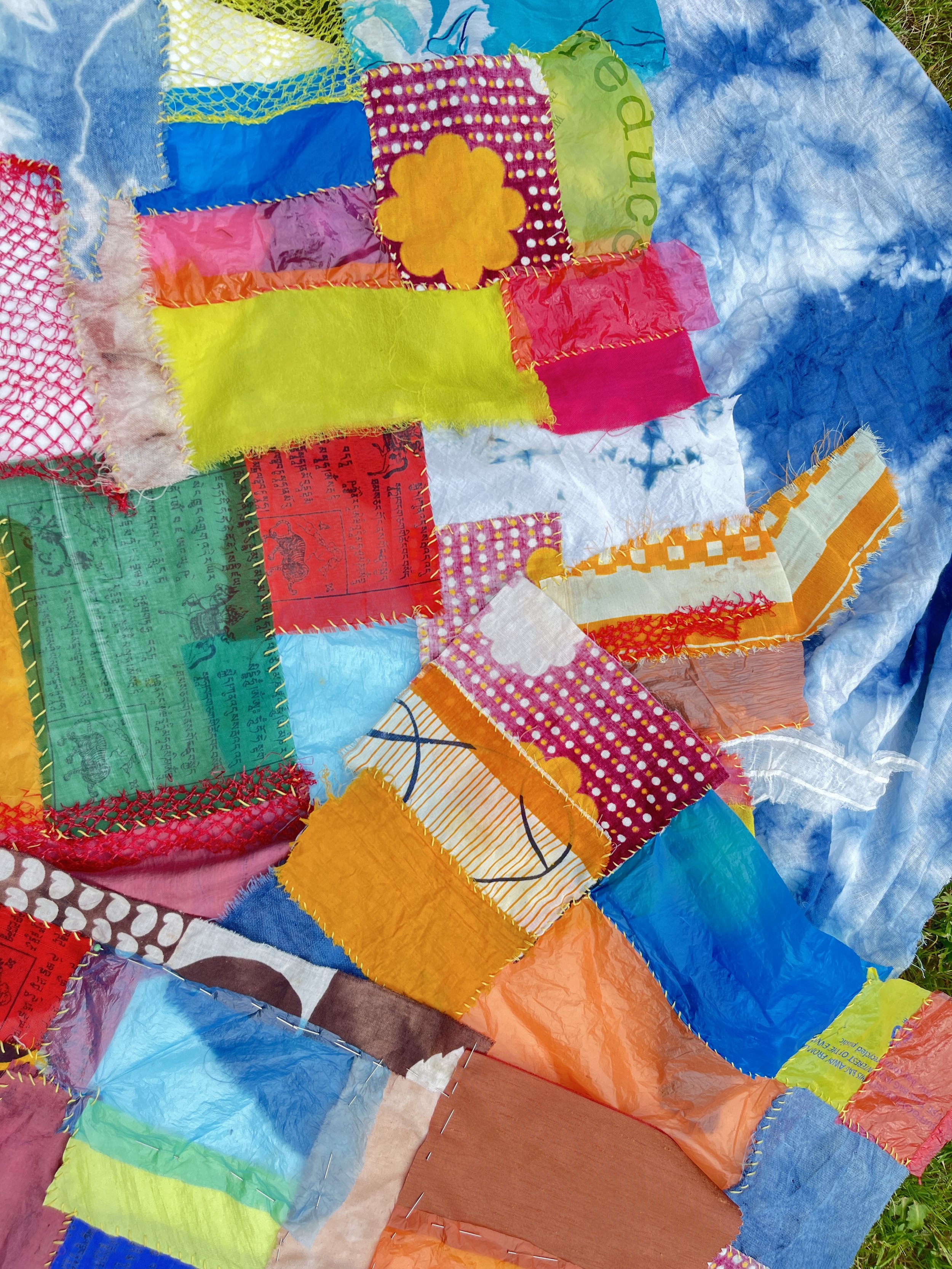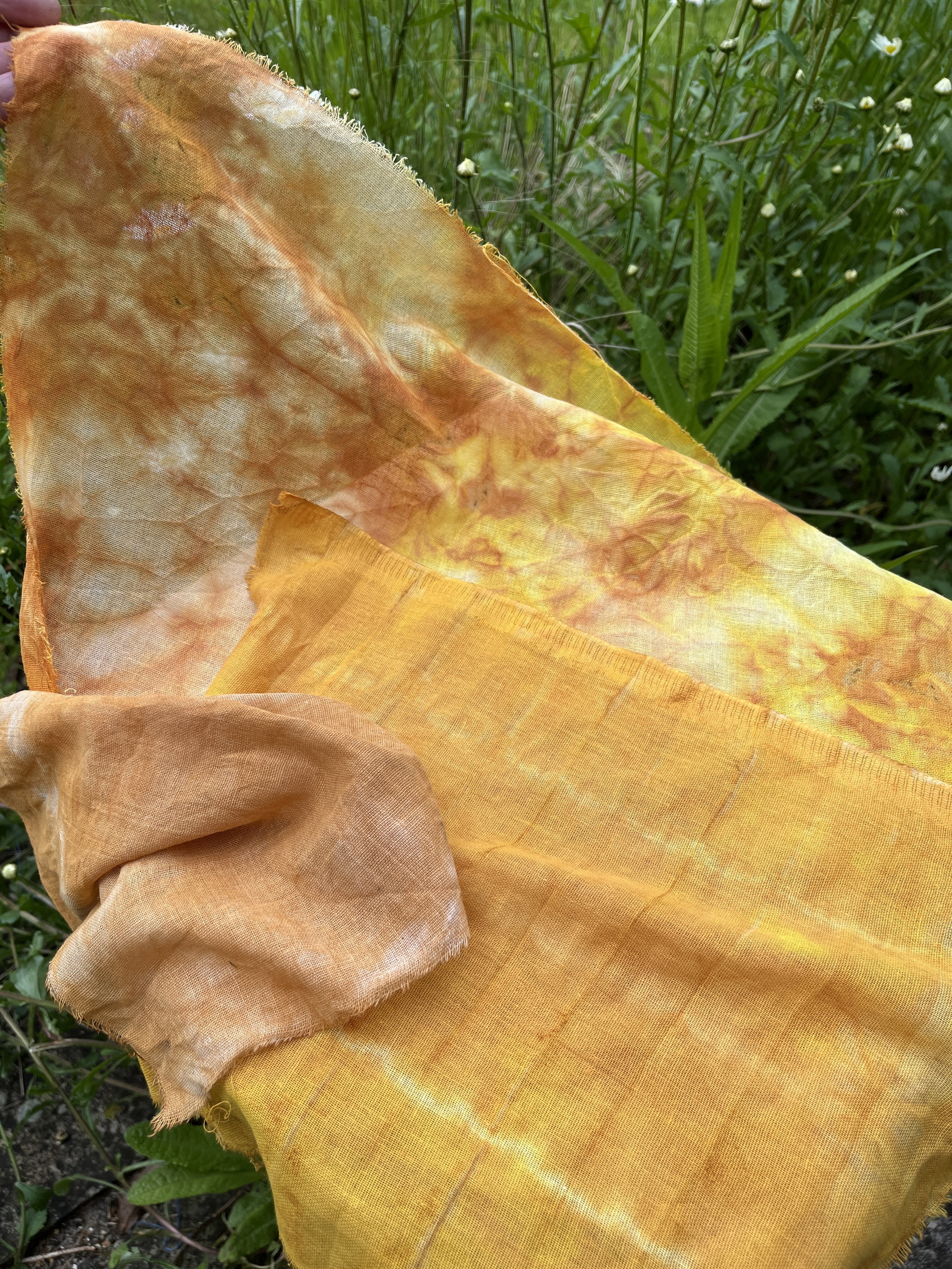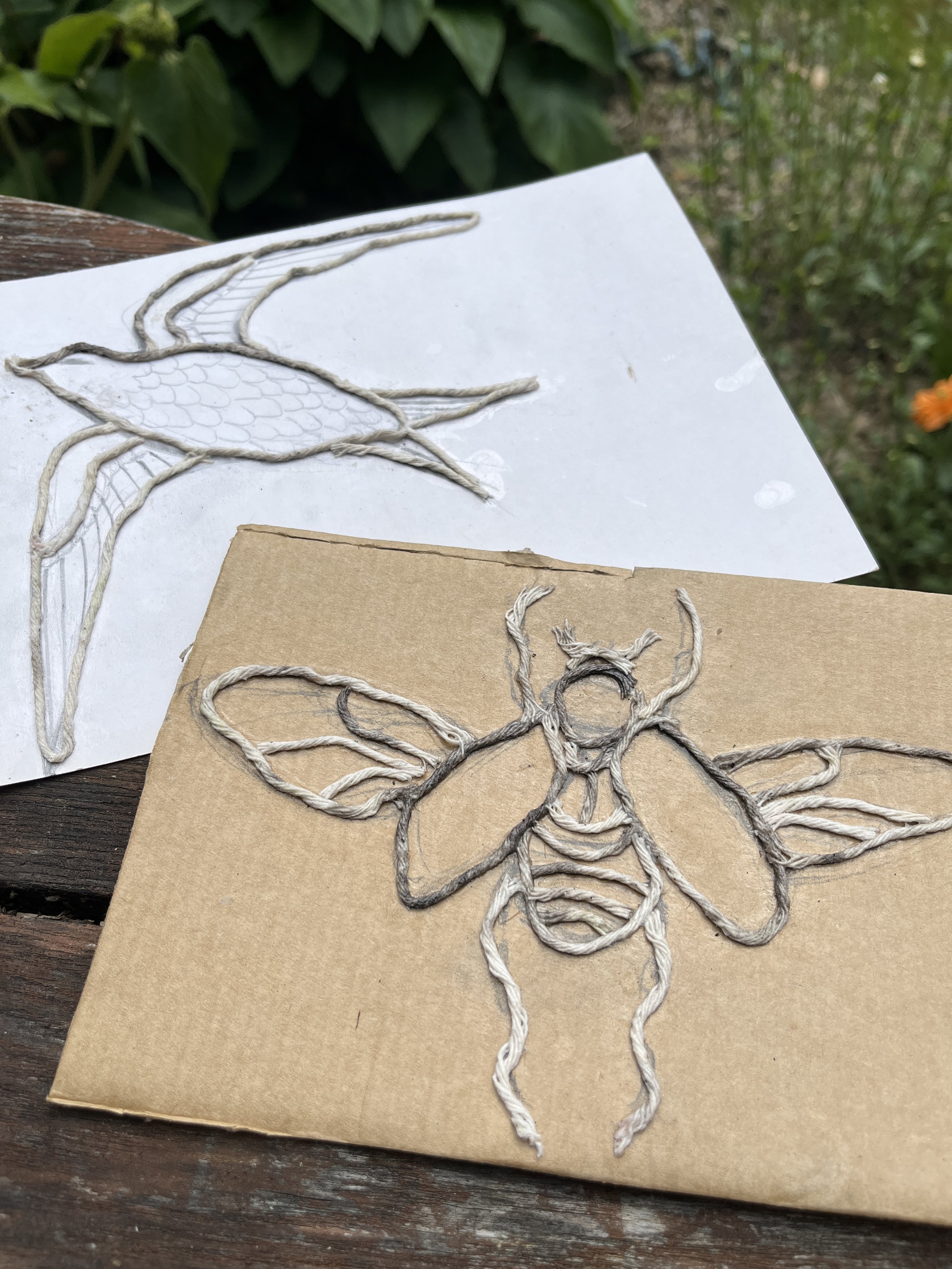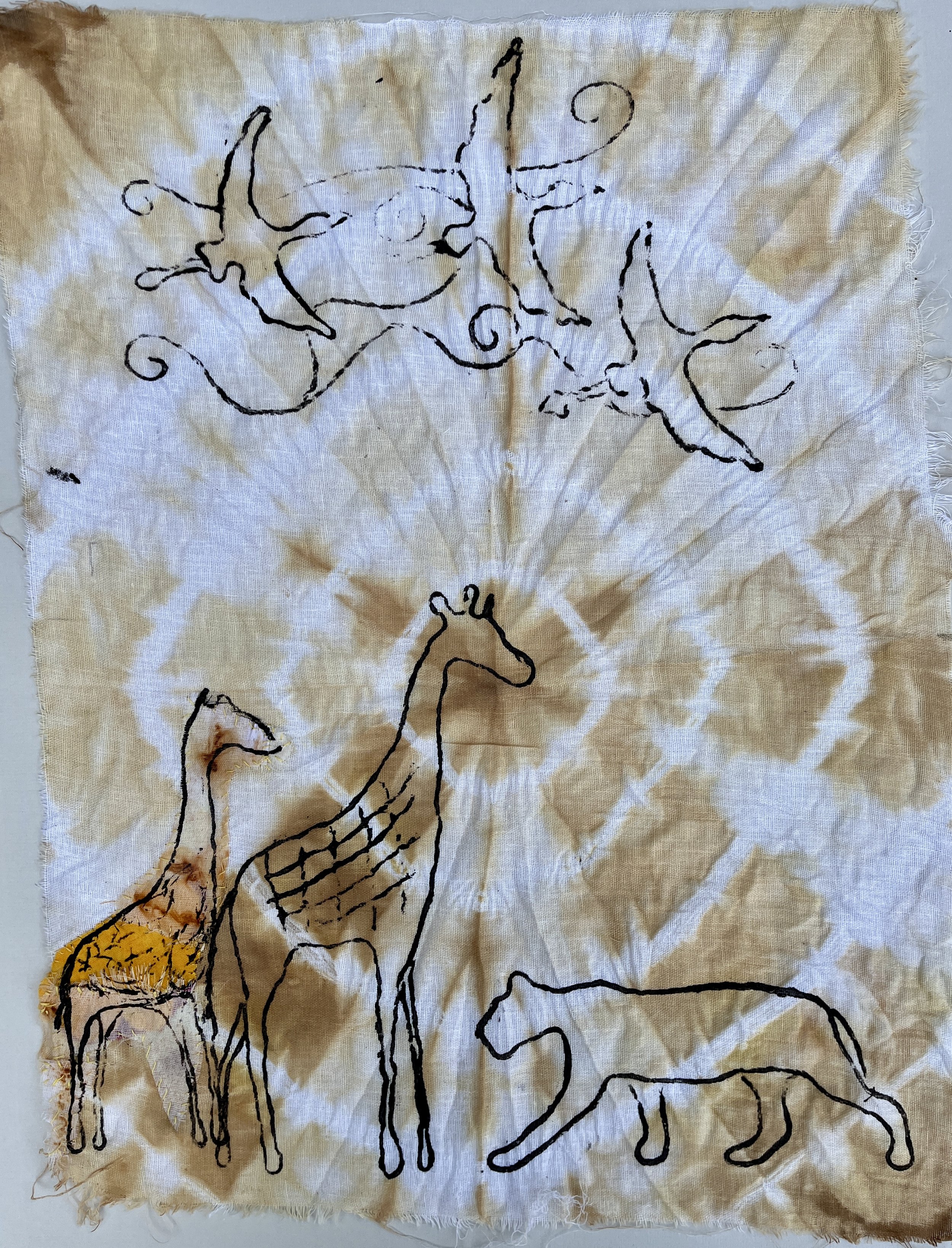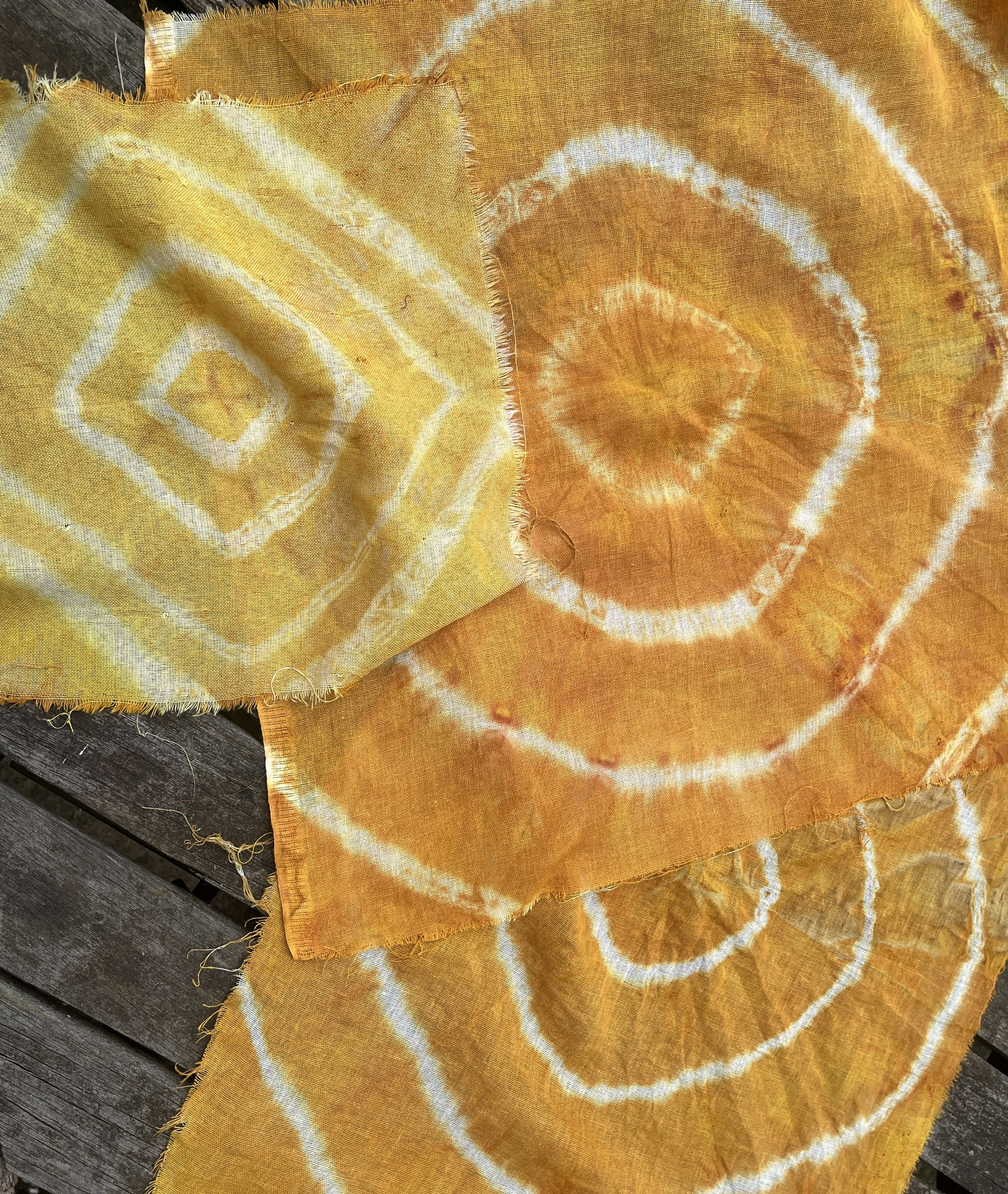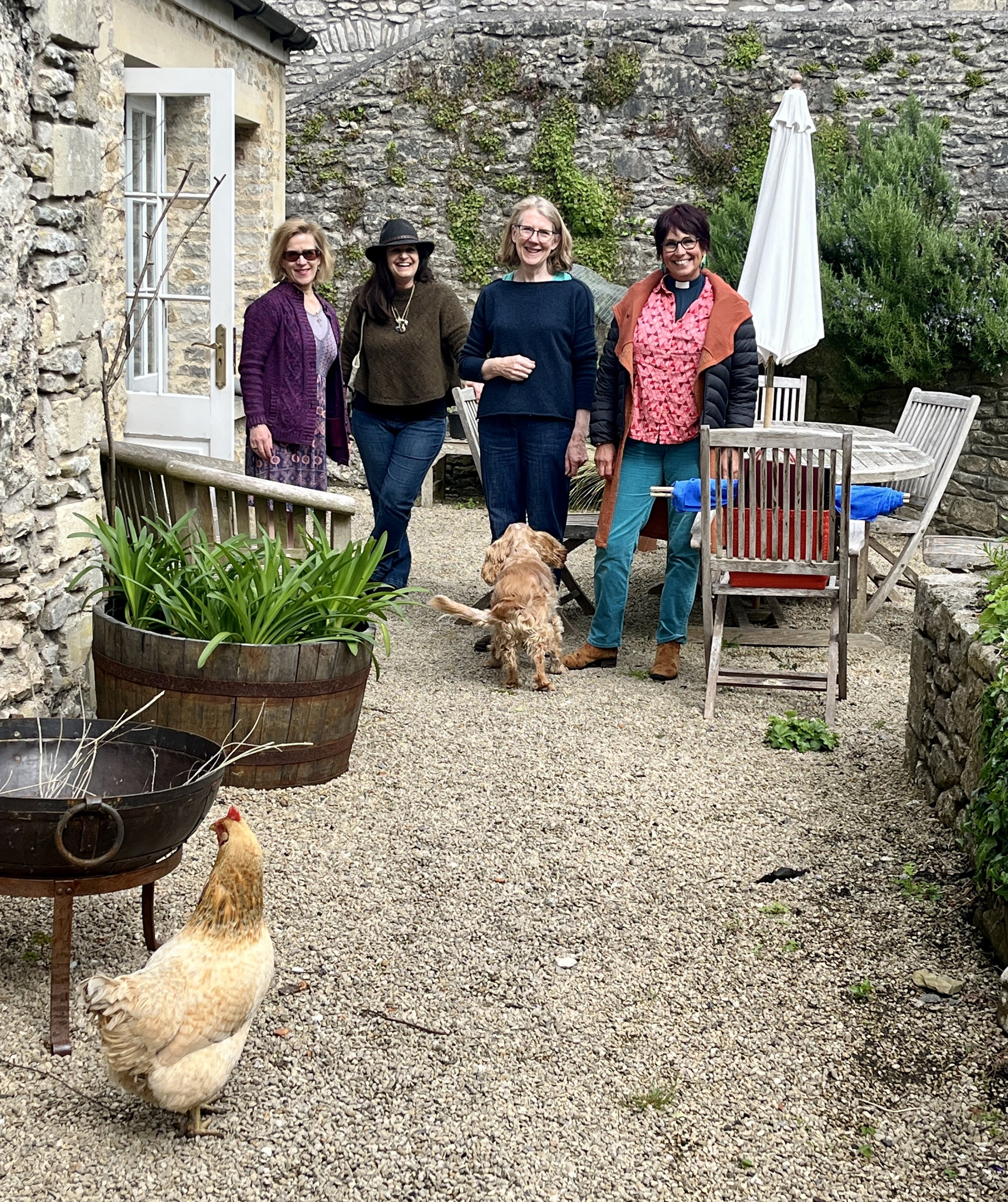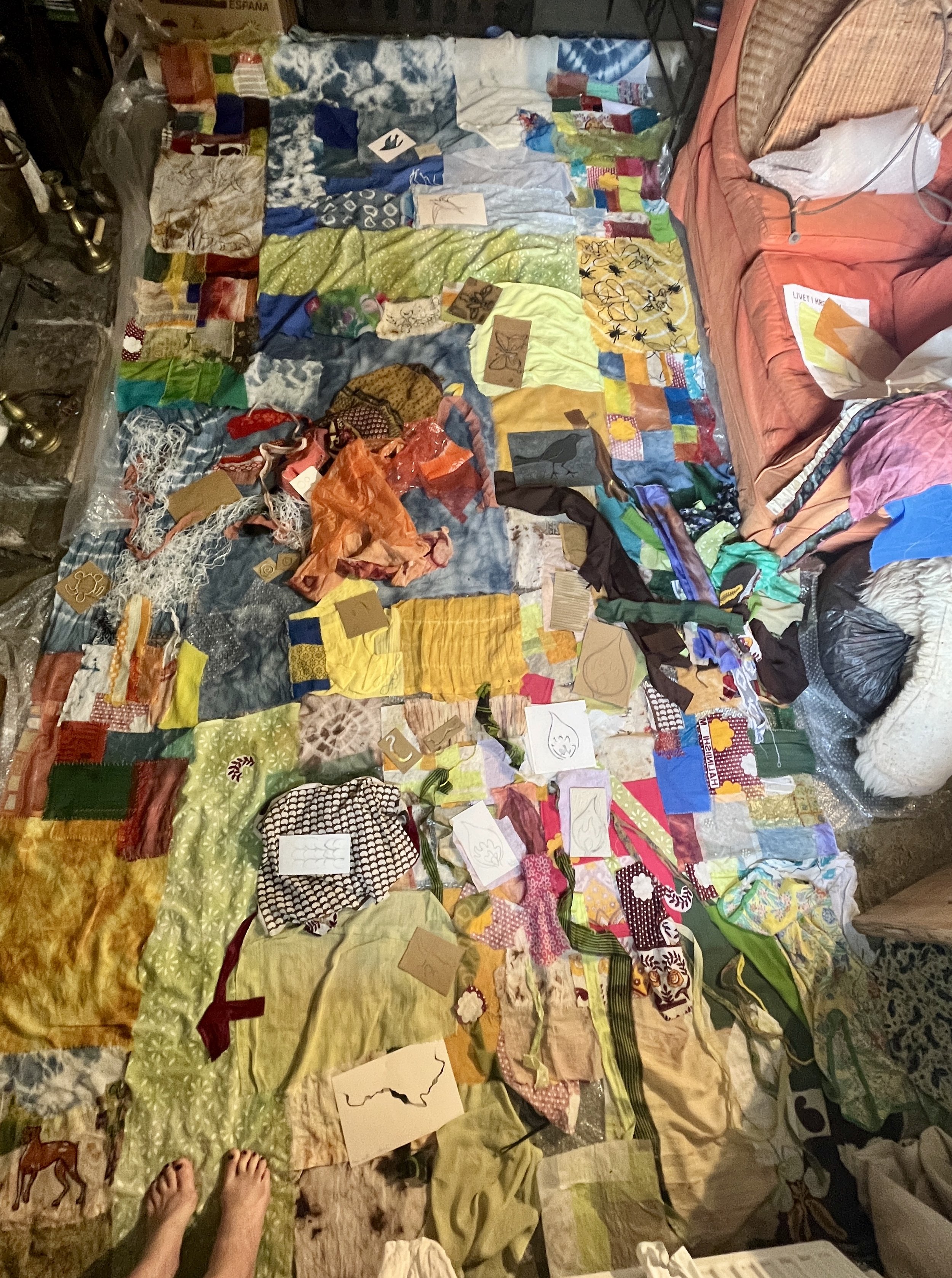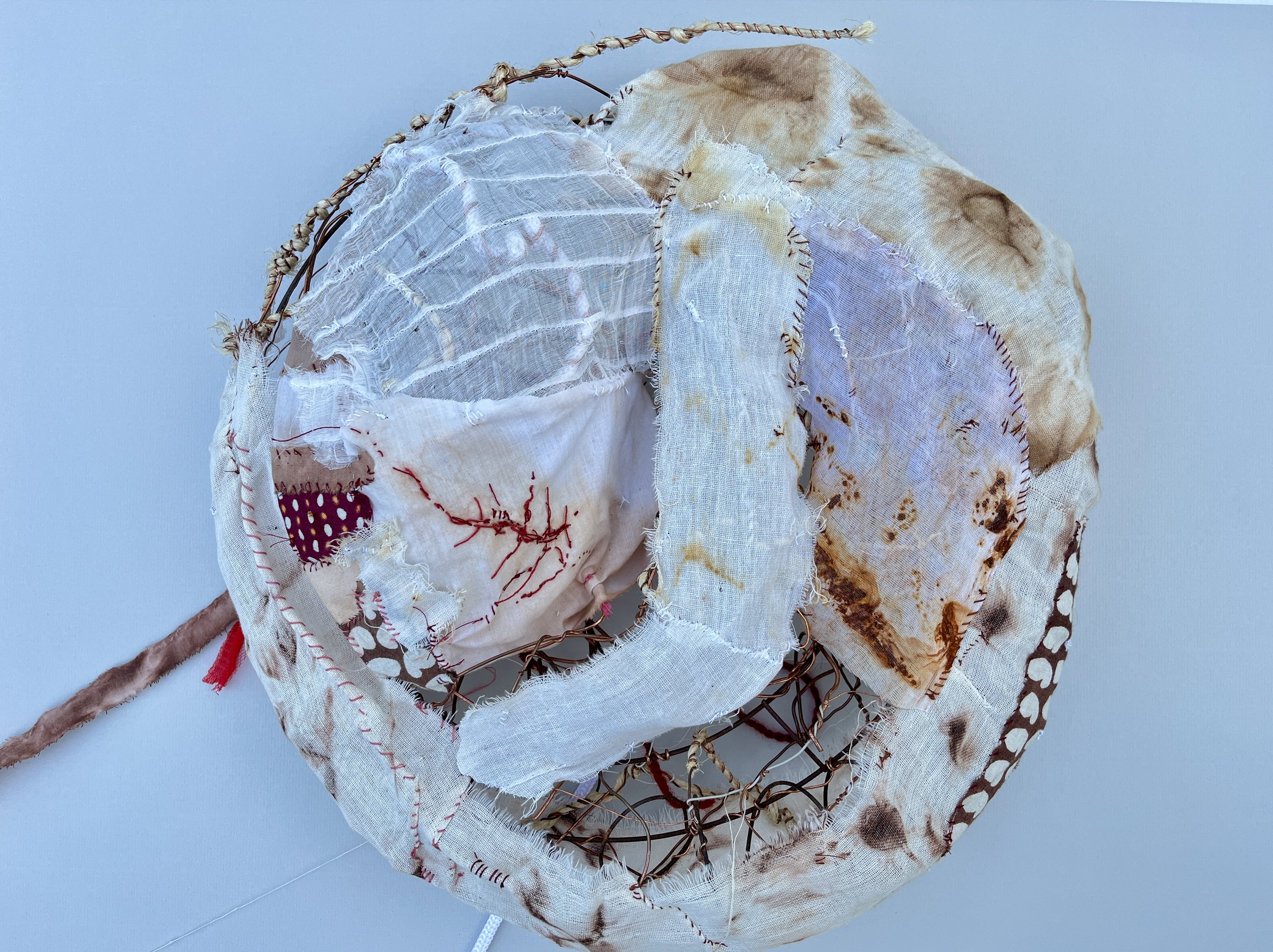Flags of the Forest, photo by Russell Sach
I’ll be recreating Flags of the Forest at the Seed Creative Popup, Shop 8, Angel Place Shopping Centre, Bridgwater TA6 3TQ, open to all April 8-13th, 10.30am-4pm.
An immersive installation made from reclaimed and botanically-dyed fabric, wood, metal, and other found materials, the work was originally created at Tremenheere Sculpture Gardens, Cornwall. The eco-flags celebrate the biodiversity of woodlands in hope for a thriving natural world. Visitors can walk among the soft hangings and hard lines, experiencing the interplay of art and sustainability. There will also be a soundscape by Ushara Dilrukshan, adding another layer to the sculptural assemblage.
Alongside the exhibition, I’ll be running a free drop-in workshop on Saturday 12th April, 11am-2pm at the Popup. Be inspired by the installation and enjoy a relaxed, creative space where you can let your imagination wander. The workshop will entail weaving, wrapping and hand-stitching using a combination of recycled textiles and found plant debris to make mini soft hangings. Suitable for ages 6+ (children accompanied by an adult). No need to book.
It would be lovely to see you there!
Riot is developing for One Island - Many Visions. (Above - work in progress: second of a 2-part piece inspired by Sunburst Maritime Lichen (Xanthoria) growing on rocks at Tout Quarry, Portland). I’m creating the work from hand-stitched and woven recycled/waste materials including botanically dyed textiles, wire and beach litter. The multiple layers will be assembled together and exhibited on the rocks at Tout Quarry. Riot is a site-responsive wearable sculpture; each of the 2 parts will be worn and performed during the exhibition (6 September - 31 October). See my previous blog post for the first part of Riot.
Lichens are ancient life forms in symbiosis, composite organisms of algae, cyanobacteria and fungi, exchanging nutrients for minerals and water. Symbiosis is the rule rather than exception in nature. I’m reading a book I Contain Multitudes: the microbes within us and a grander view of life (Ed Yong). In fascinating detail it reaffirms the notion that we are not single individuals but ecosystems, all connected. I’m learning a lot about the microbial kingdom, the ‘messy, fractious, contextual relationships of the natural world’, surprising connections between living beings, and new terms: symbiogenesis, endosymbiosis, holobiont…
I’ve been doing a lot of teaching lately. Pics below of work by participants from my recent Sketchbooking and Eco Sculpture Courses:
and a few by schoolchildren Years 2-6, St Joseph and St Teresa's Primary on the theme of Pollinators:
Upcoming Courses:
Creative Sketchbooking: Wednesdays 2-4pm 5 weeks starting 23 April; 23/4, 30/4, 7/5, 14/5, 21/5; Makers’ Yard, 37 Lower Keyford, Frome BA11 4AR. £60 + £5 materials. BOOK: here
Eco Sculpture: Wednesdays 2-4pm 5 weeks starting 4 June; 4/6, 11/6, 18/6, 25/6, 2/7; Makers’ Yard, 37 Lower Keyford, Frome BA11 4AR. £60 + £5 materials. BOOK: here
I have a strong connection with Black Swan Arts, an important cultural hub in Frome. I’ve shown in the galleries several times over the years, ran workshops, been part of the 30 years anniversary events, and also shown children’s art in the Young Open there through my teaching. I was a trustee for several years, and later on the Programming Committee. A piece I created in collaboration with Angela Morley is still mounted on the Round Tower. The Arts Centre is currently struggling to keep going due to high bills and lack of funding, so they are fundraising. If you are able to support please do, it’s vital to keep this amazing Art Centre alive.
